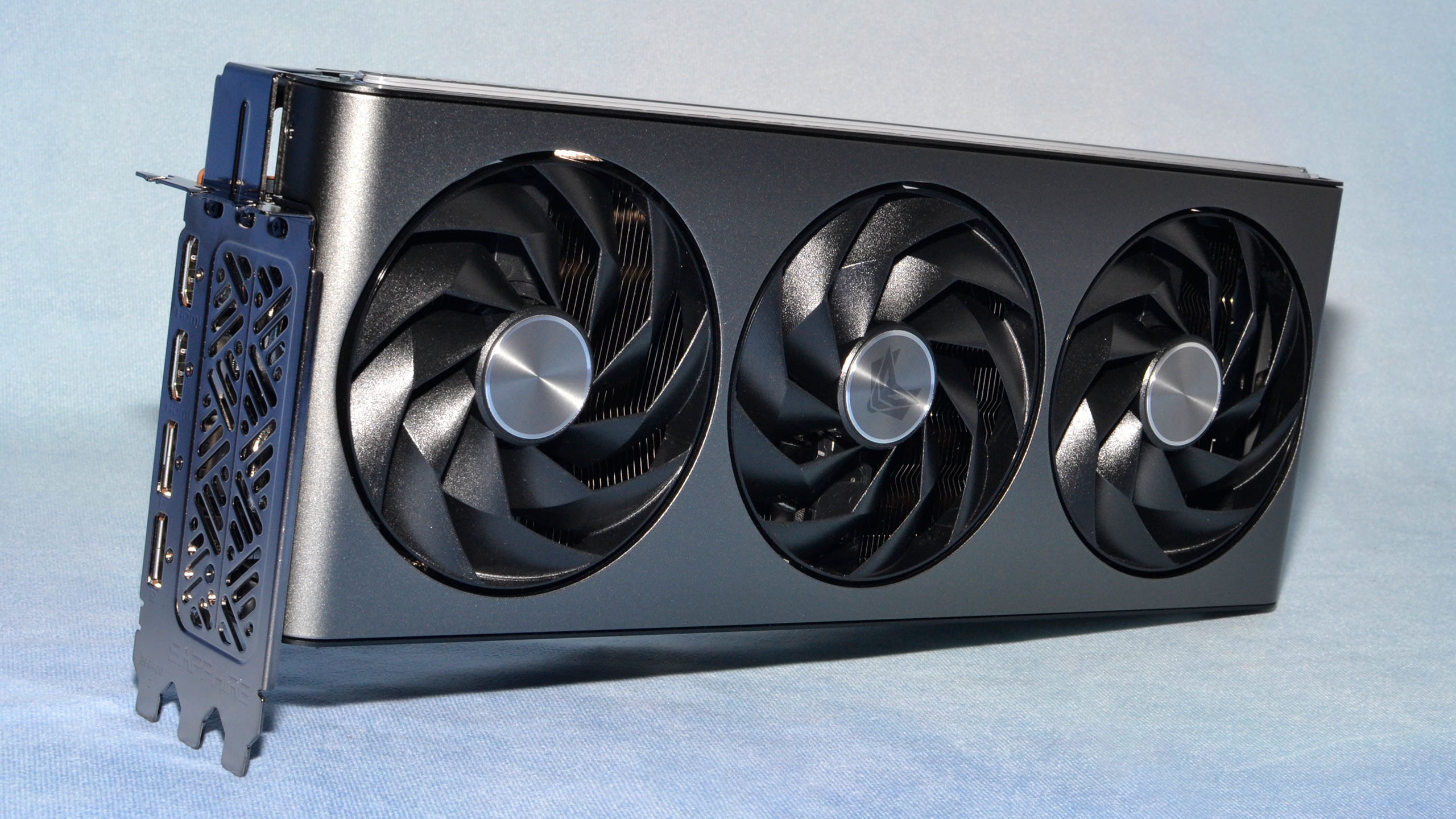Why you can trust Tom's Hardware
Since the Nitro+ represents a third-party post-launch review, rather than a newly released GPU, we're going to condense all of our gaming performance results onto a single page. We'll work through the 1440p, 1080p, and 4K results in that order, with 1440p arguably being the most important battle ground for this level of hardware.
For each resolution and setting, we have a gallery of 22 charts. The first gives the overall geometric mean for our 19 game test suite, so each game gets equal weight in the score. Then we'll have separate rasterization-only and DXR-only charts, using the geometric mean of the 11 and nine games, respectively. Finally, we'll have the 19 individual game charts, in alphabetical order. Games that have ray tracing enabled show as "(DXR)" while the rasterization games mostly use DirectX 12, with only a few exceptions.
Please note that while we use a geometric mean to give equal weighting, our test suite does have a higher proportion of DXR games than what you would see if you just took for example every major game release of the past year (and yes, we understand how nebulous the term "major release" is). We still feel that, in general, the improved image quality from DXR doesn't often justify the performance hit.
Besides full path tracing, RT reflections and global illumination tend to be the most visually impressive aspects, with shadows and ambient occlusion benefiting far less from the RT algorithms. The performance hit for only limited use of RT shadows can be much lower than for lots of reflections, but the visual gains also tend to be far less meaningful.
There are games where RT can make a noticeable and noteworthy difference in image fidelity, but there are also a lot of DXR games where it mostly tanks performance for minimal quality gains. We've tried to select DXR games where the improvements are more noteworthy, though we'll readily admit that Avatar and Diablo IV come up short in our view.
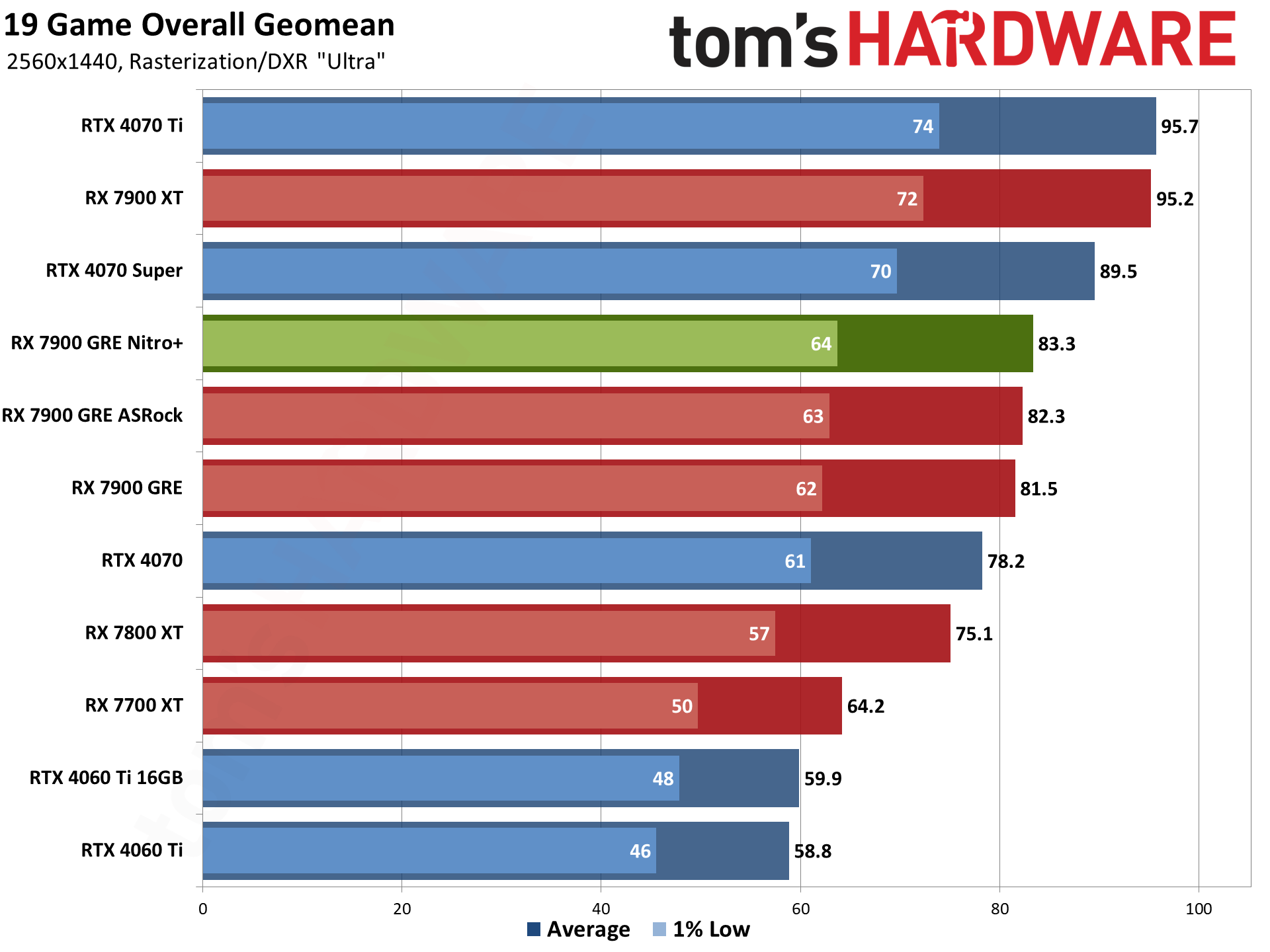
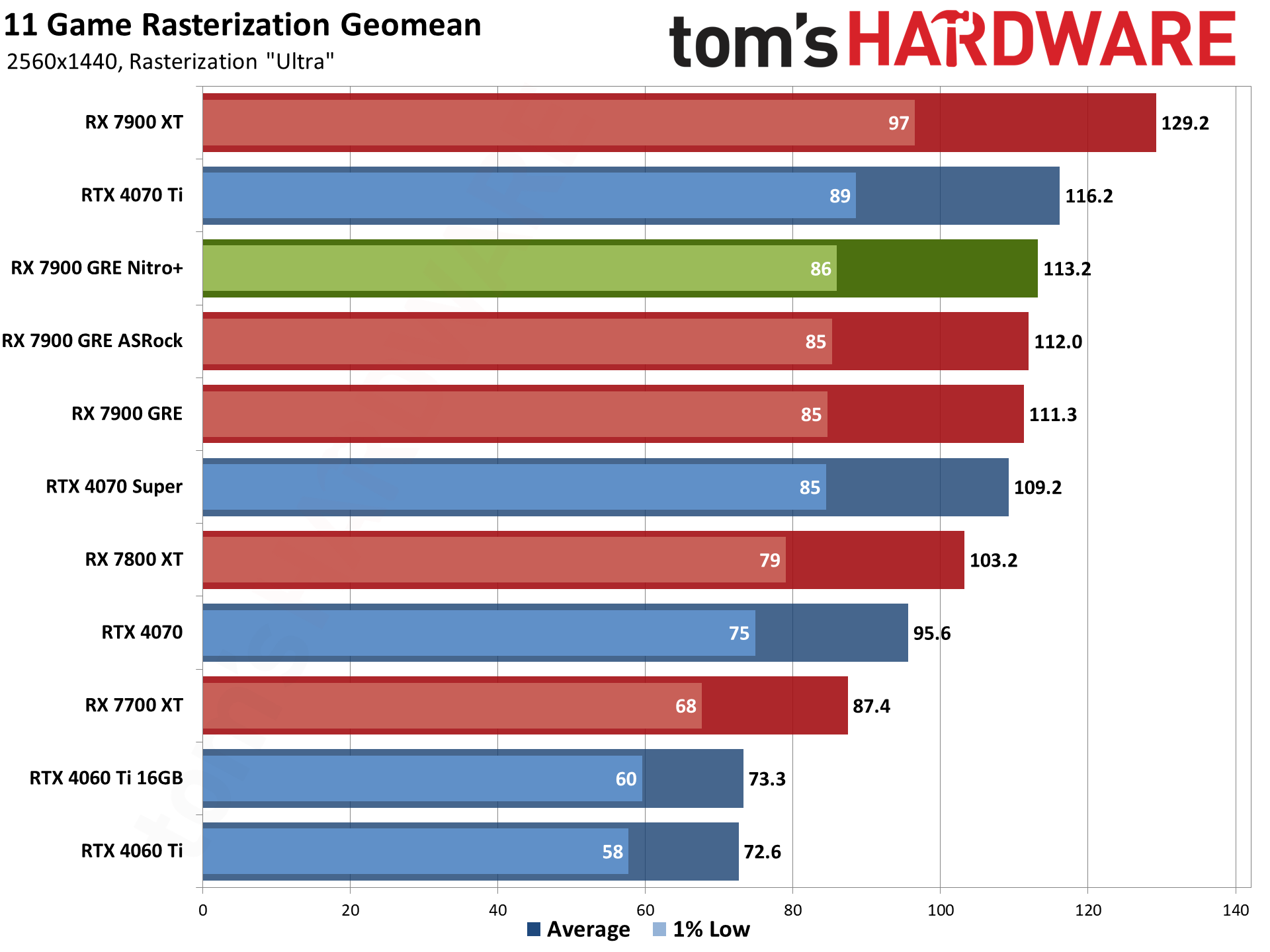
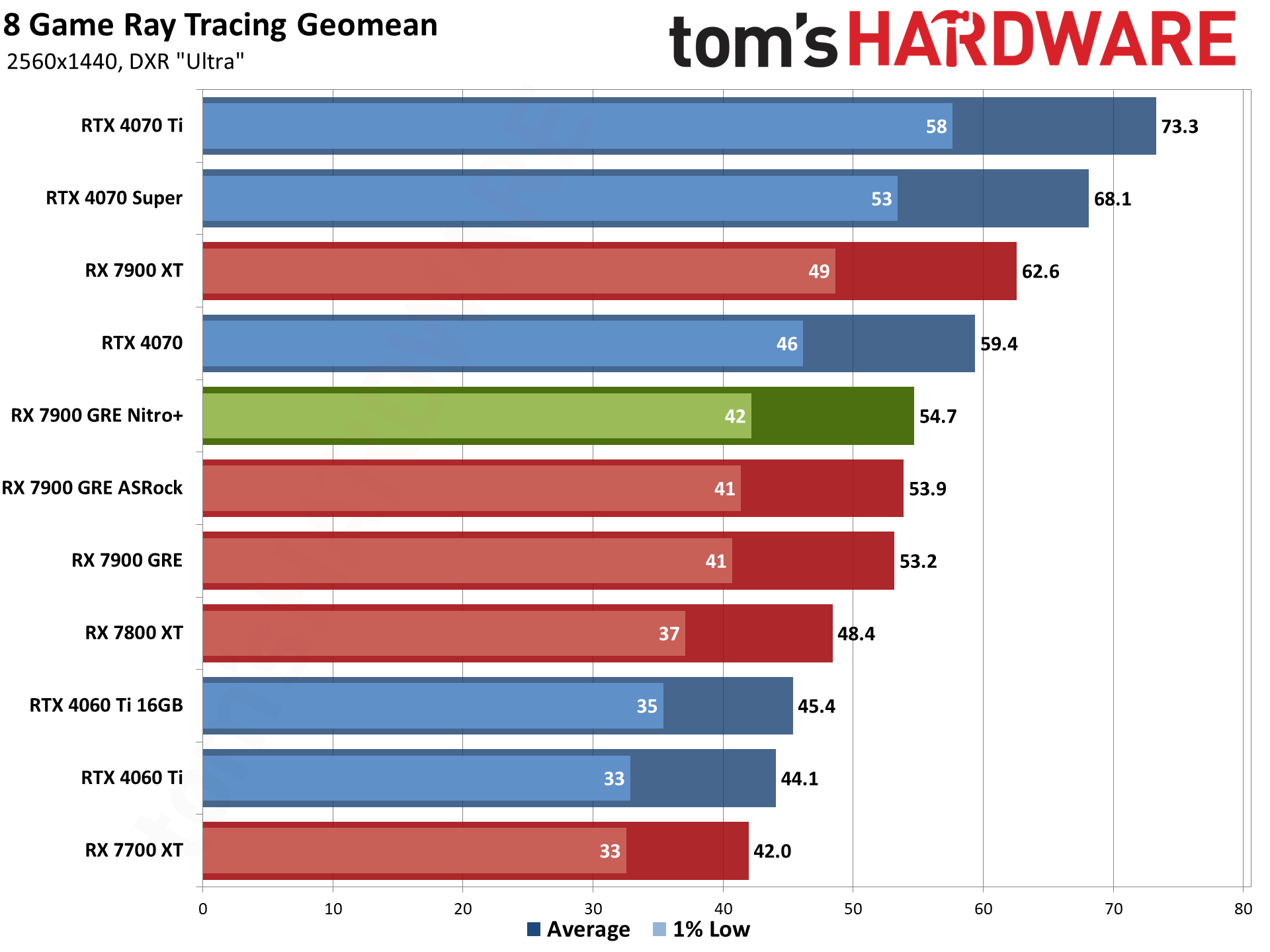
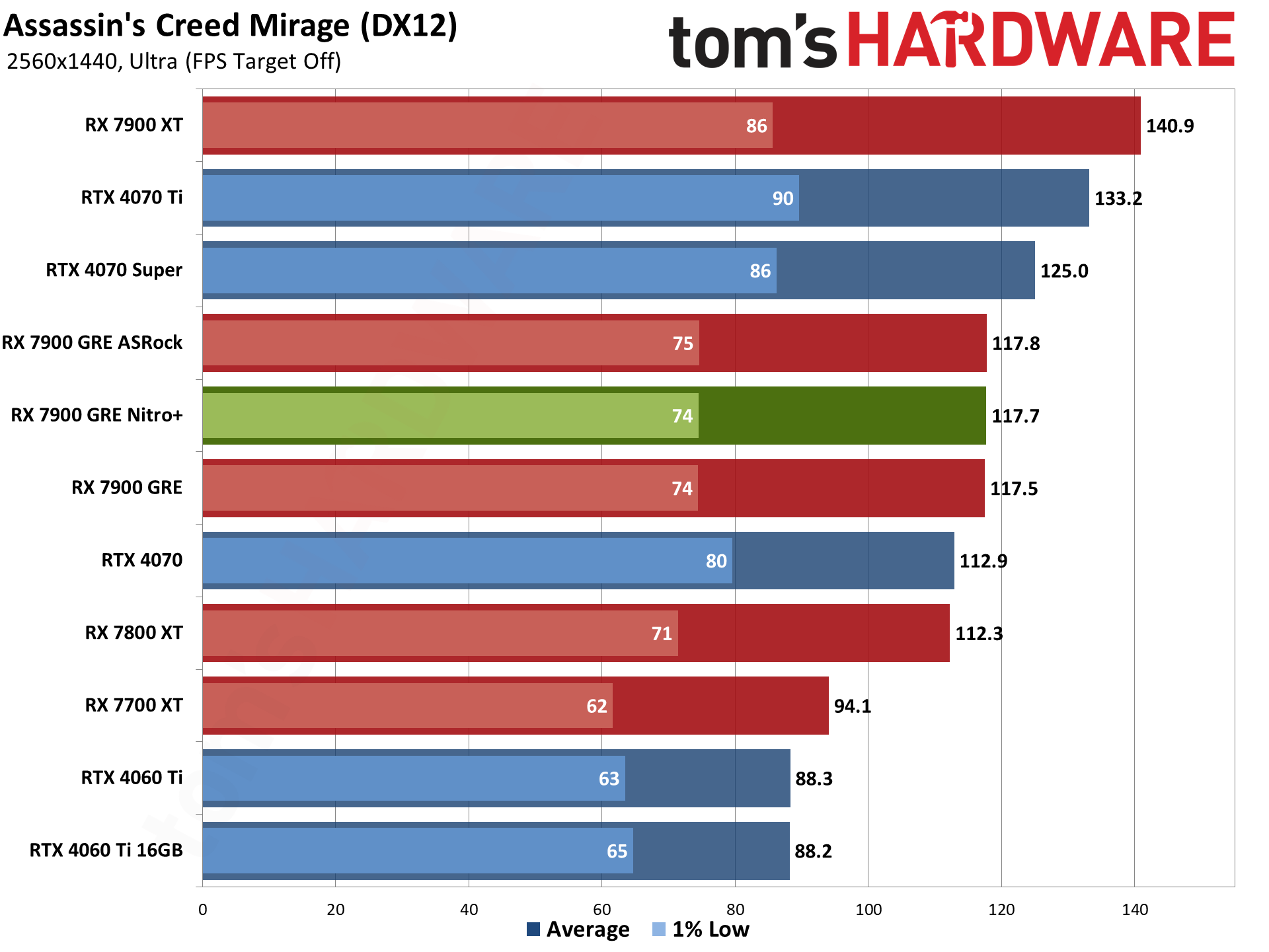


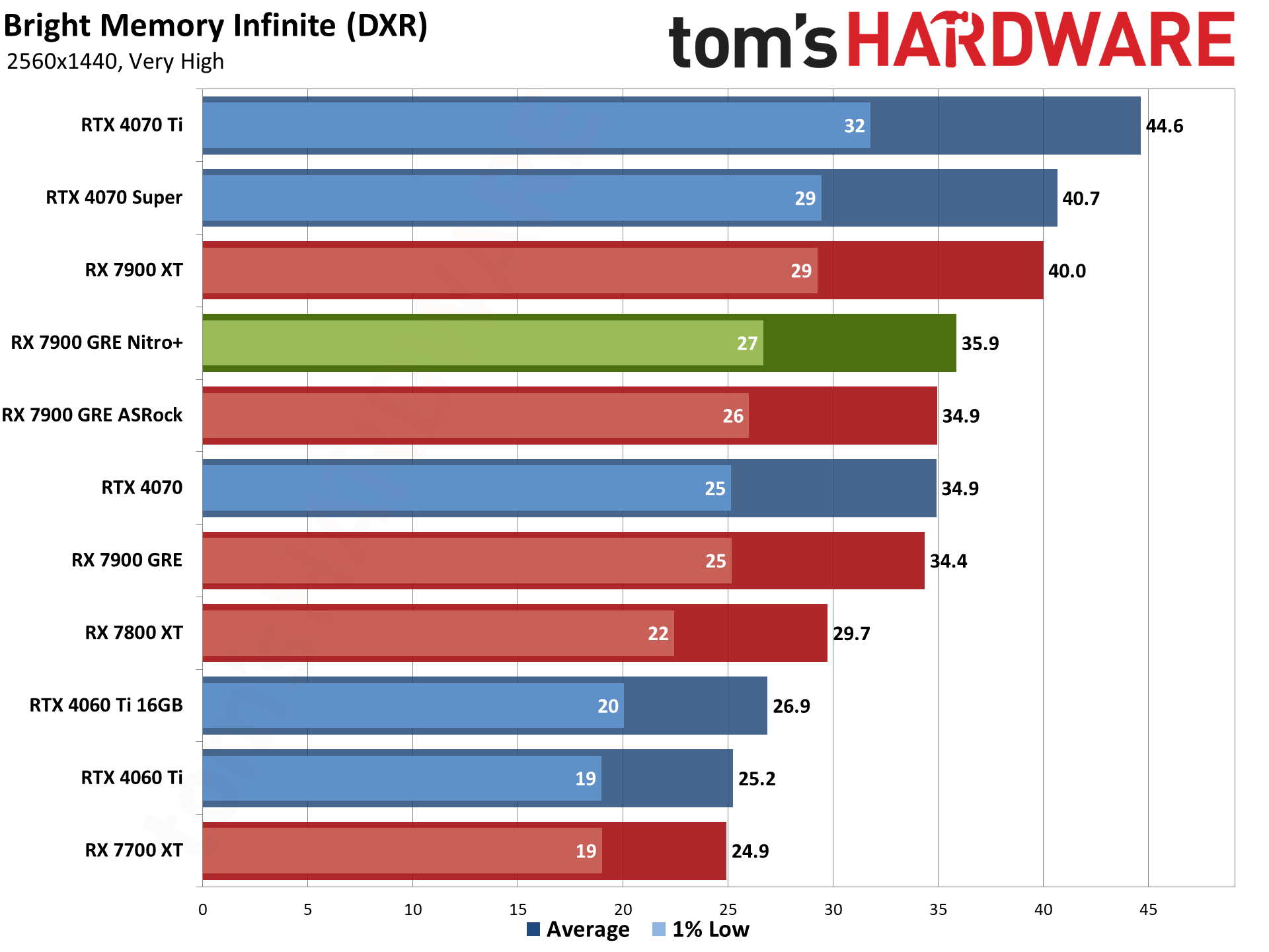
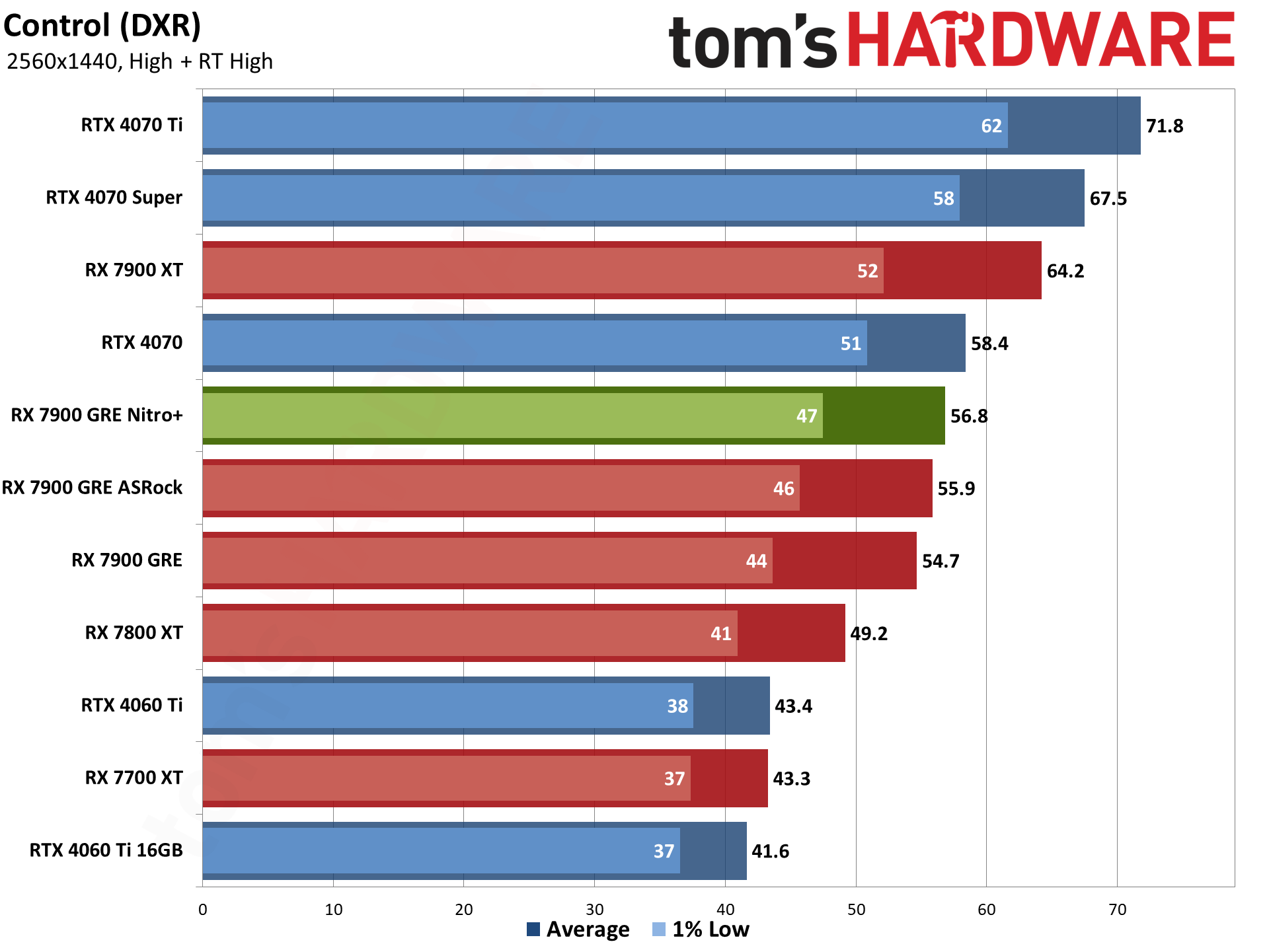
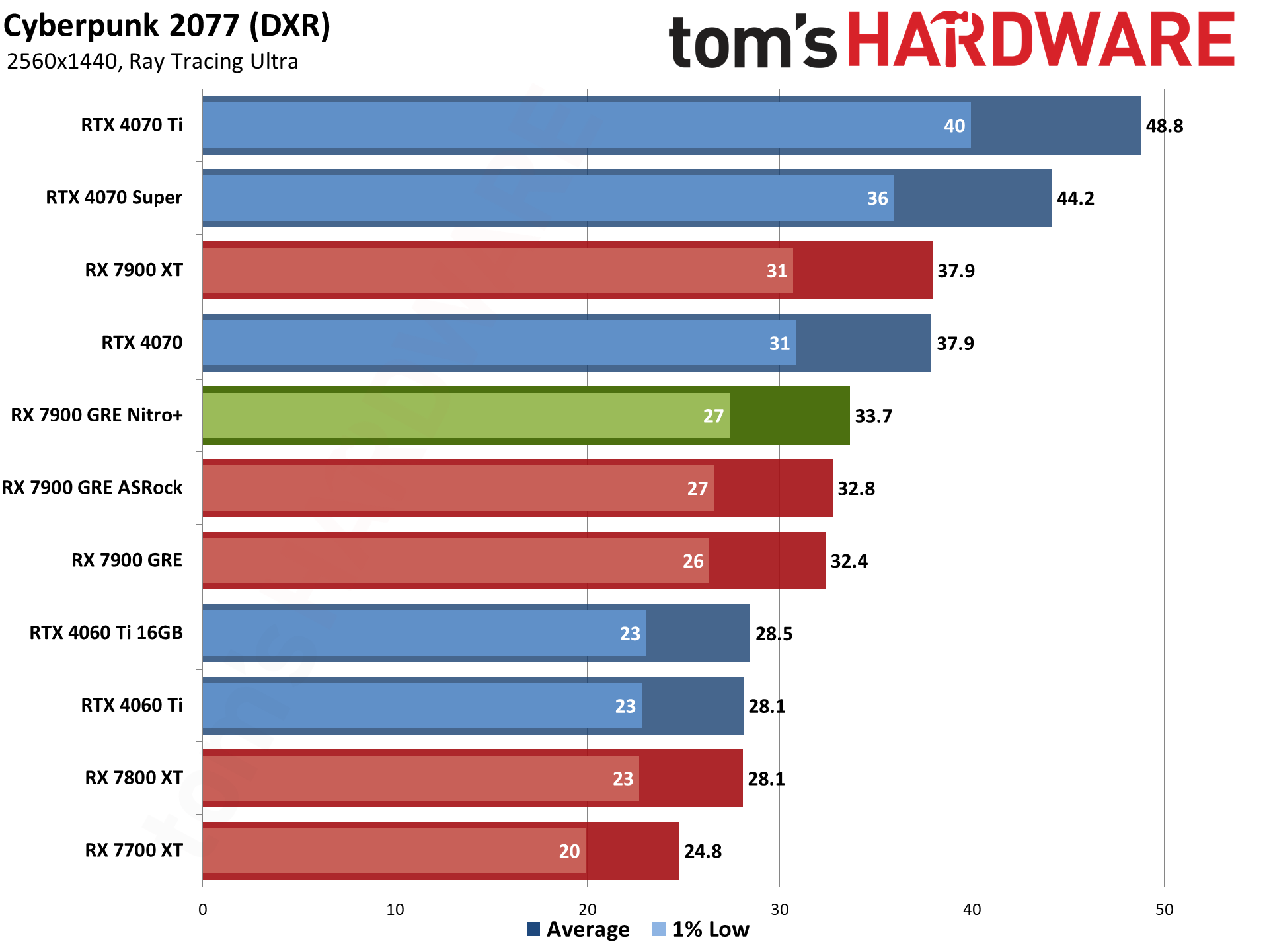
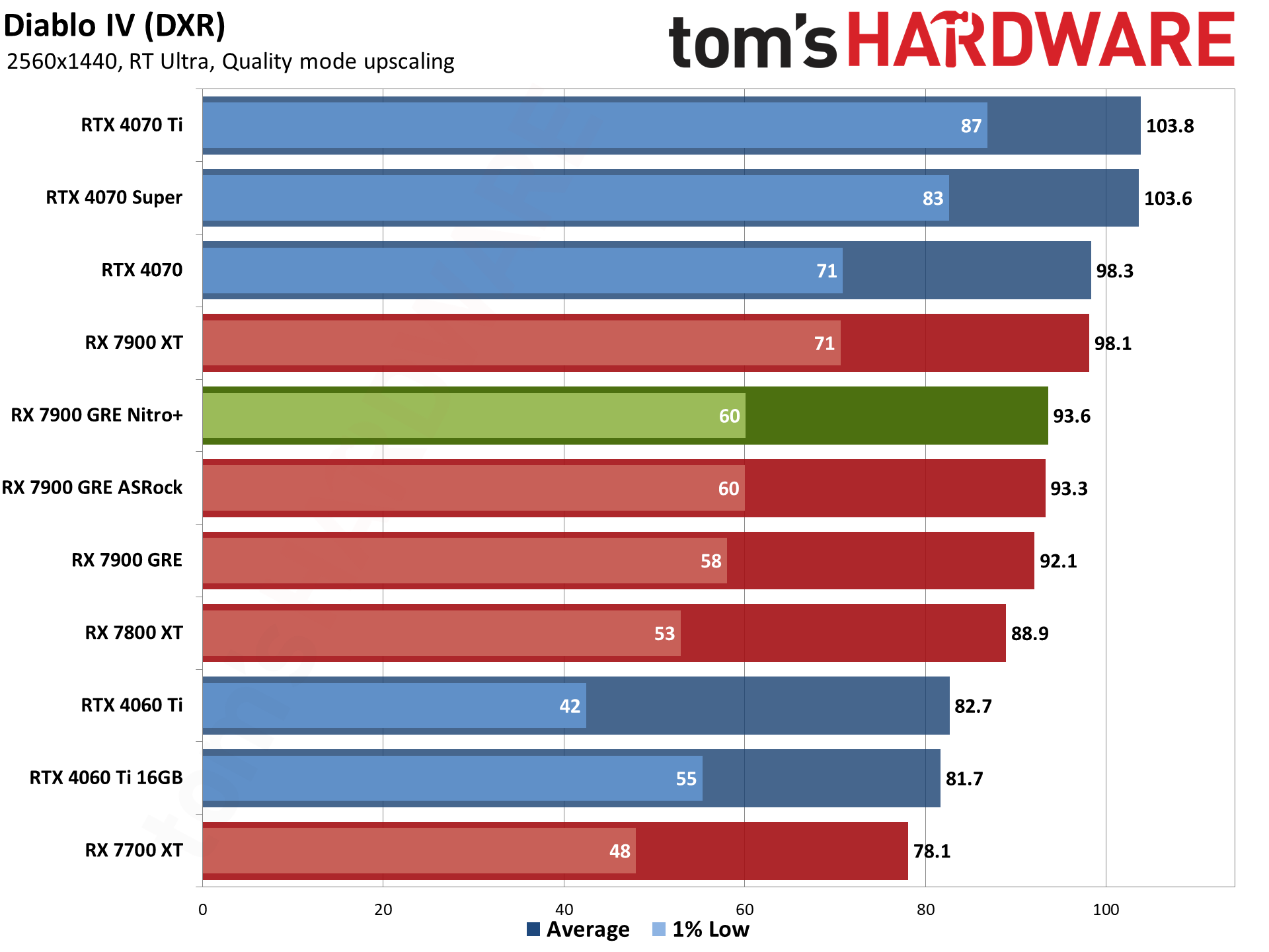
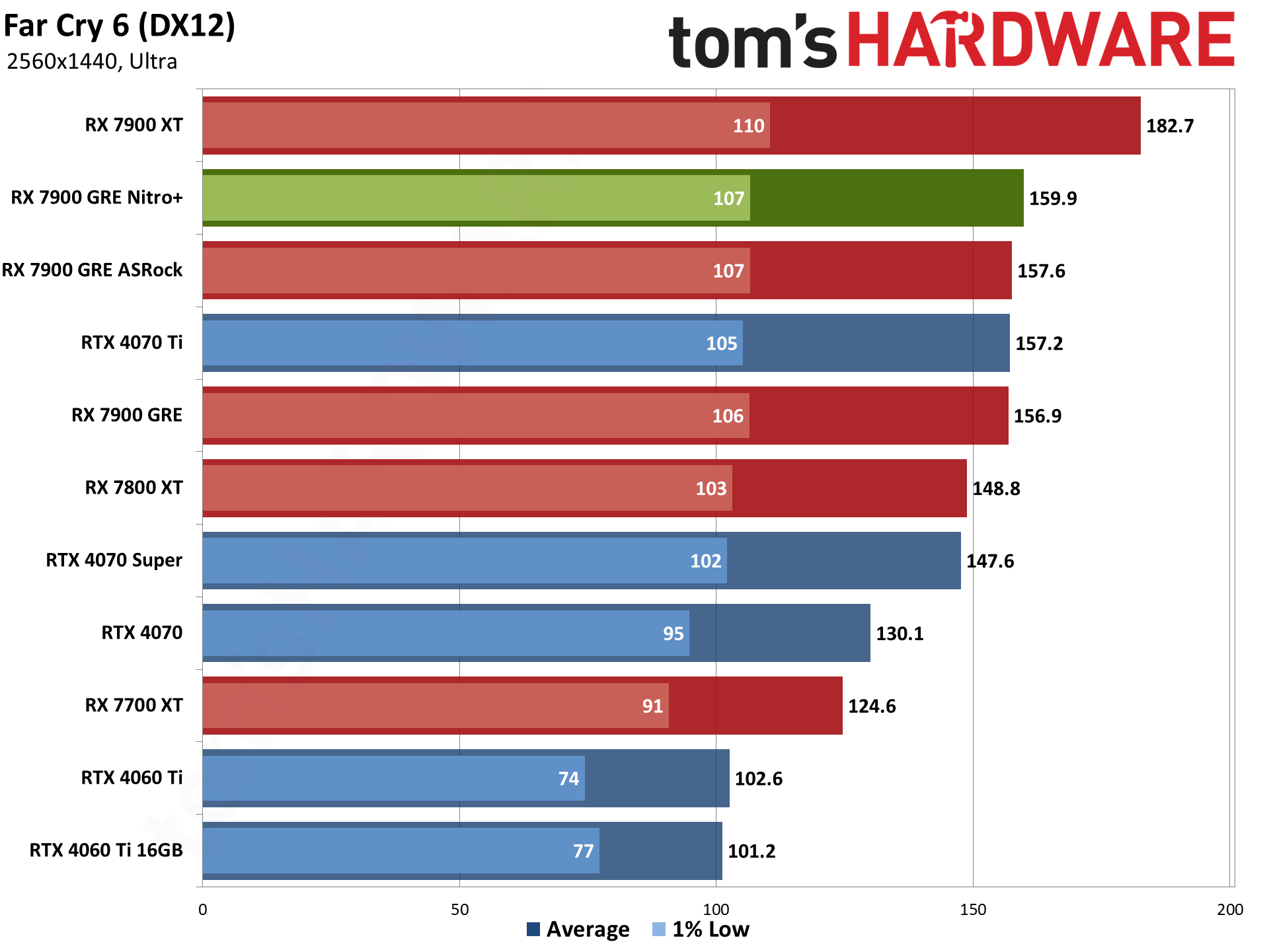

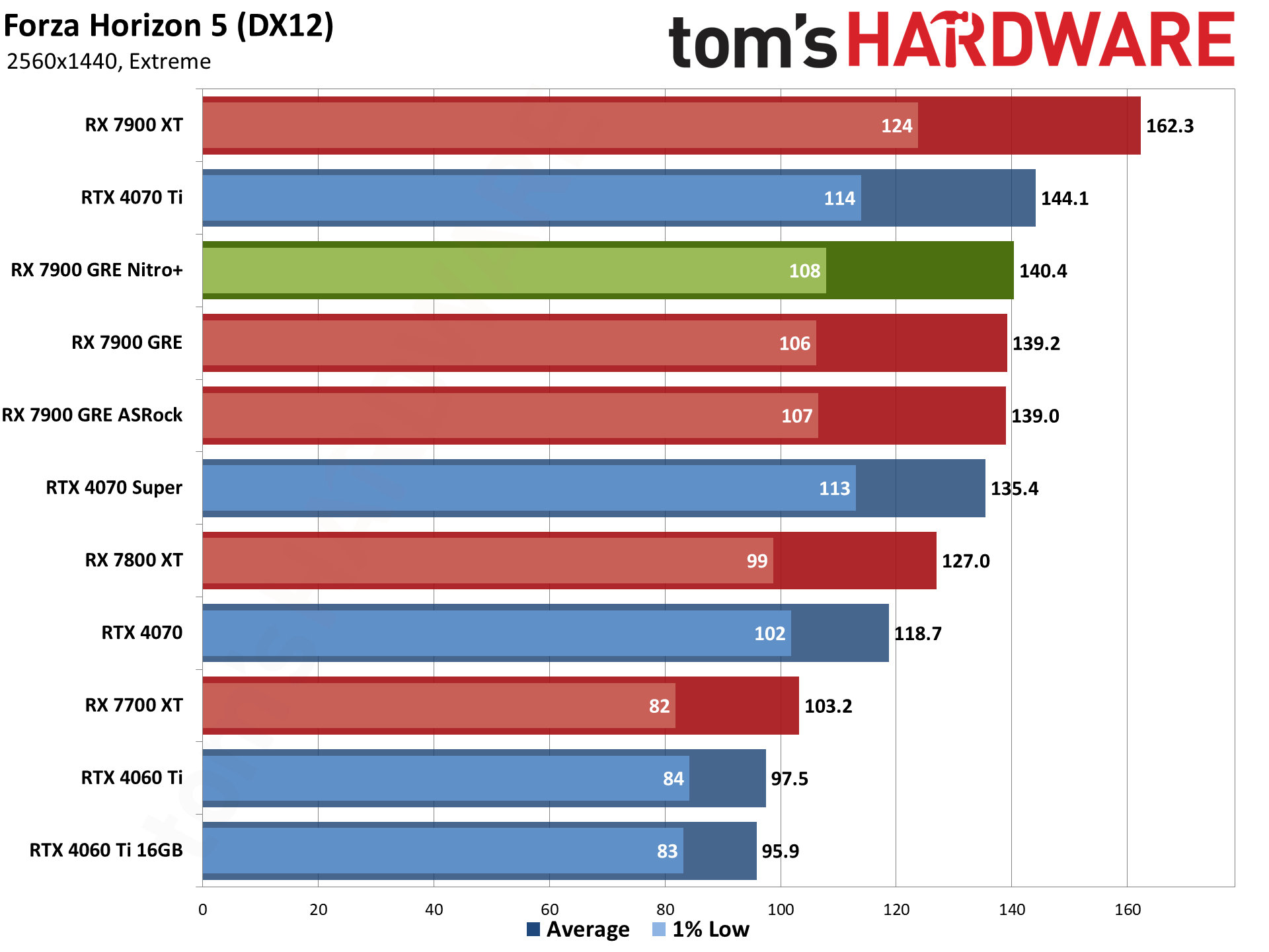
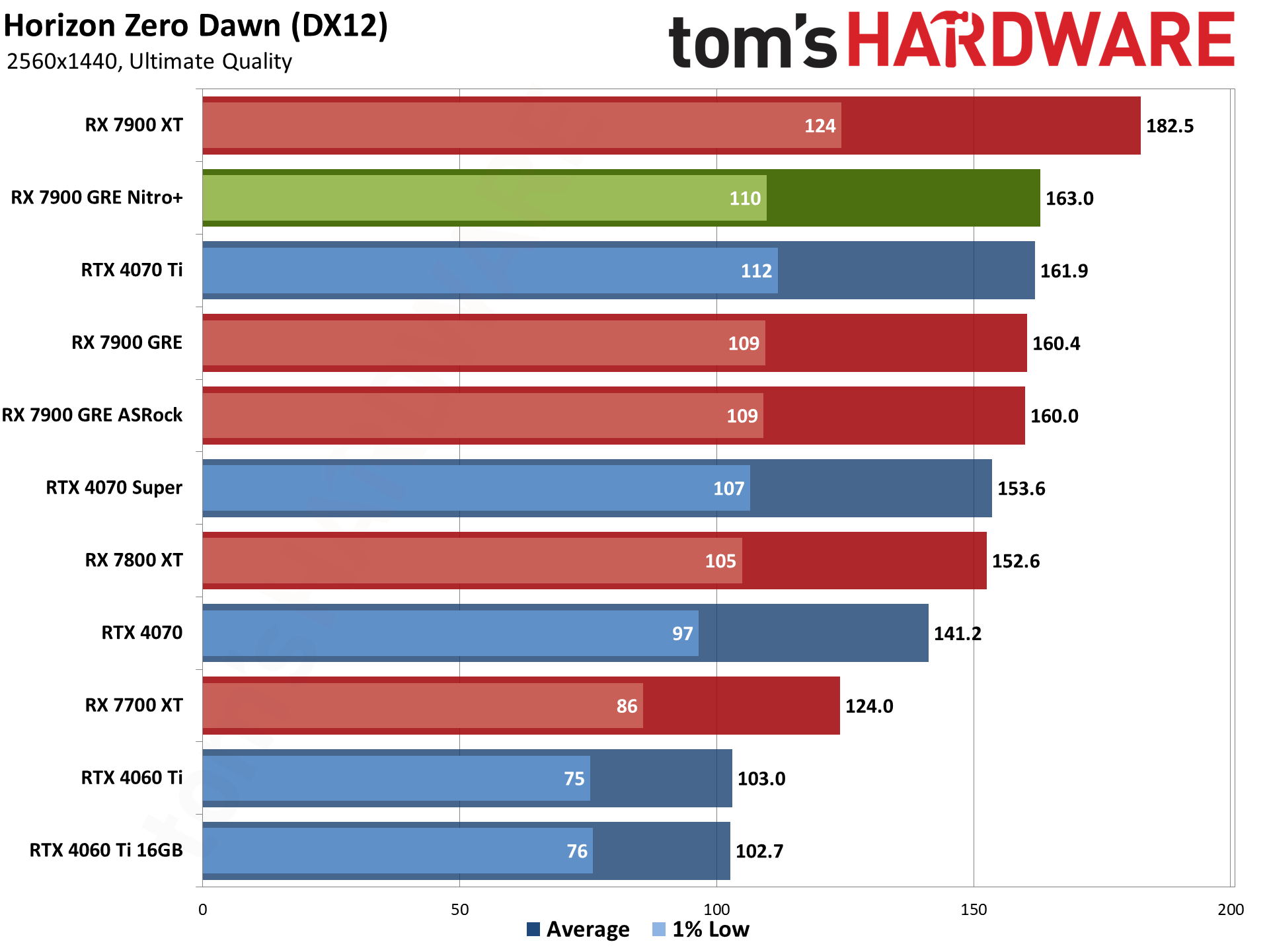
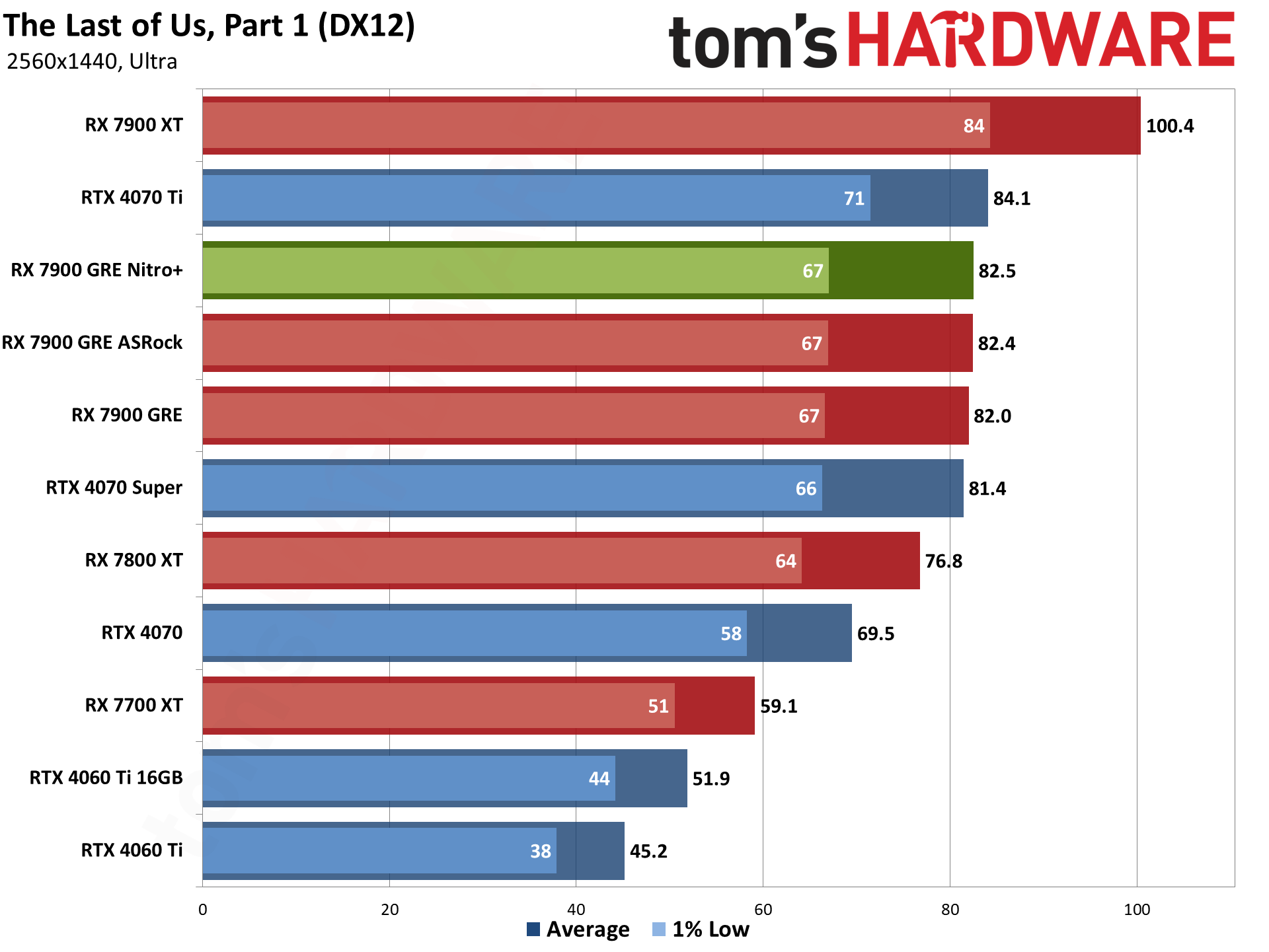
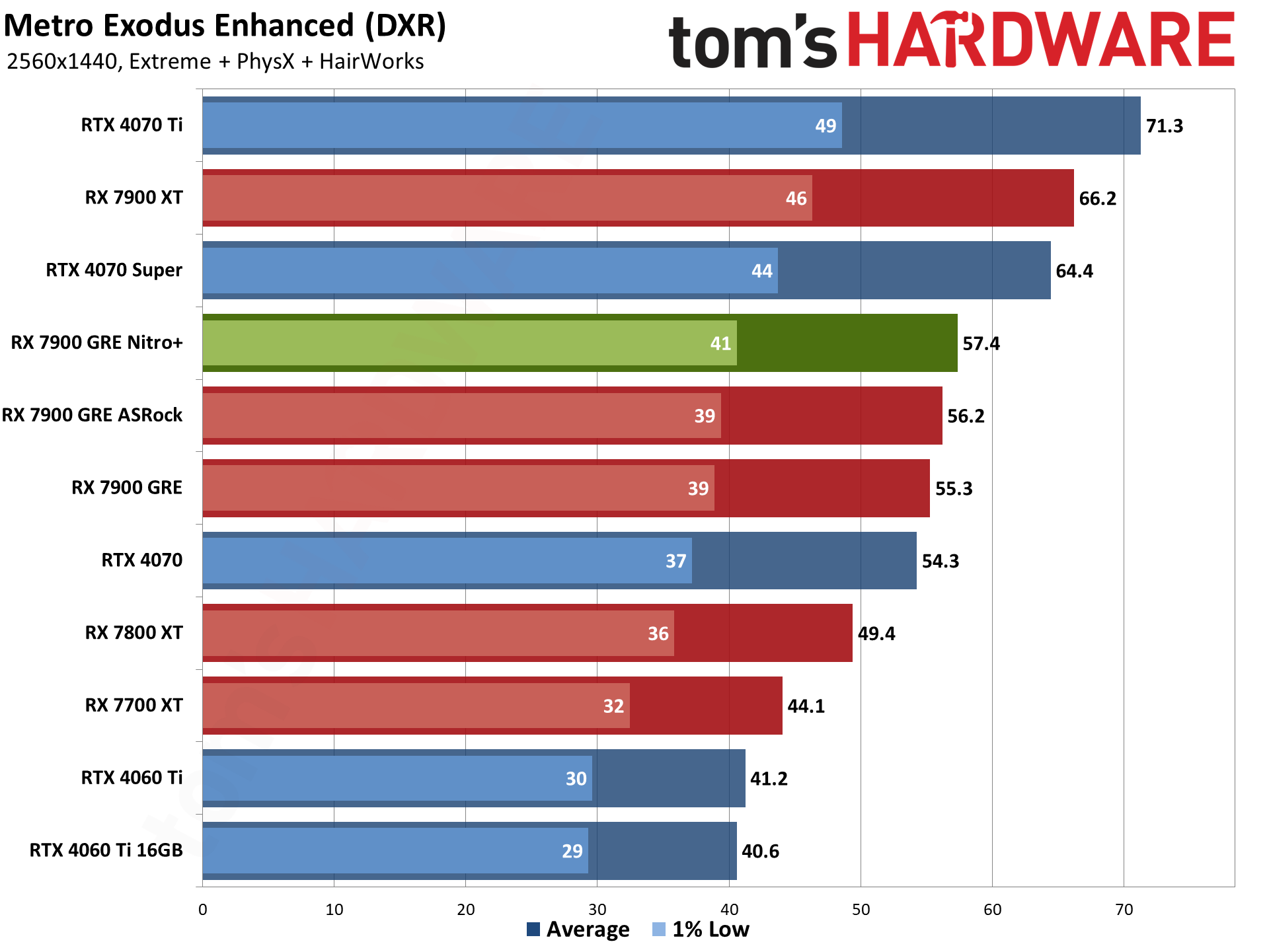
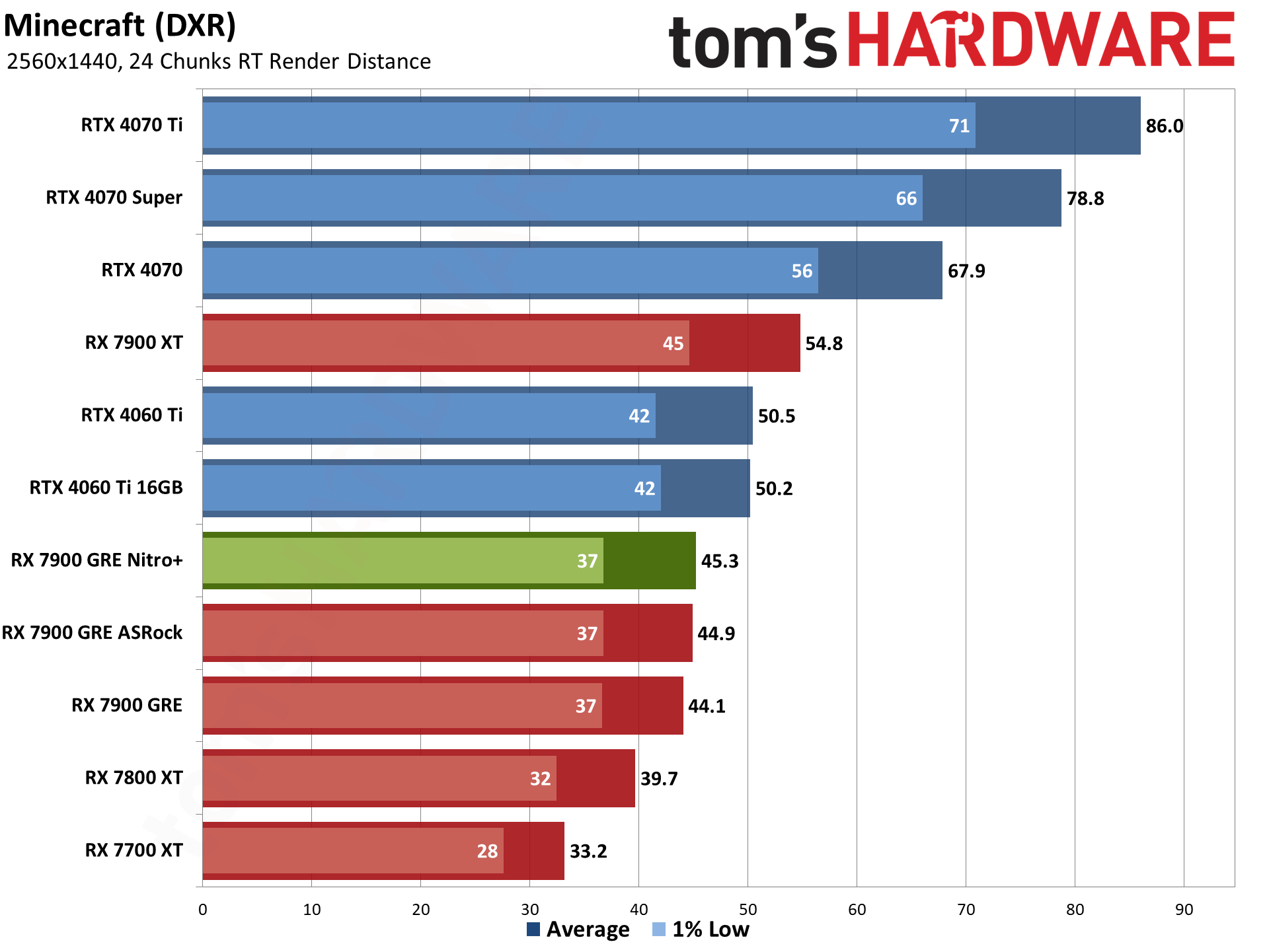


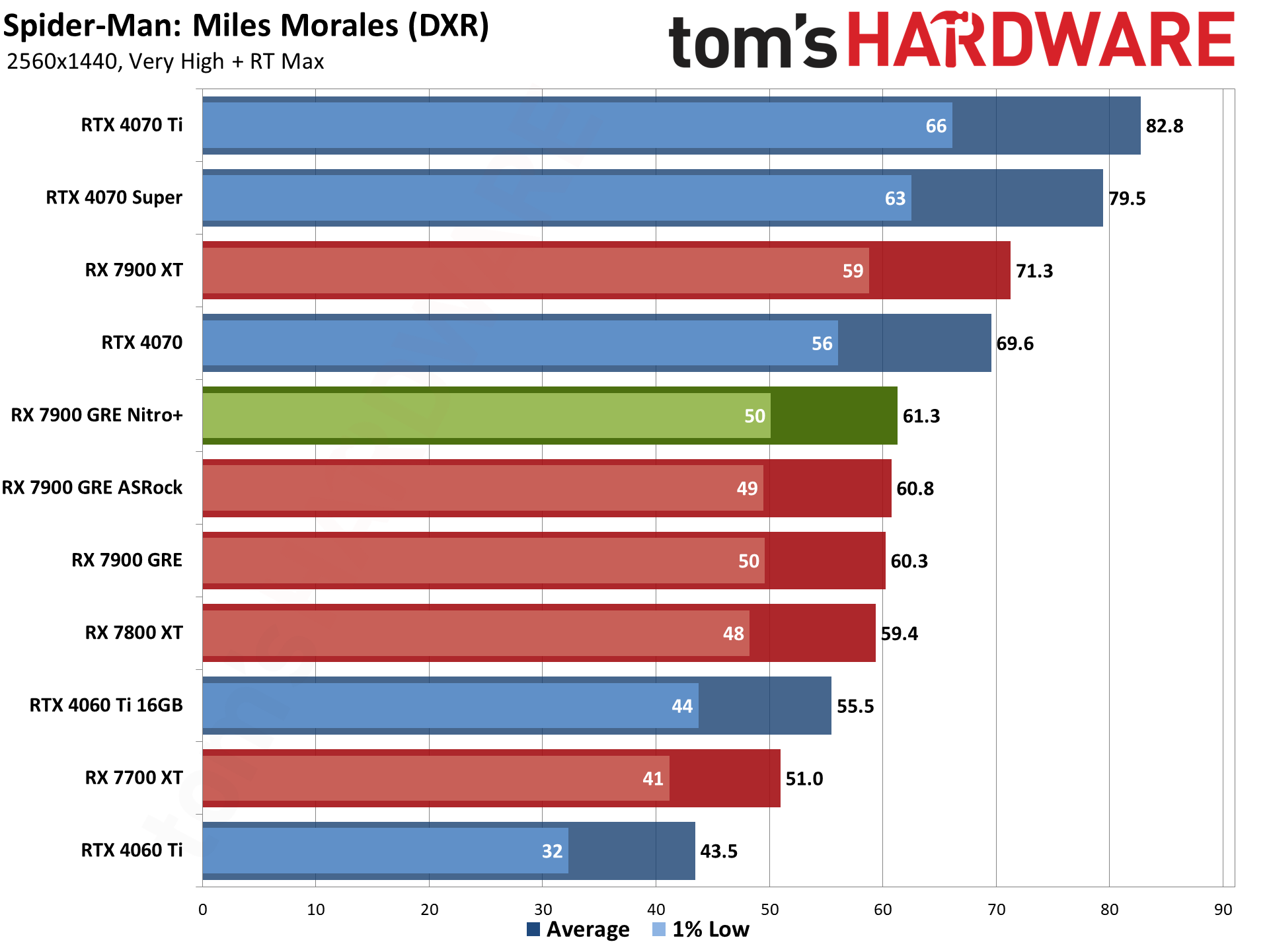
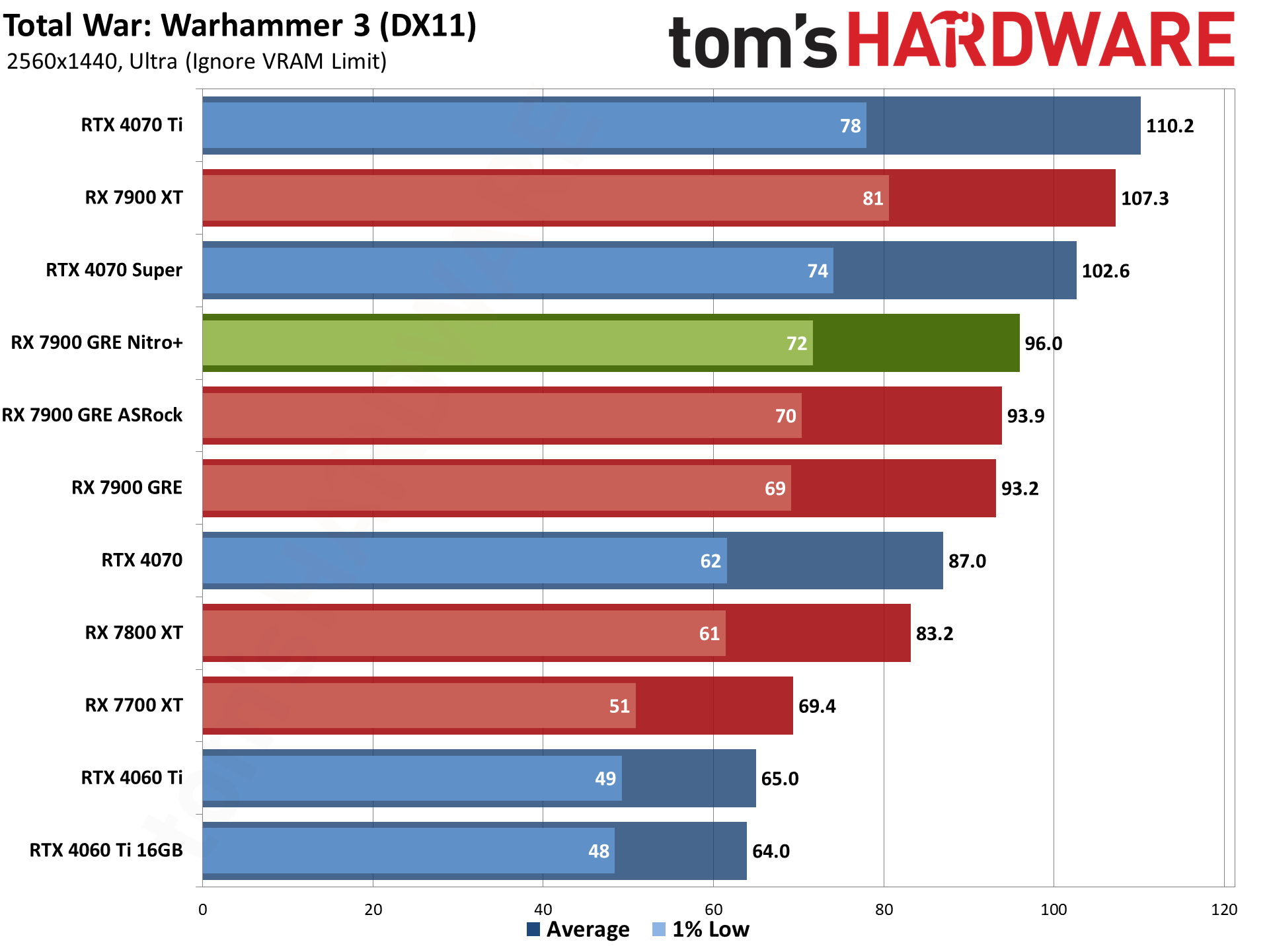
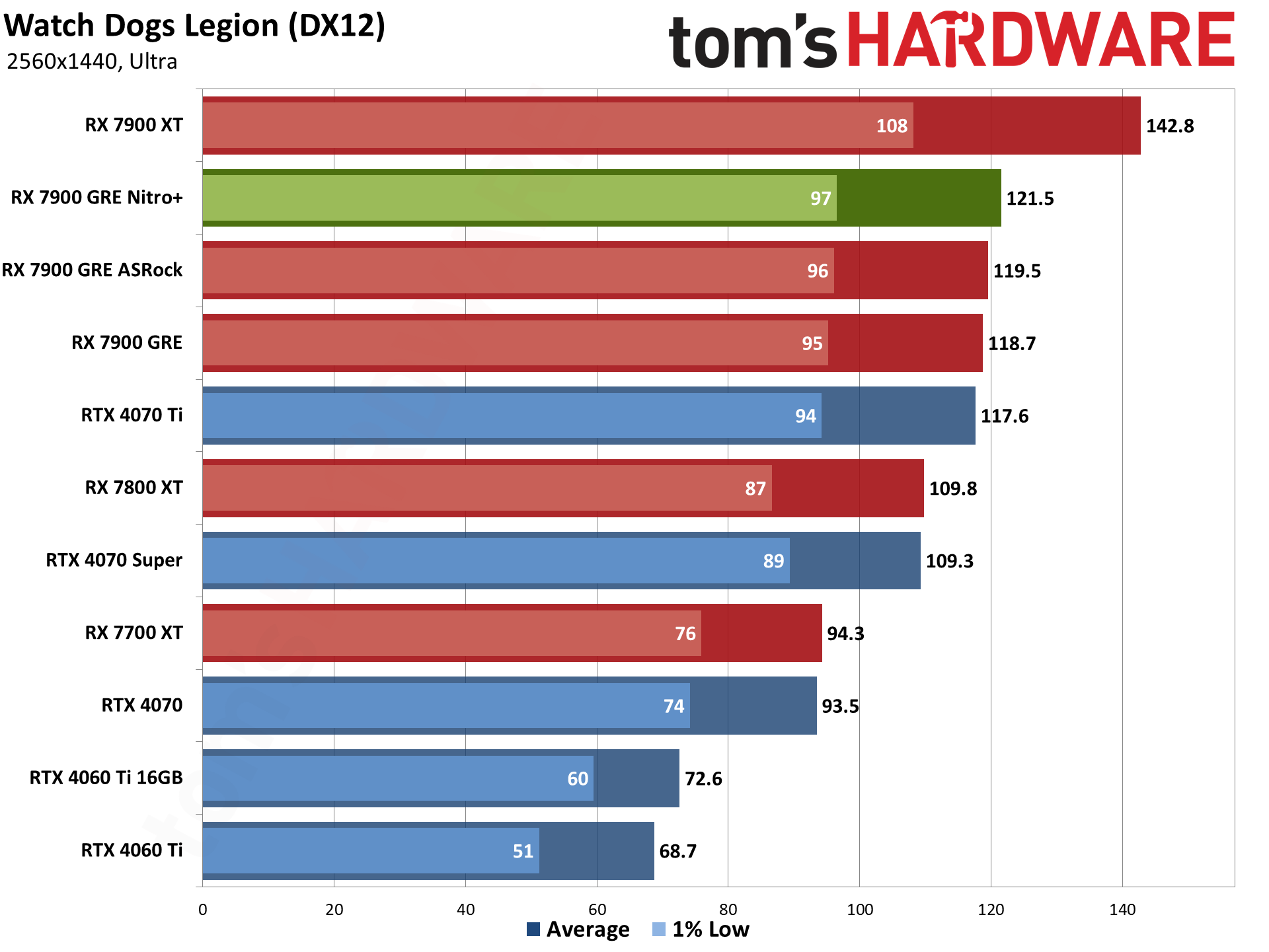
Starting with the 1440p results, the Nitro+ outperforms the base model Pulse card by just 2.2% across all 19 games. While that's technically measurable, it's not actually noticeable if you're just playing the games. The gap does increase to 2.9% in our DXR test suite, and drops to 1.7% in the rasterization suite, indicating that the more demanding a game is, the more the boosted power and clocks on the Nitro+ card will help.
Compared with the similarly priced RTX 4070 Super, a factory overclocked card like the Nitro+ doesn't seem to make much sense. It's technically a bit faster in rasterization performance, leading by 3.6% in aggregate, but the 4070 Super leads by 20% in the DXR tests and takes a 7% lead overall. And that's still not really factoring in Nvidia's DLSS advantage, which is in about twice as many games as FSR 2/3 and also looks better. Of course if you want some RGB bling to go with the 4070 Super, then you're generally looking at spending $630 or more.
The other comparison against Nvidia hardware would be the RTX 4070 vs RX 7900 GRE, where we also gave the nod to Nvidia's GPU thanks to it's relatively similar performance and superior feature set — again, referring mostly to the DLSS and AI capabilities, plus ray tracing. That was a contentious call, and certainly we understand why some people would prefer a 7900 GRE. Regardless, boosting performance a couple of percent while increasing the price 9% doesn't make for a compelling argument in favor of the Nitro+, if you're just looking at the raw performance.
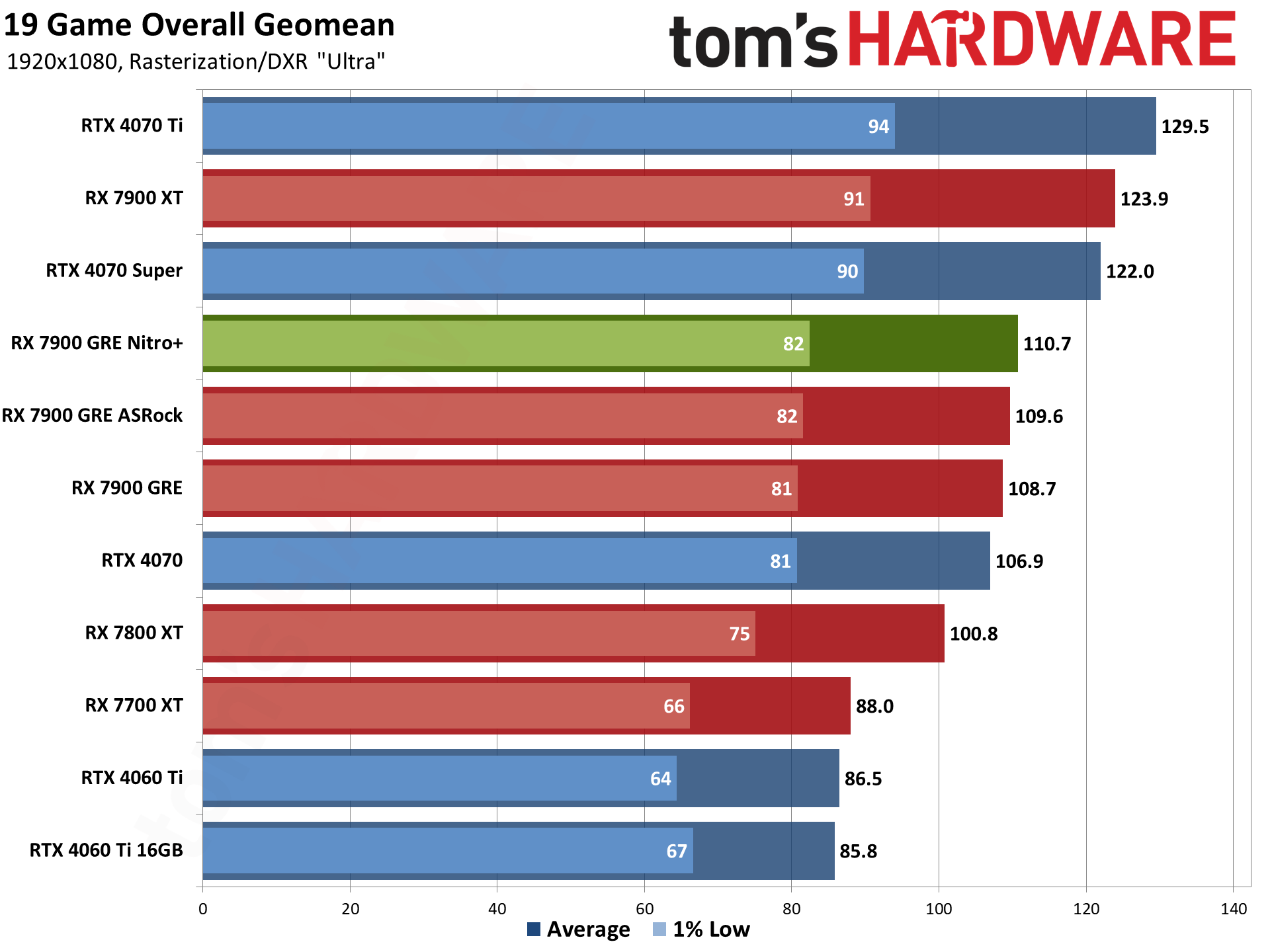



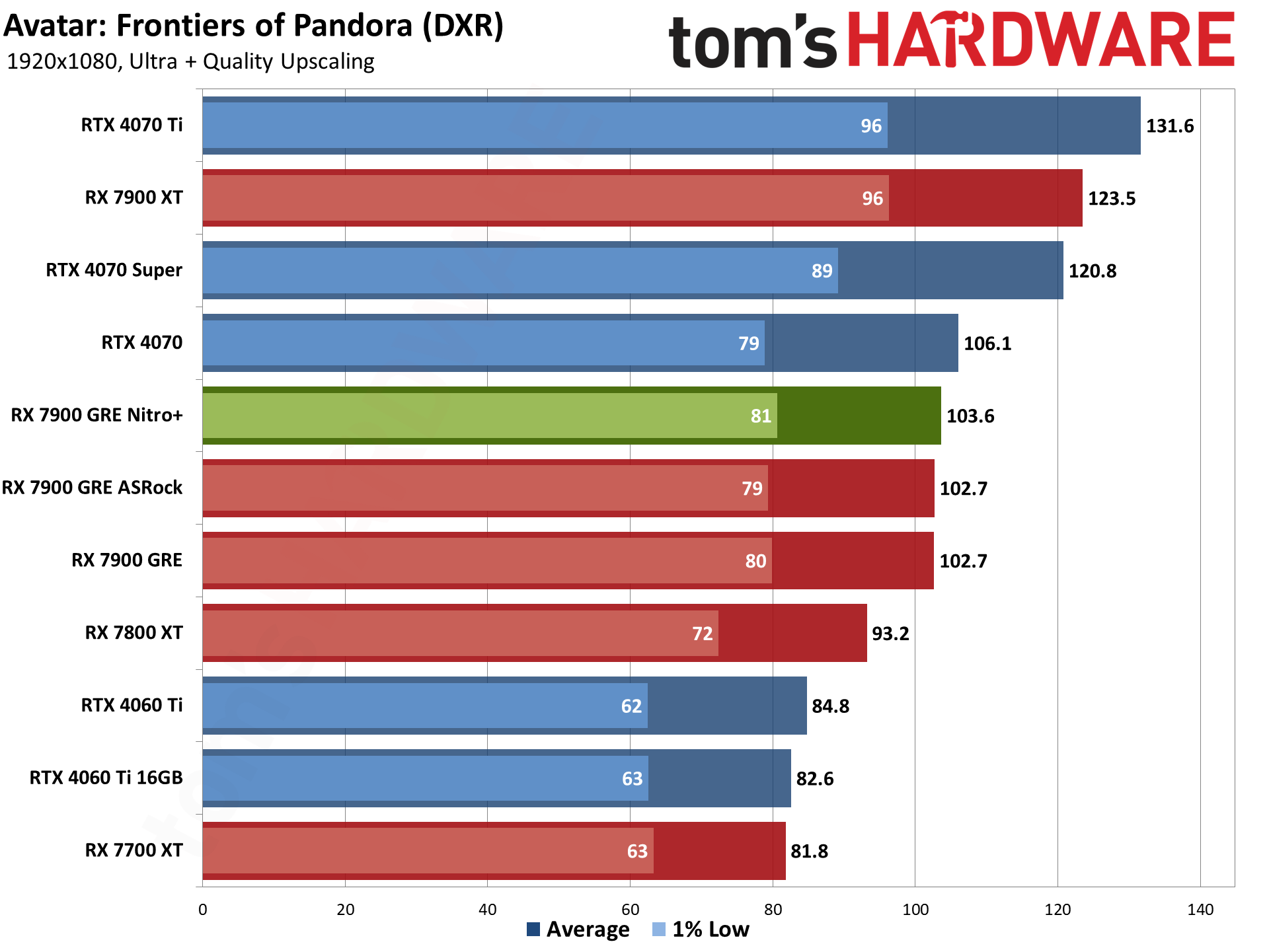

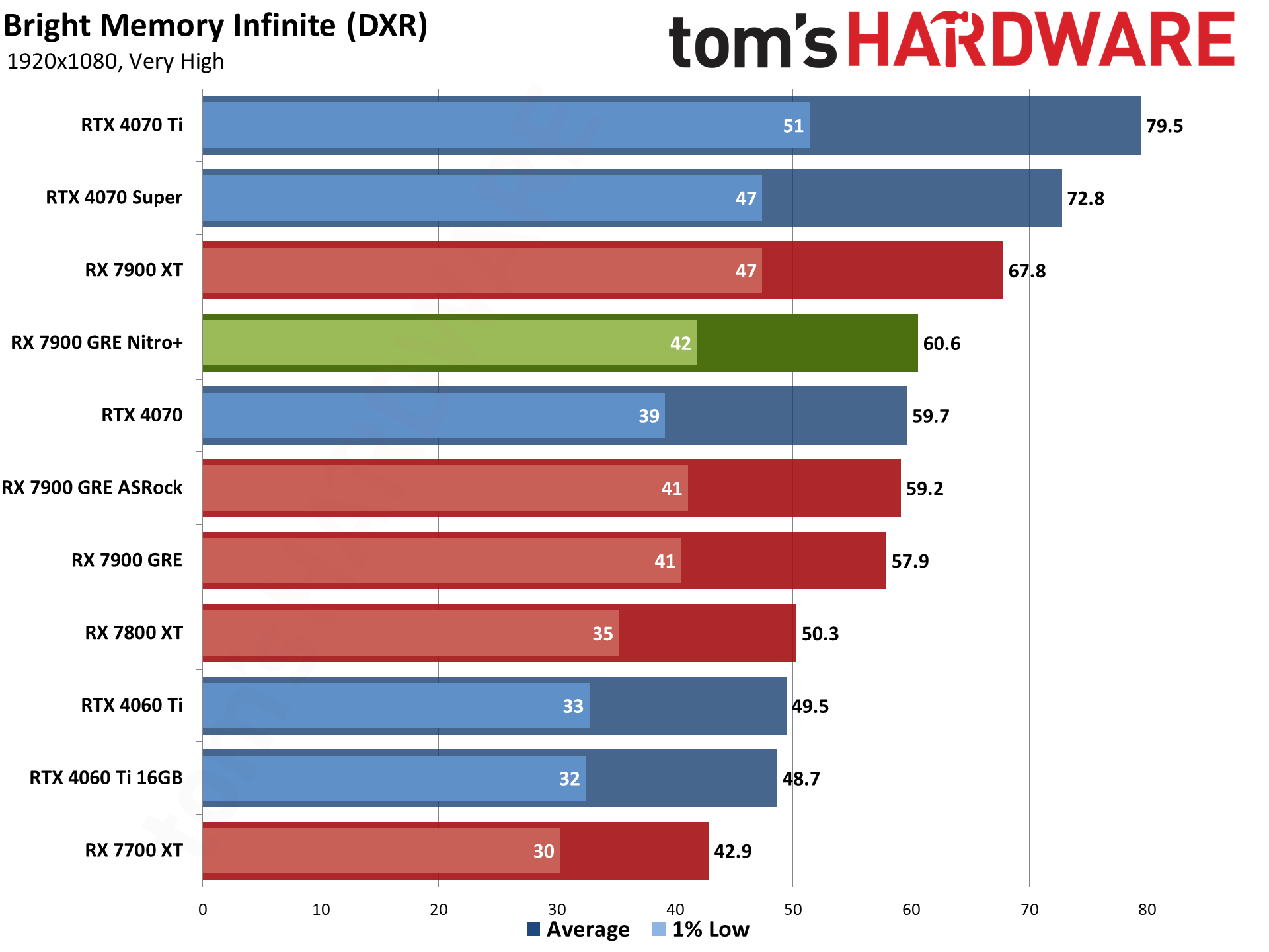
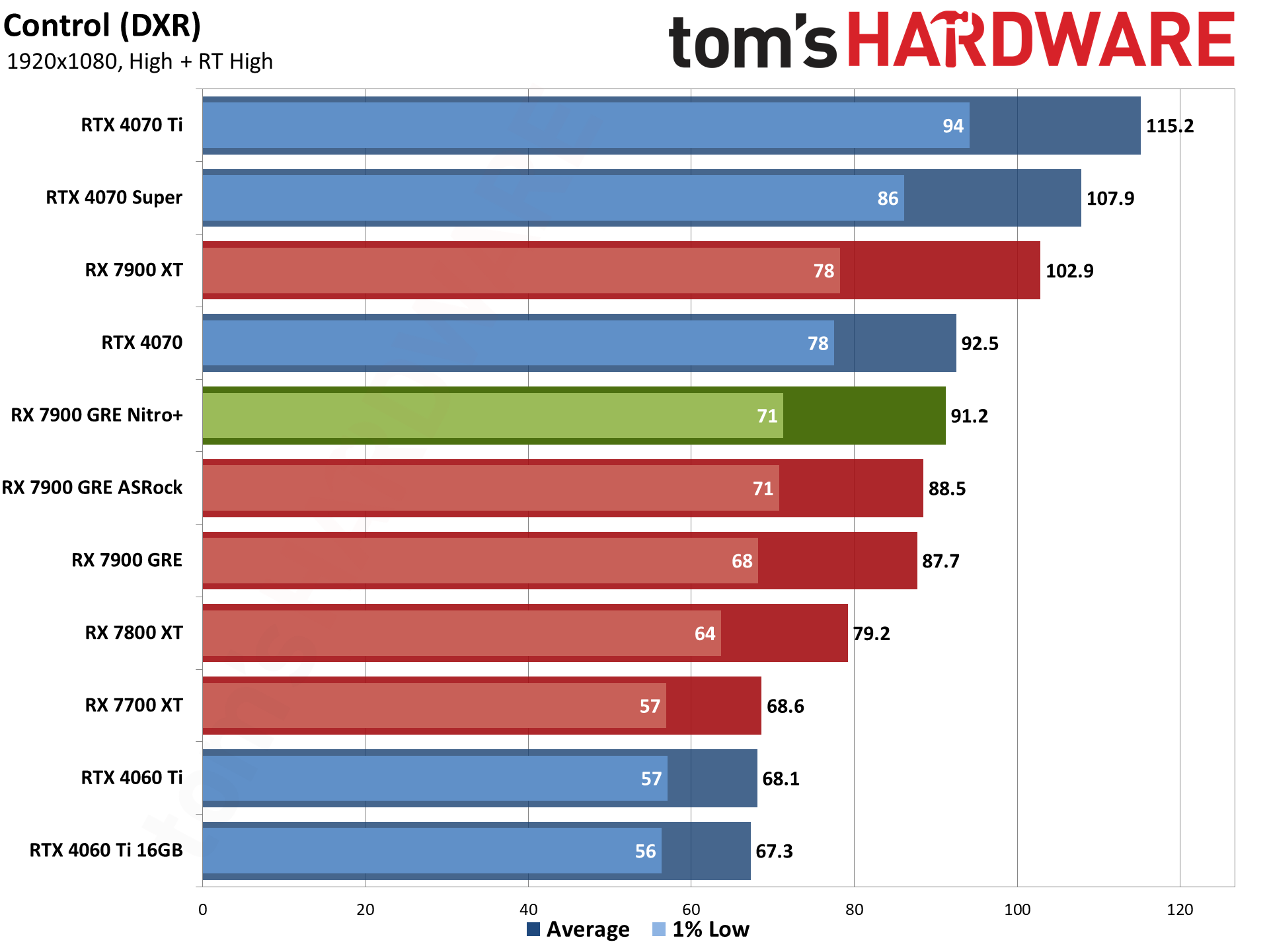

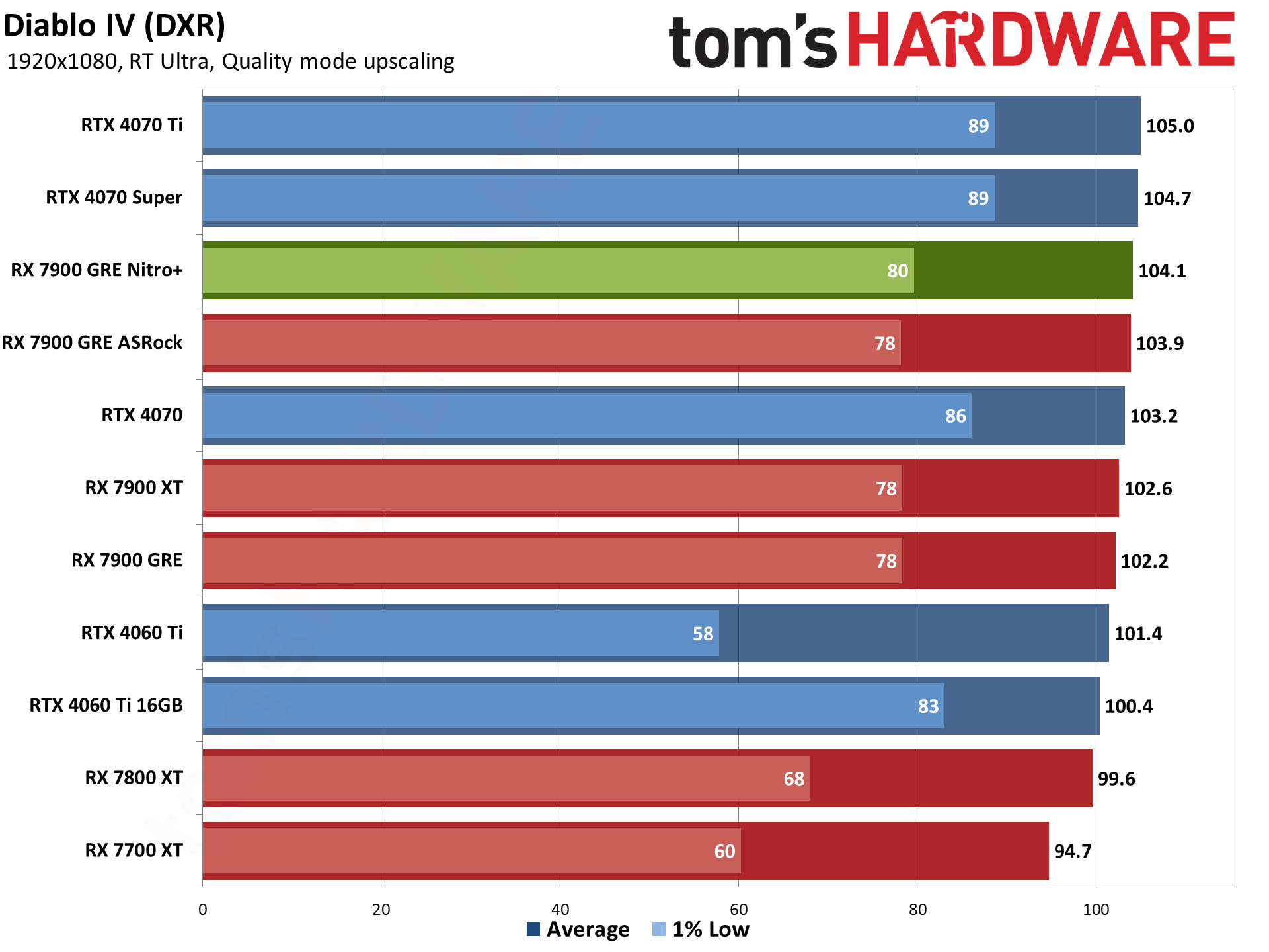
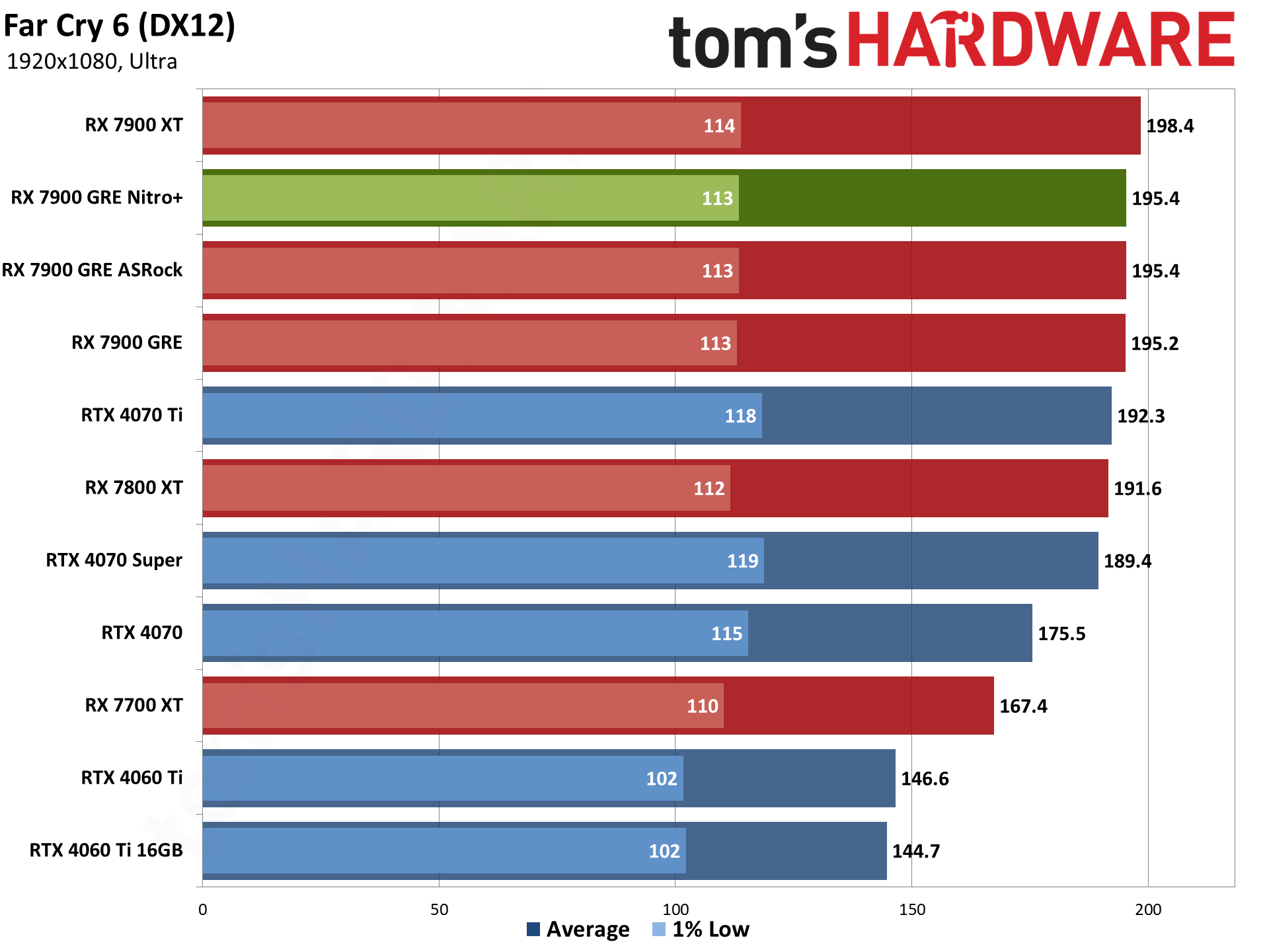
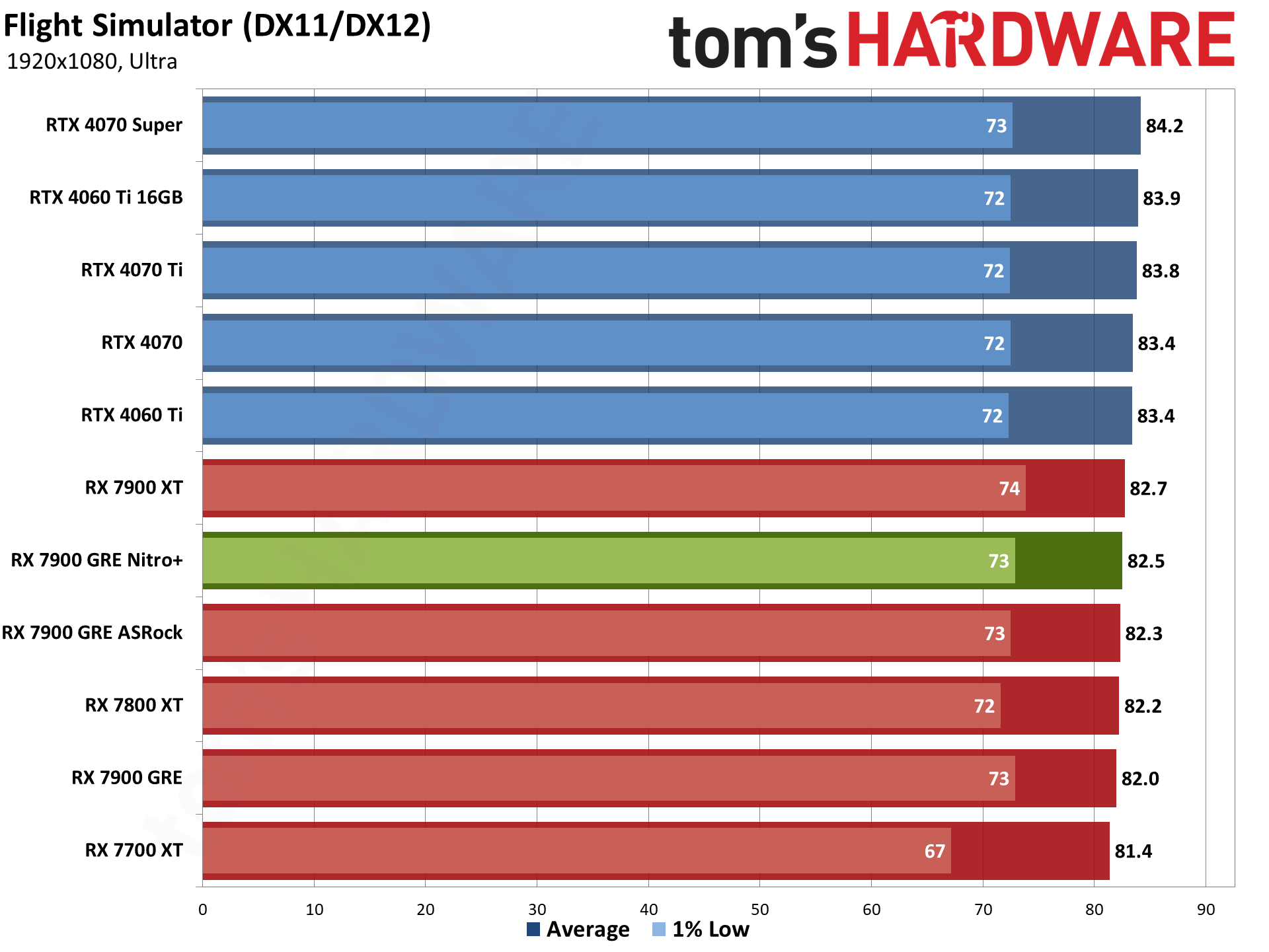

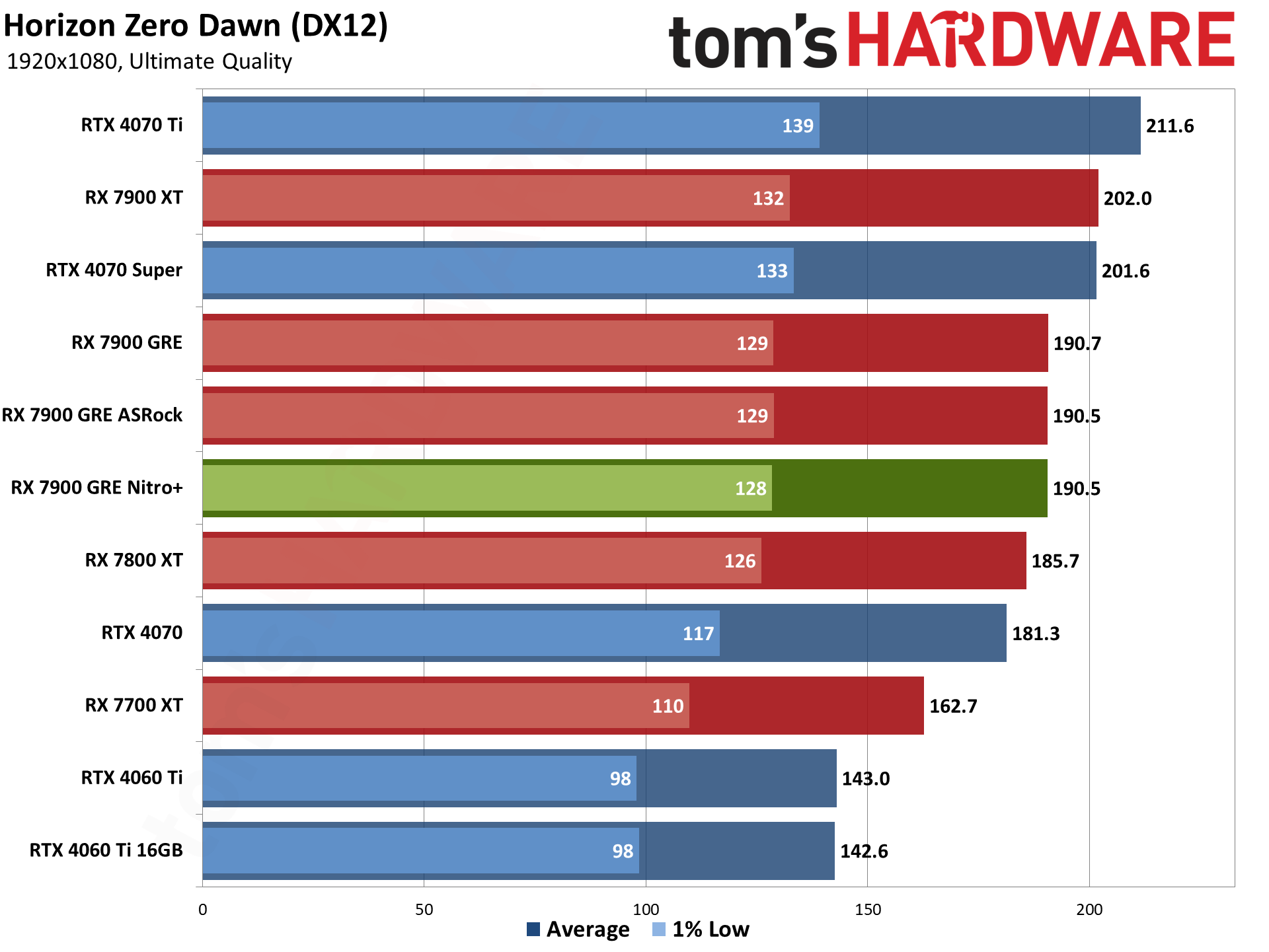
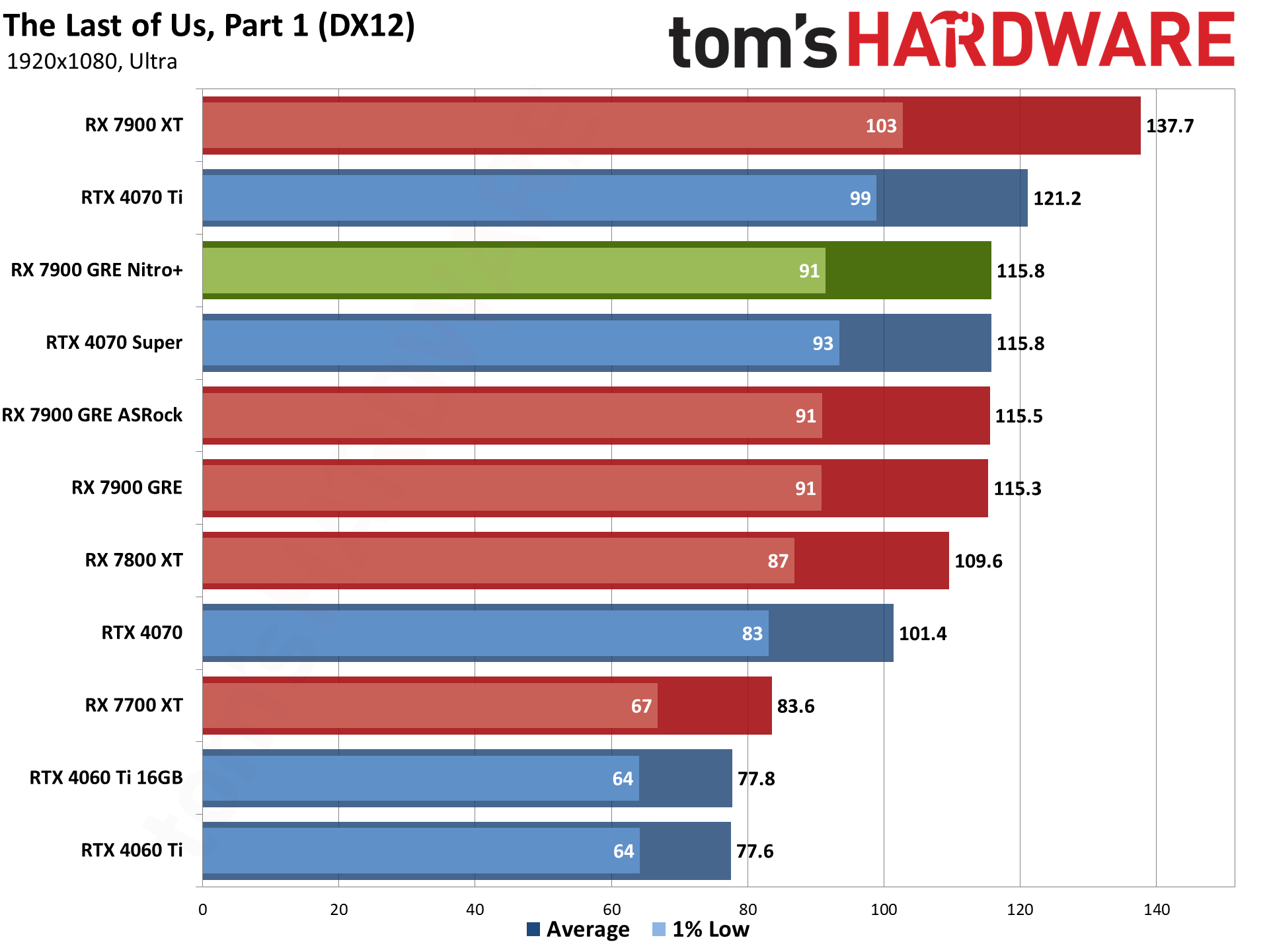
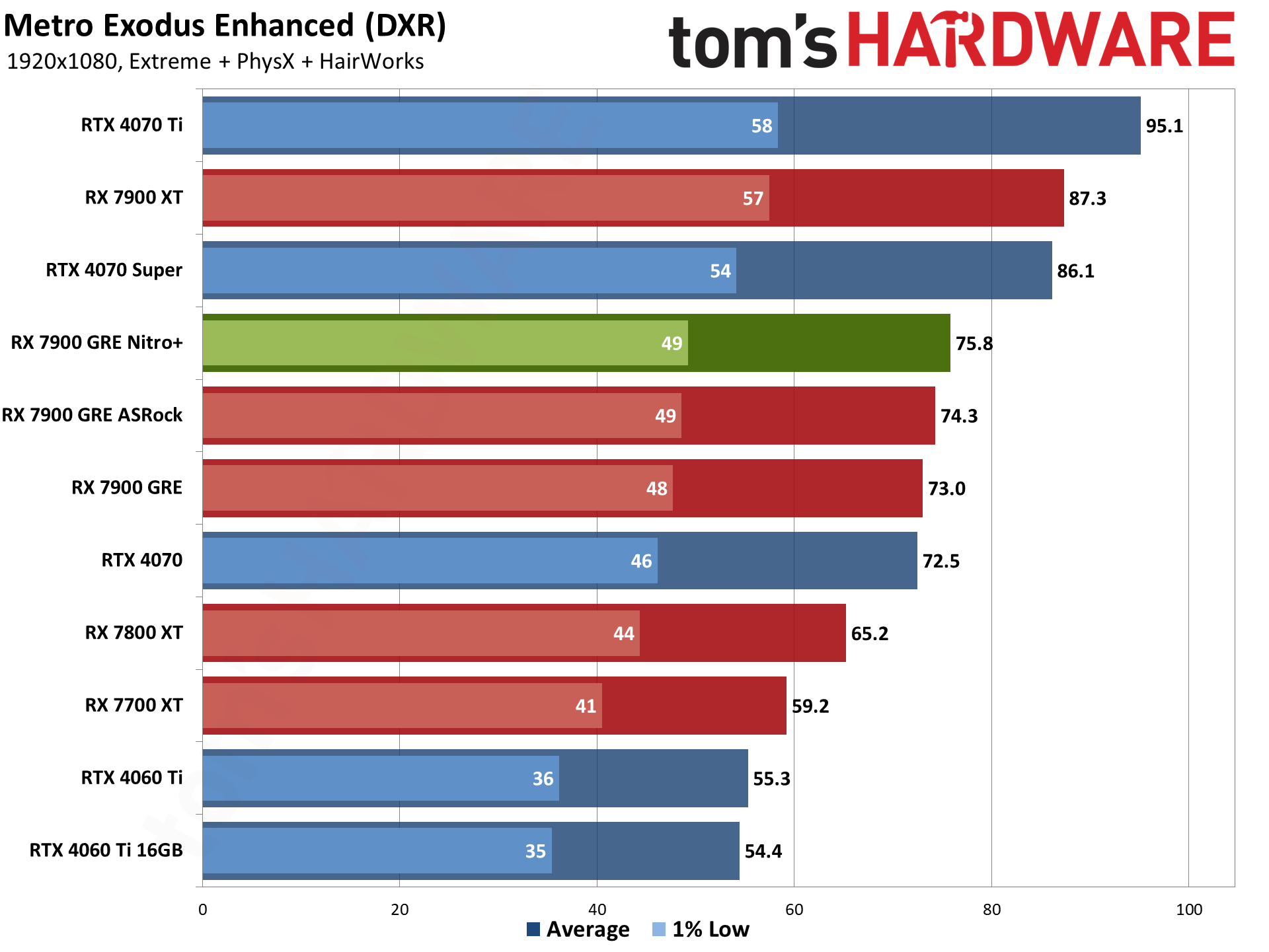
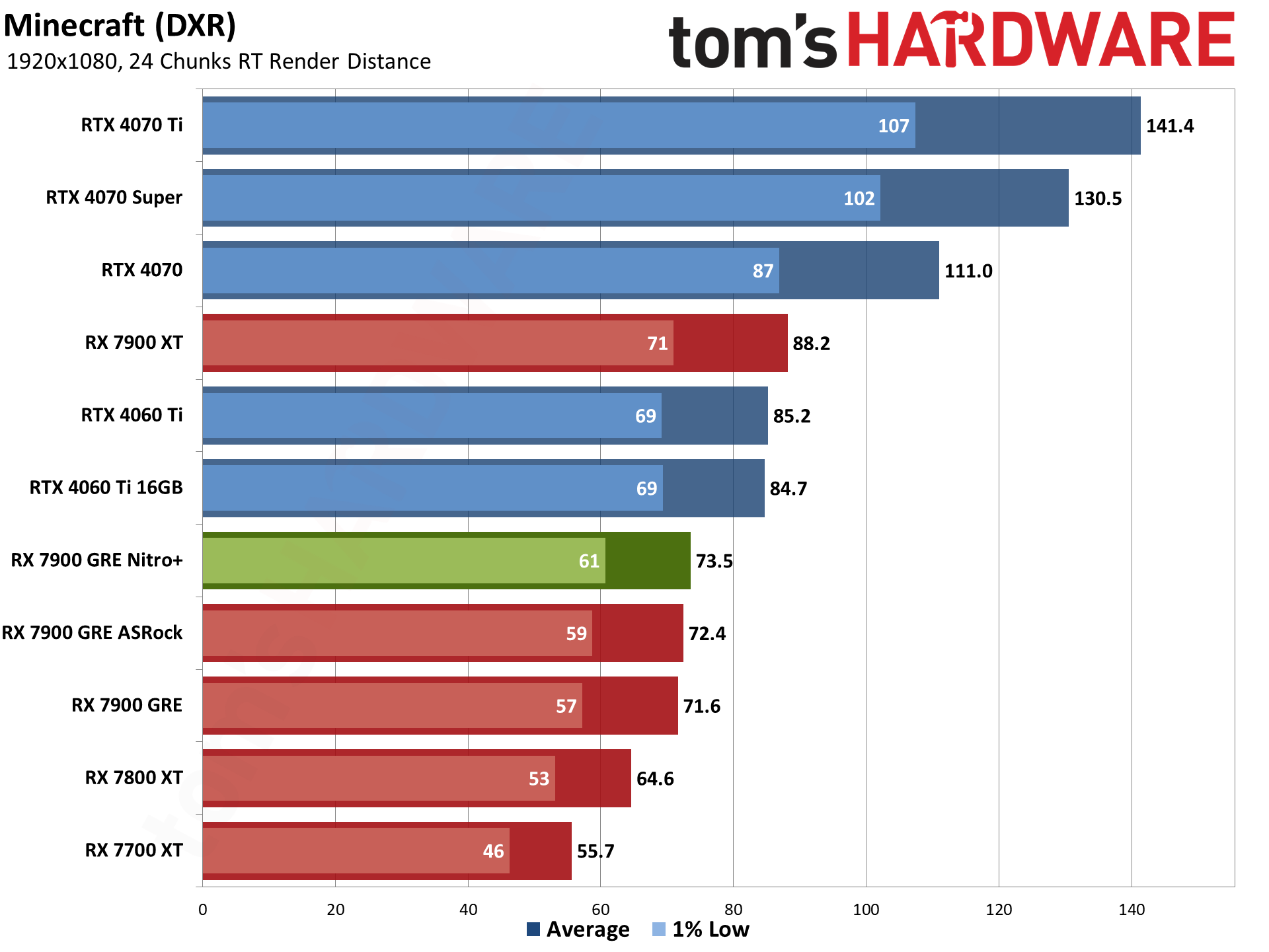

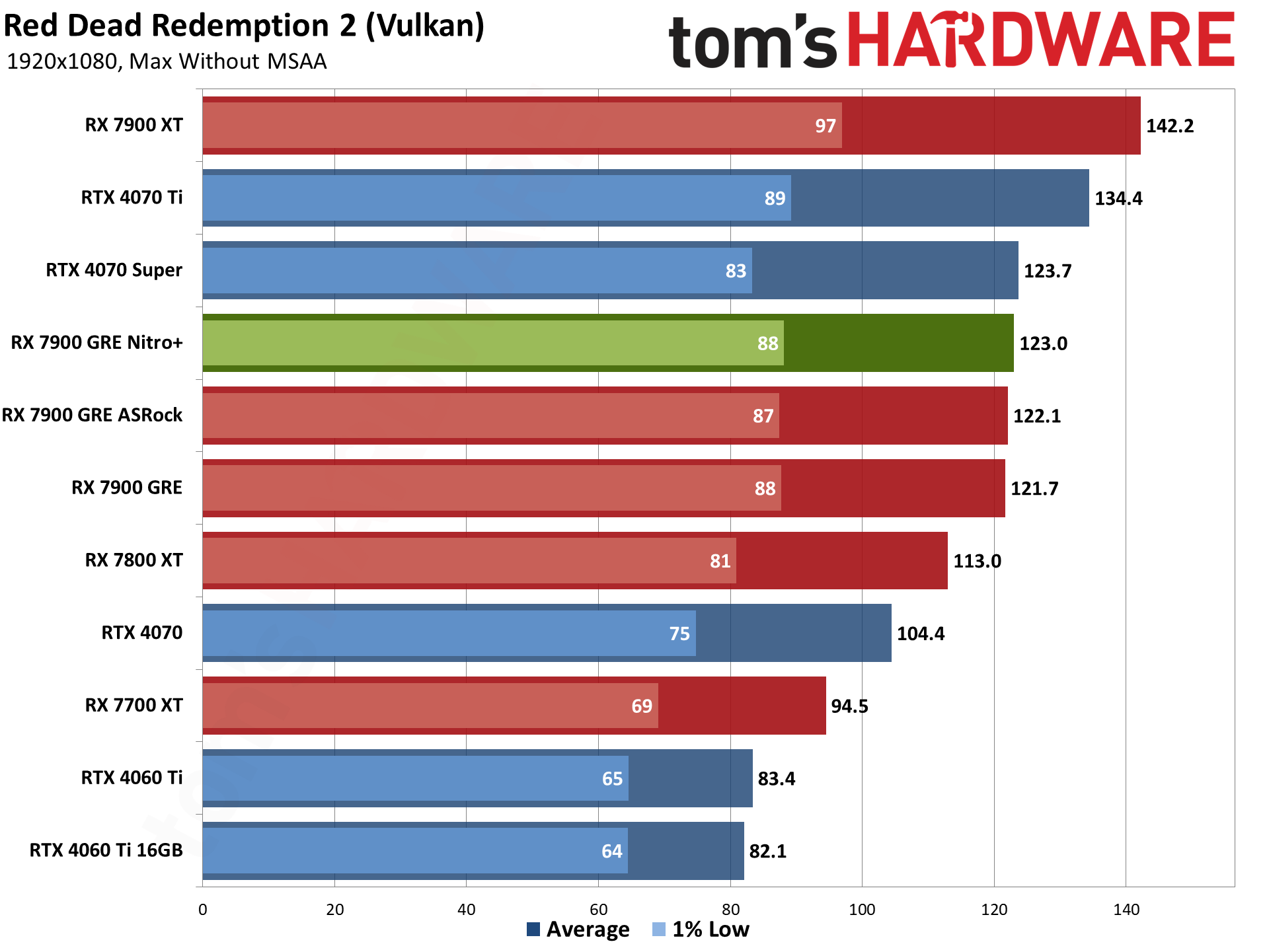
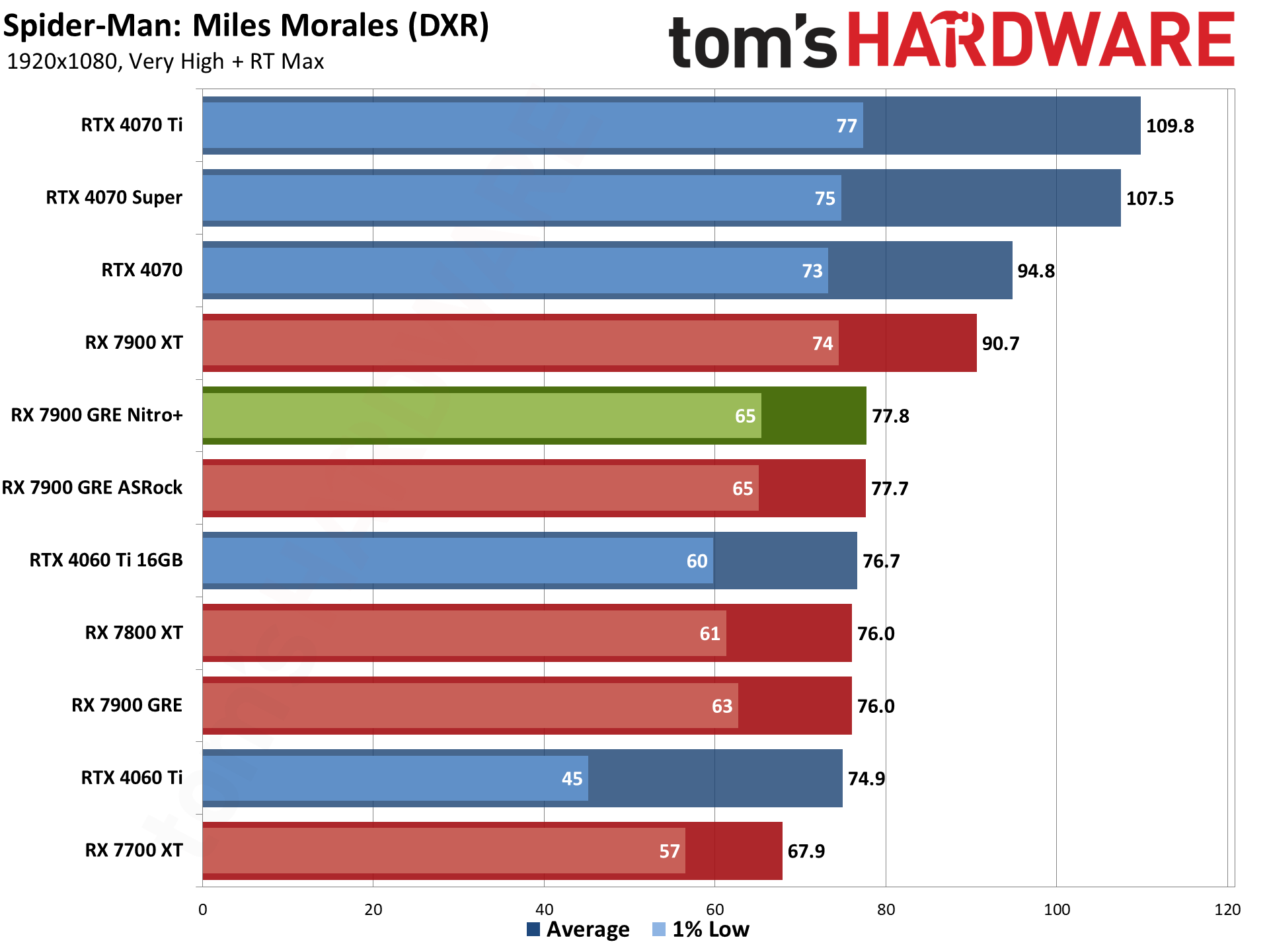

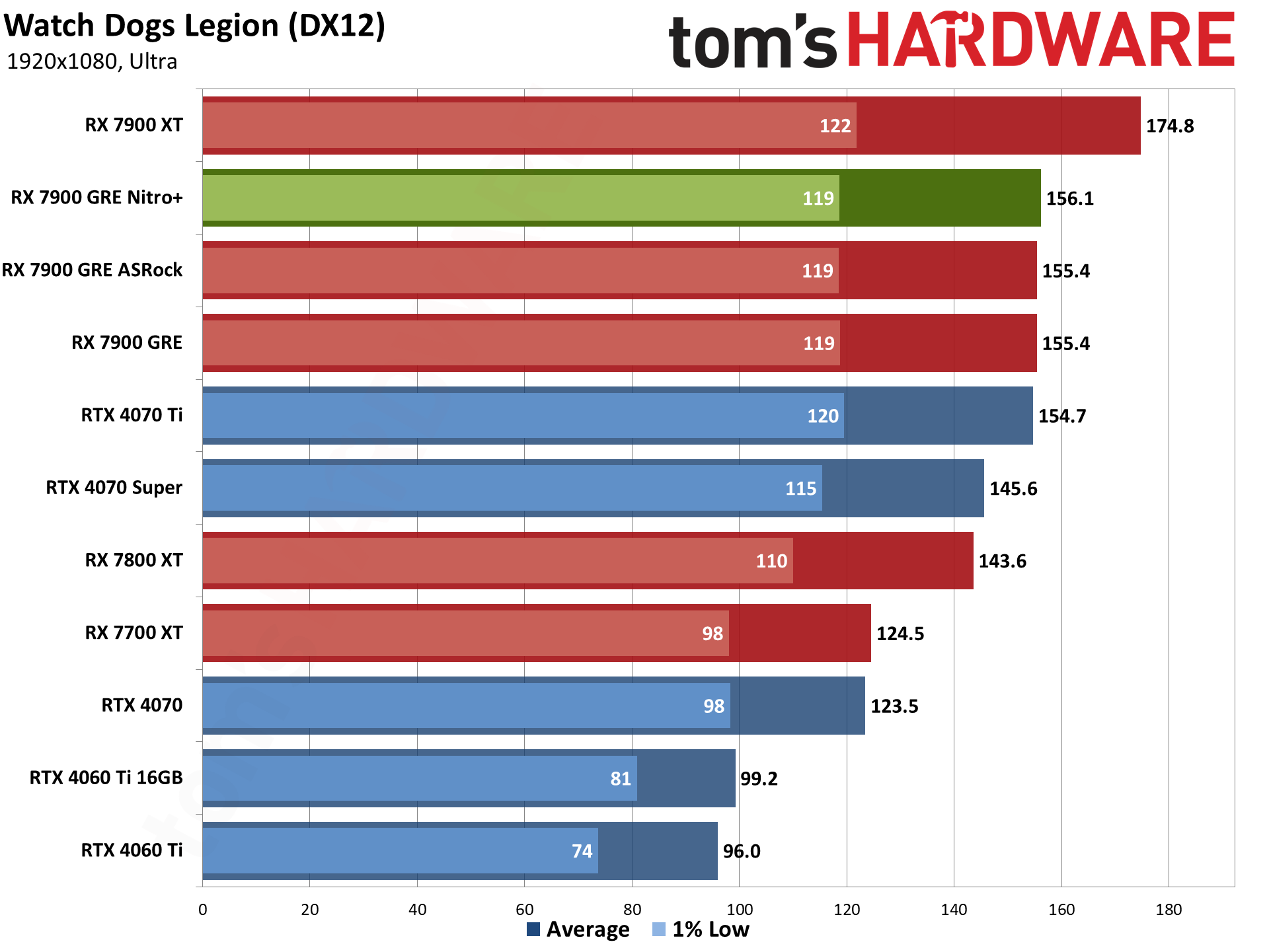



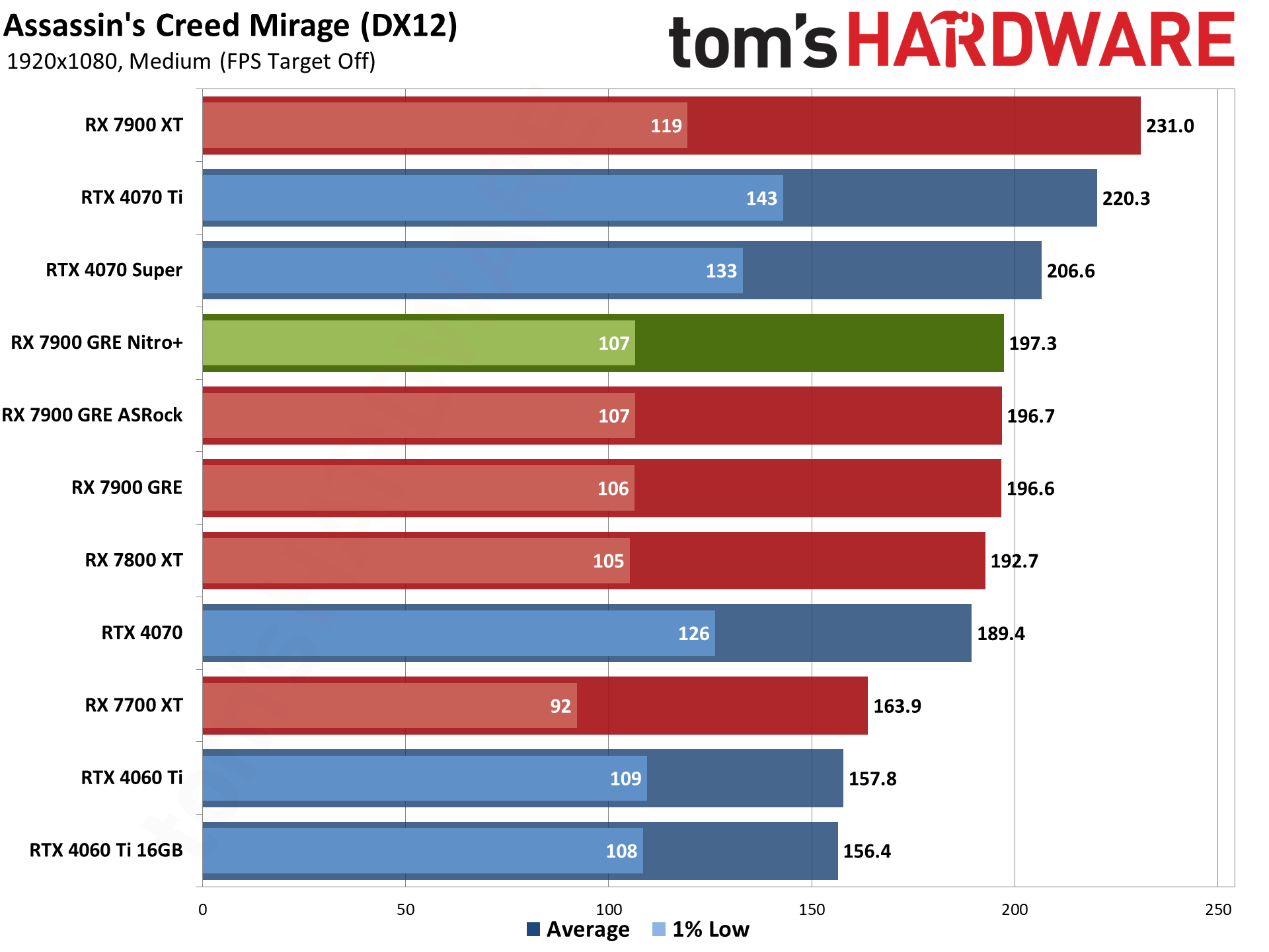
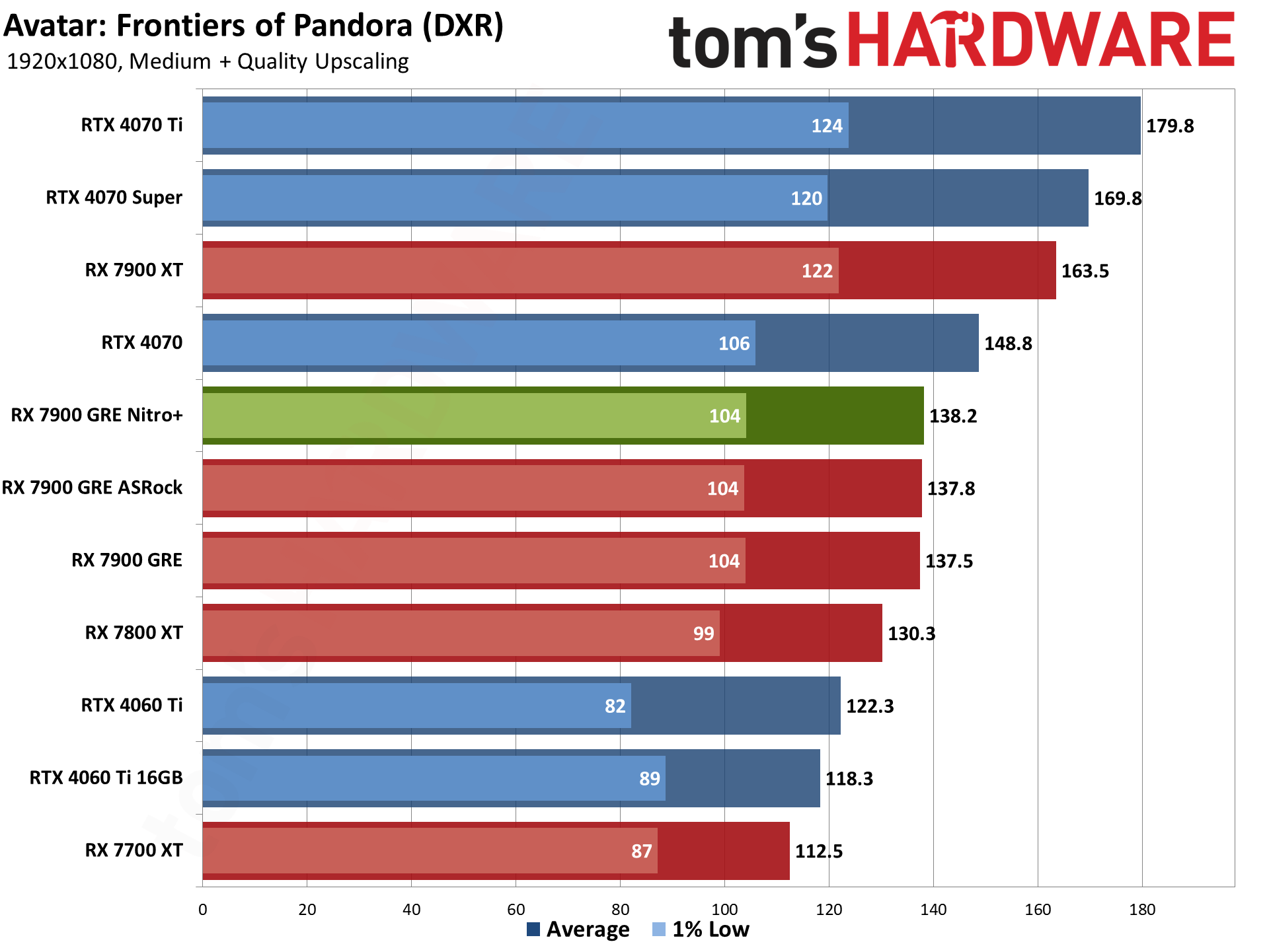
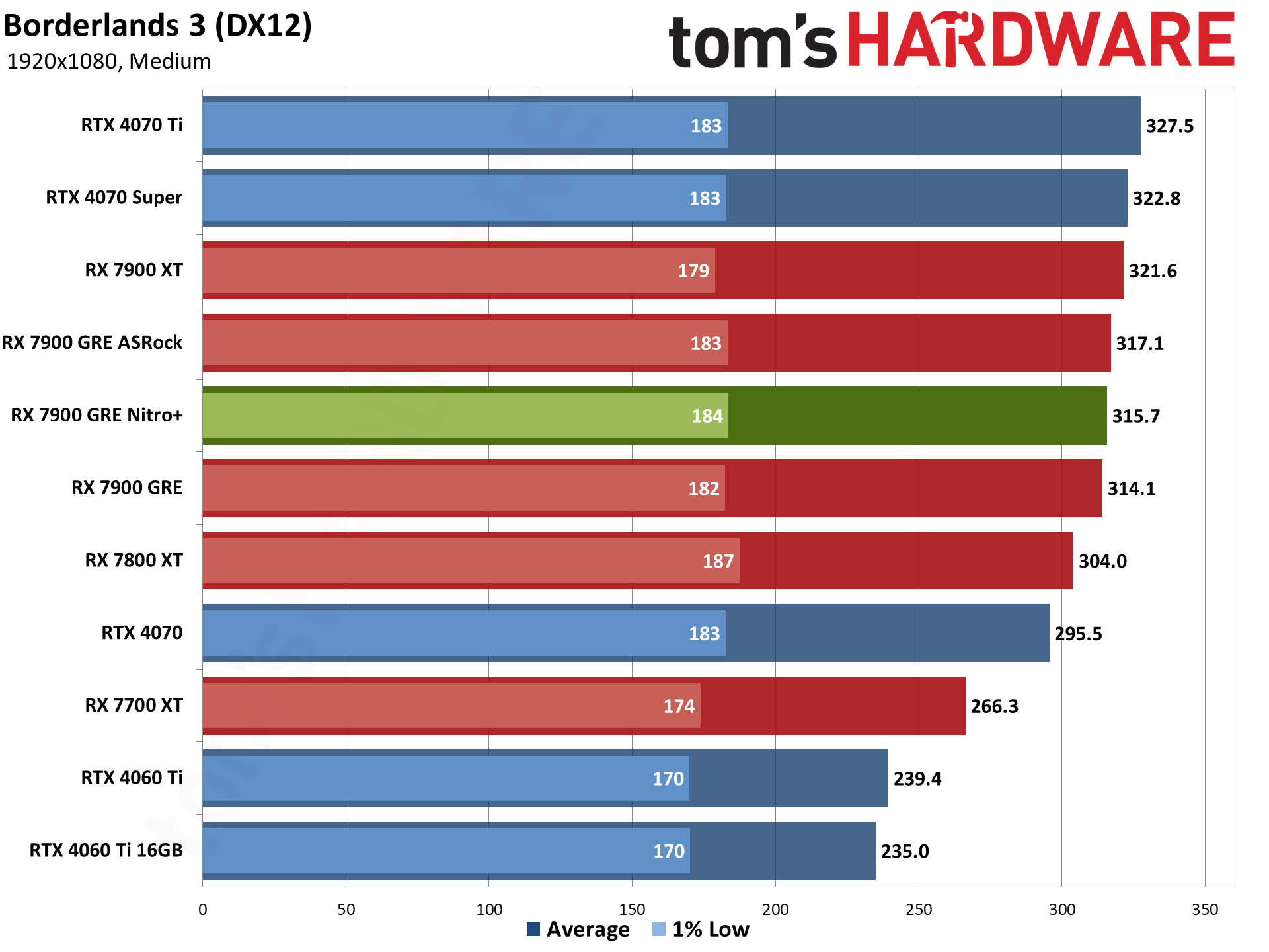

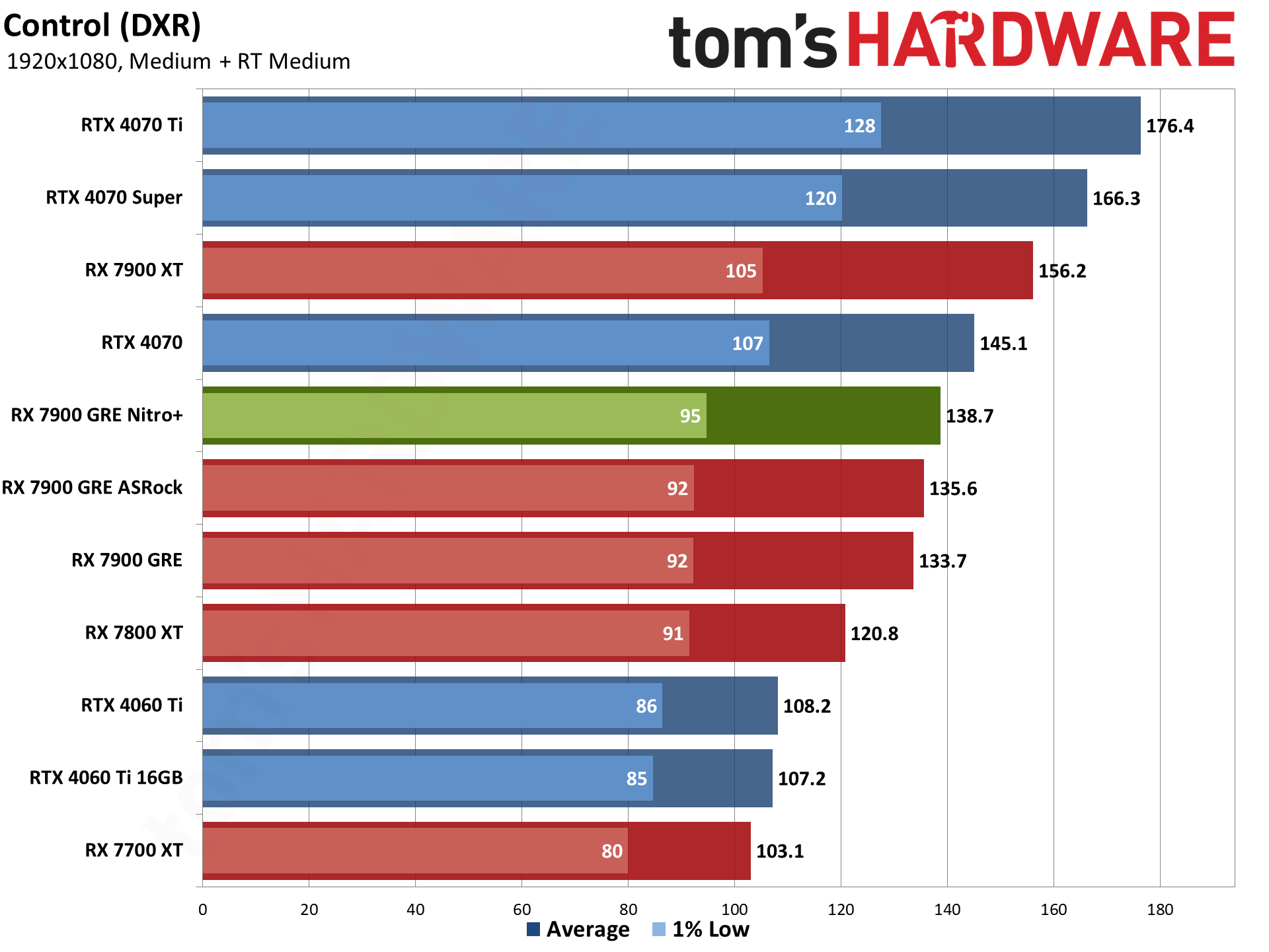
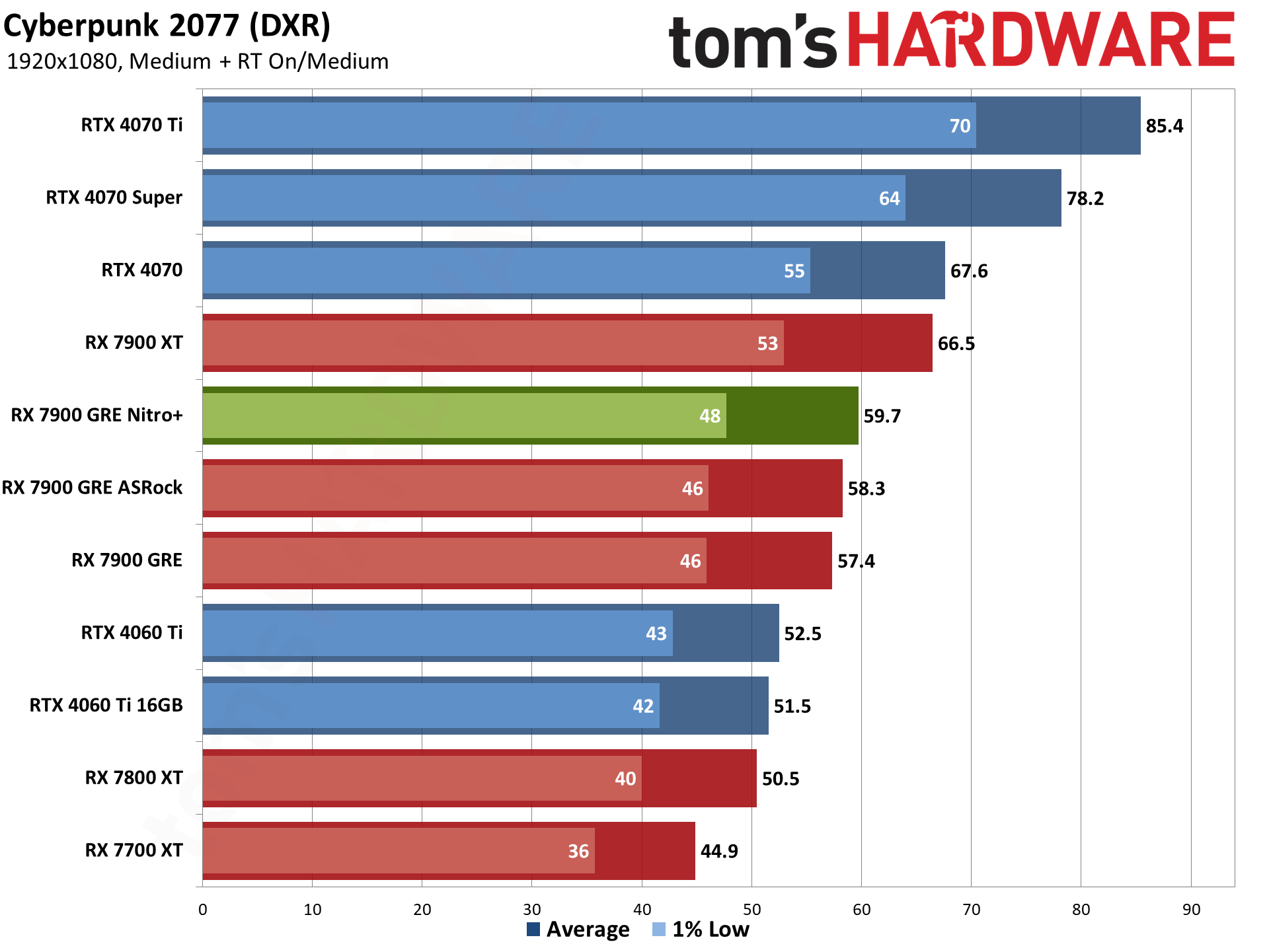


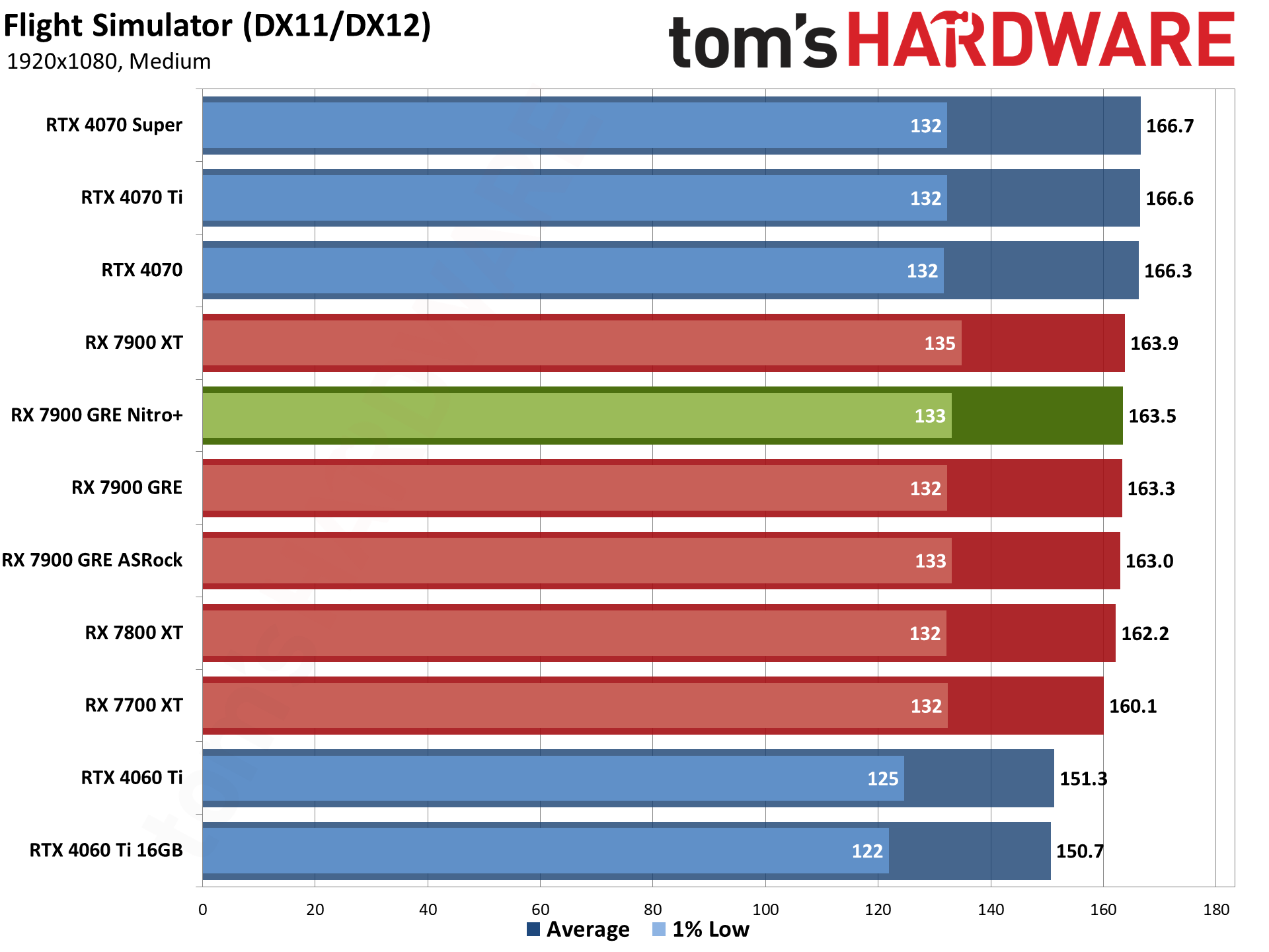

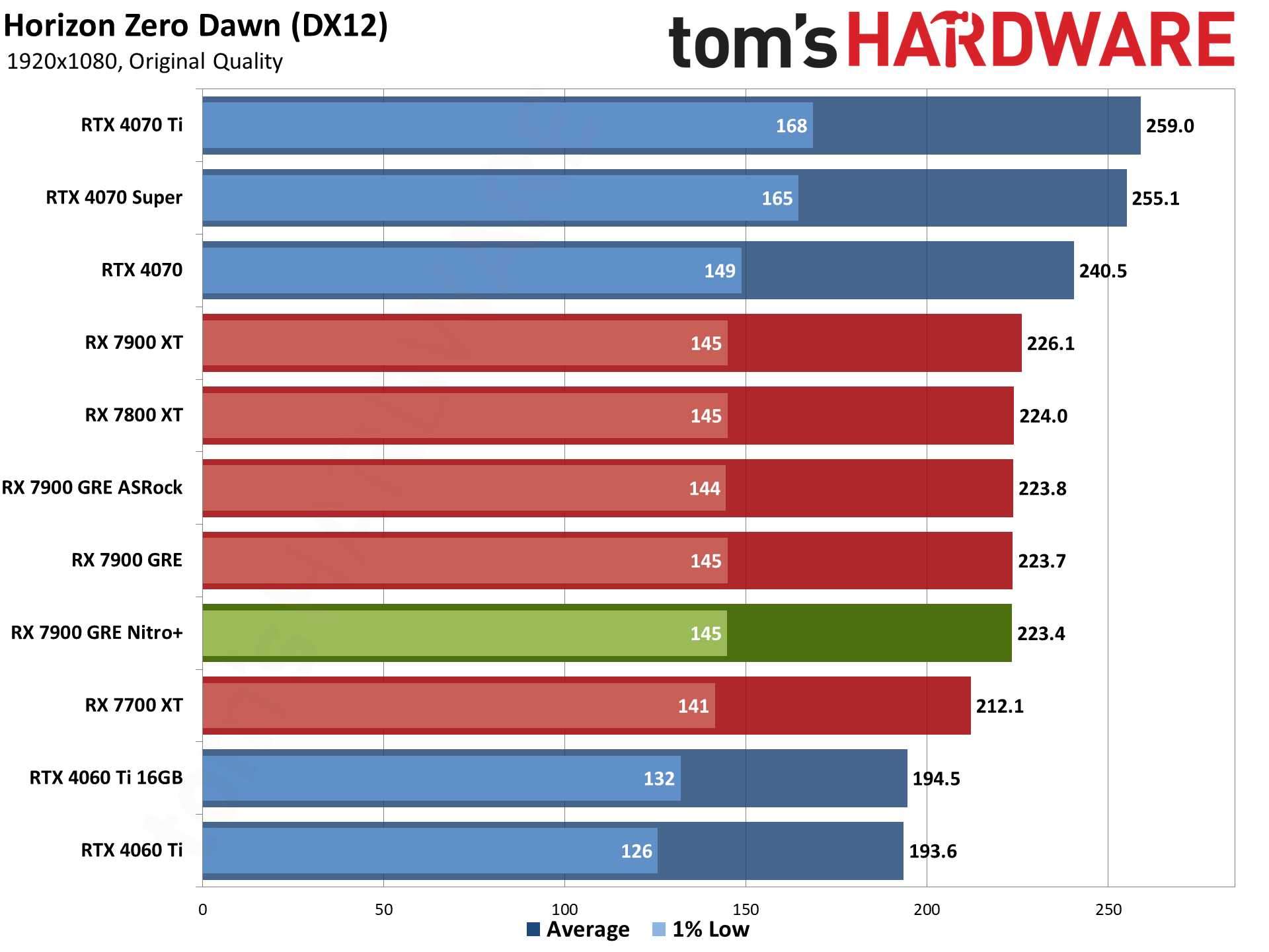
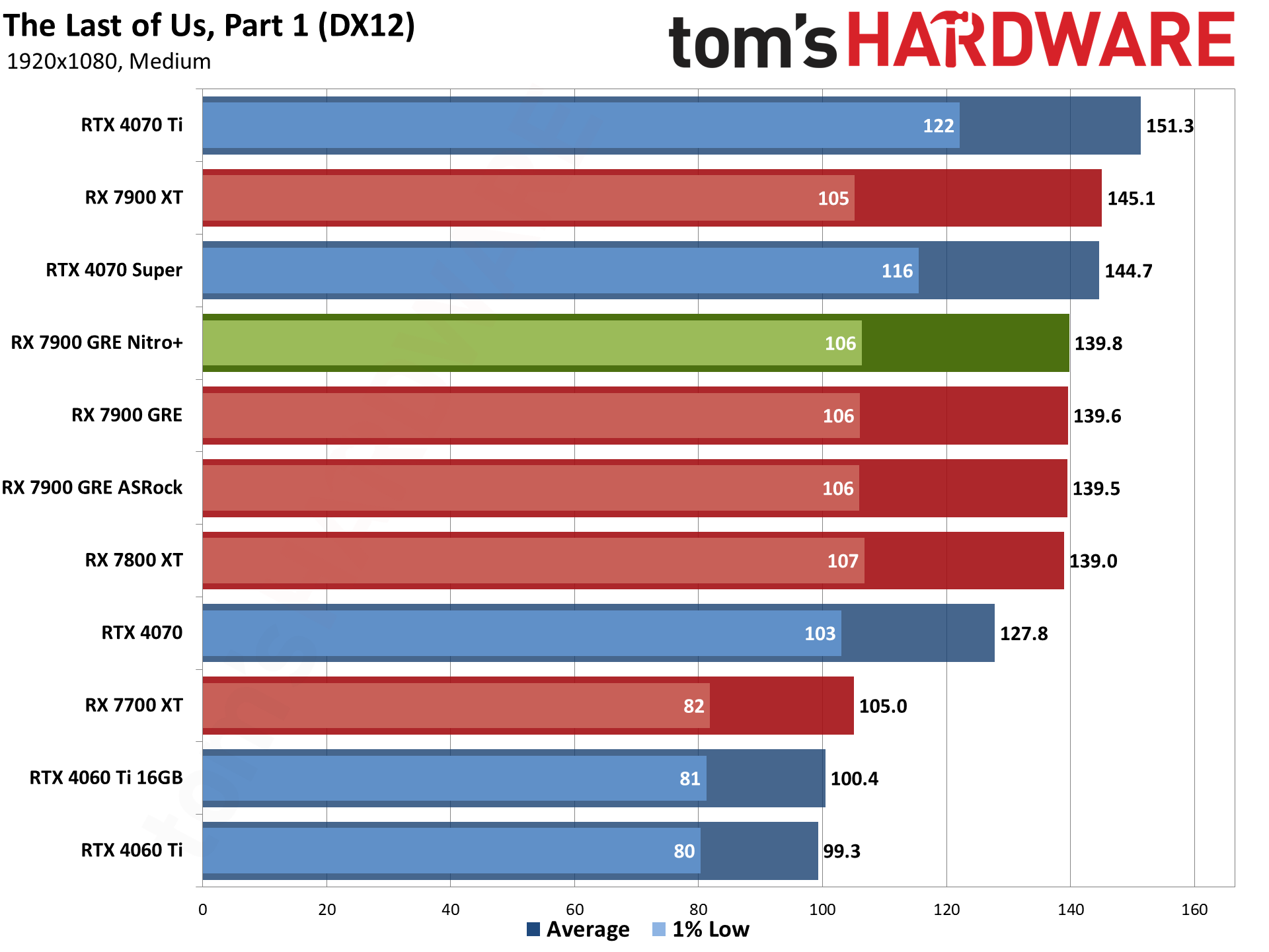
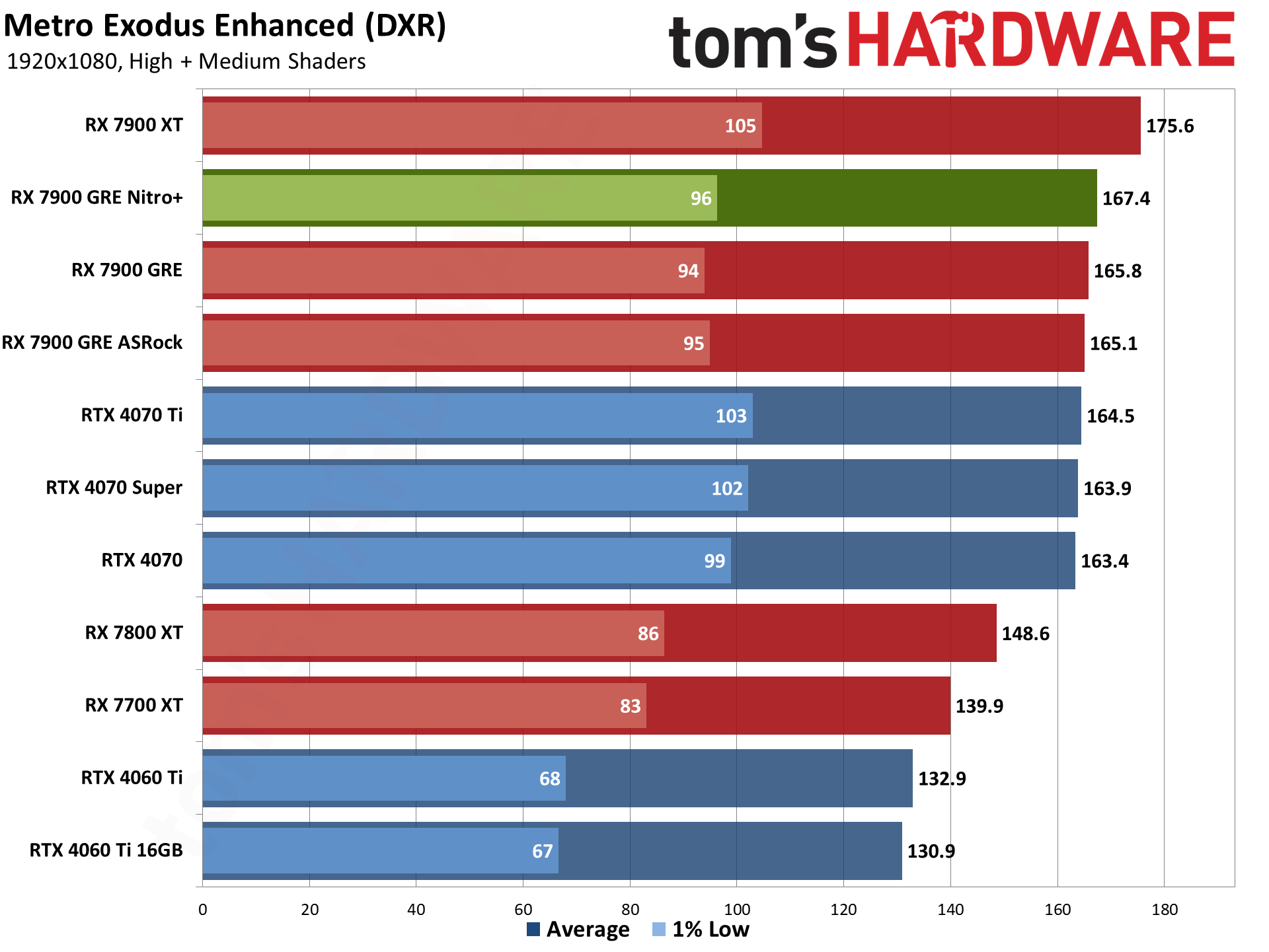

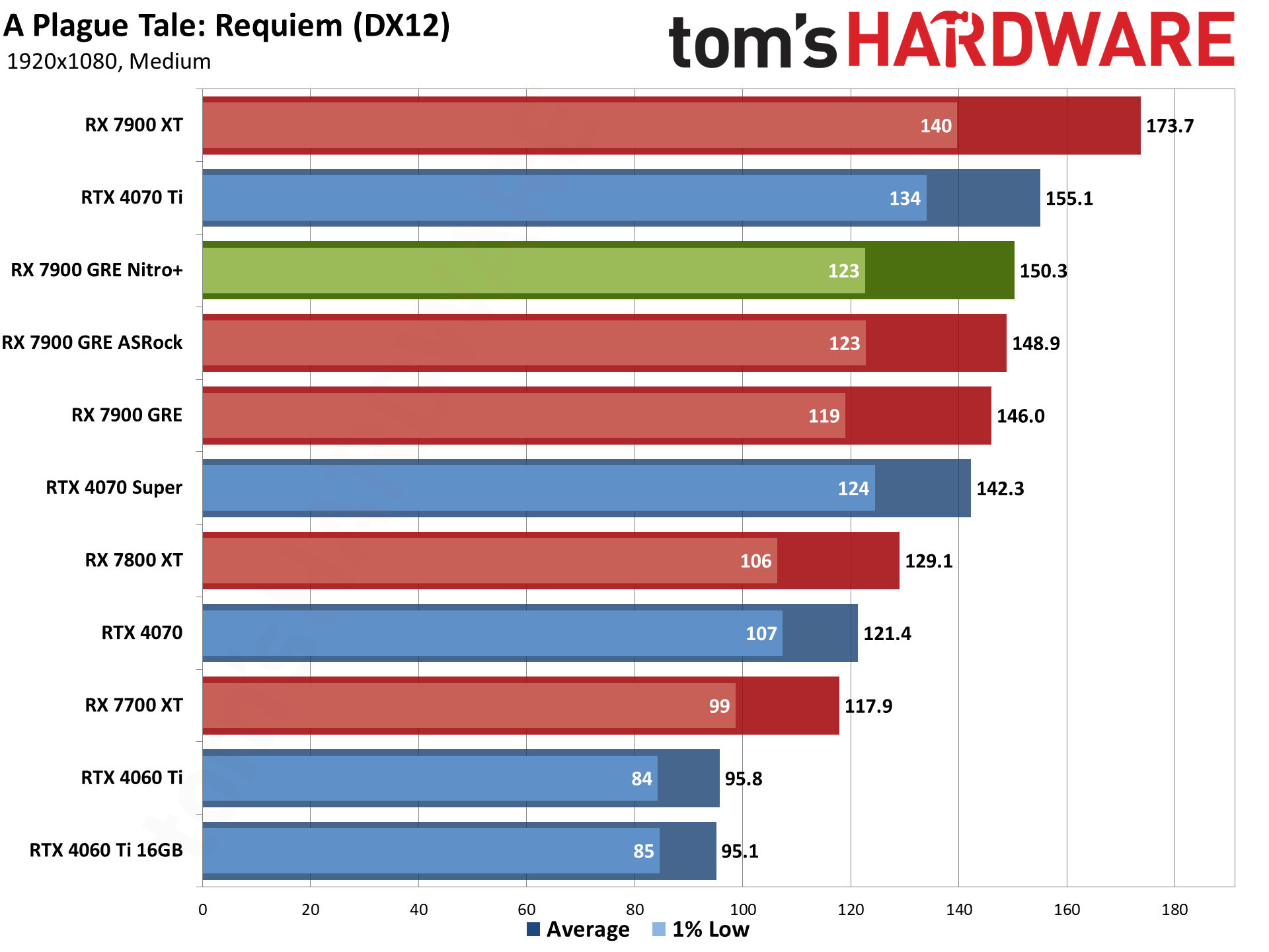

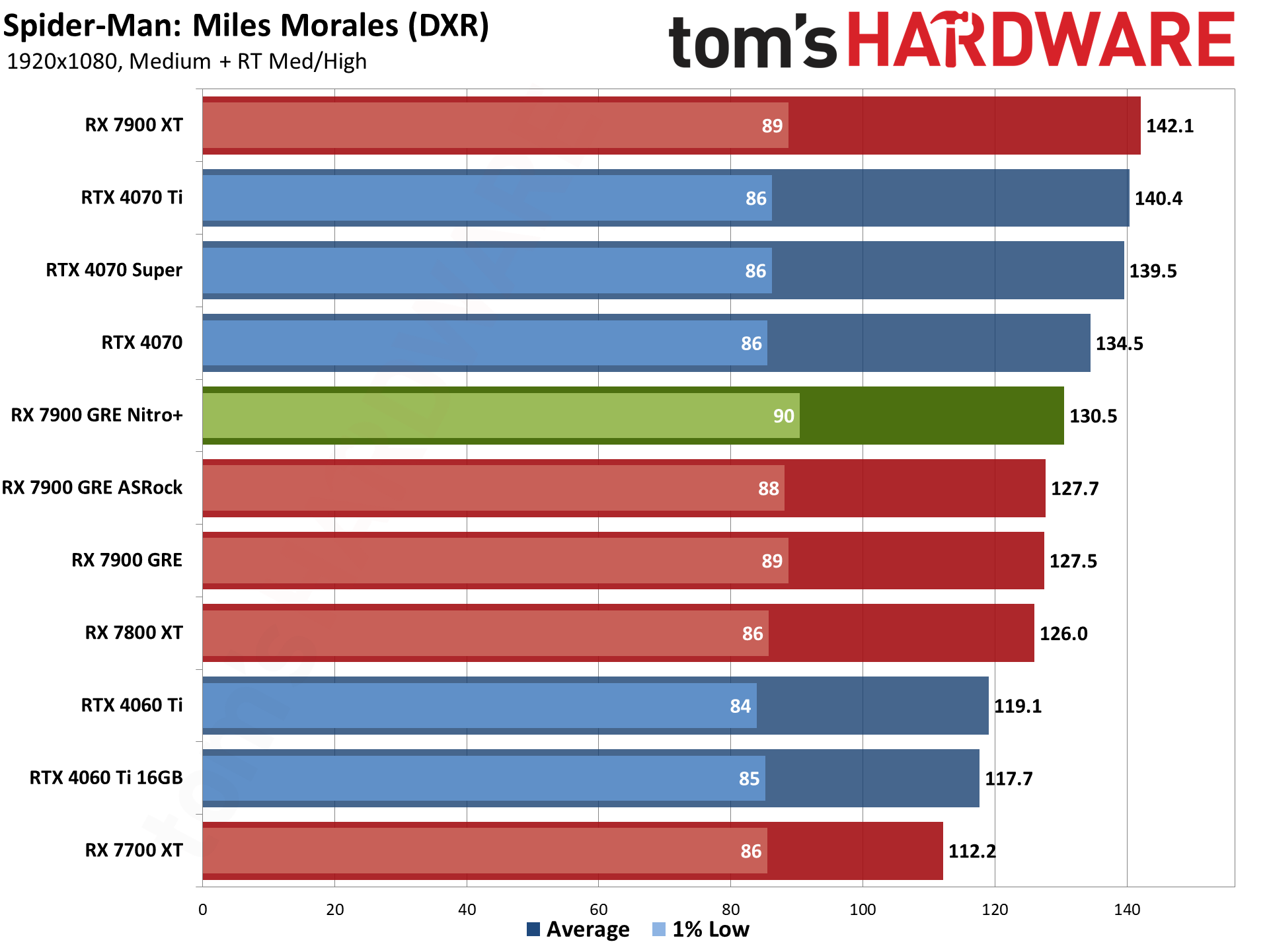


Dropping the resolution to 1080p doesn't change the story much. The overall difference in performance between the Nitro+ and the 7900 GRE Pulse shrinks slightly — there's a 1.9% gap at 1080p ultra and a mere 1.4% advantage at 1080p medium — but outside of running benchmarks, you wouldn't actually feel the minor change in performance. And in the less demanding rasterization test suite, the two GPUs are all but tied with a 1.1% difference at ultra settings and 0.5% difference at medium quality.
Nvidia's competing GPUs, the RTX 4070 Super and vanilla 4070, do slightly better at 1080p than 1440p. That's because they have less VRAM and memory bandwidth, the latter being the more critical factor, which means the reduced demands of 1080p allow the GPUs to perform a bit better.
Would you notice the difference between the 7900 GRE Nitro+ and a 4070 Super? Yes, but it's purely on a game by game basis — Borderlands 3 gives the Nitro+ a 13% lead, which you might be able to feel, though that's doubtful given we're talking about 177 fps versus 200 fps. On the other hand, Minecraft, Spider-Man, Cyberpunk 2077, Bright Memory Infinite, Control, Avatar, and Metro Exodus — all DXR enabled games, not surprisingly — give the Nvidia GPU anywhere from a 14% to a 78% lead.
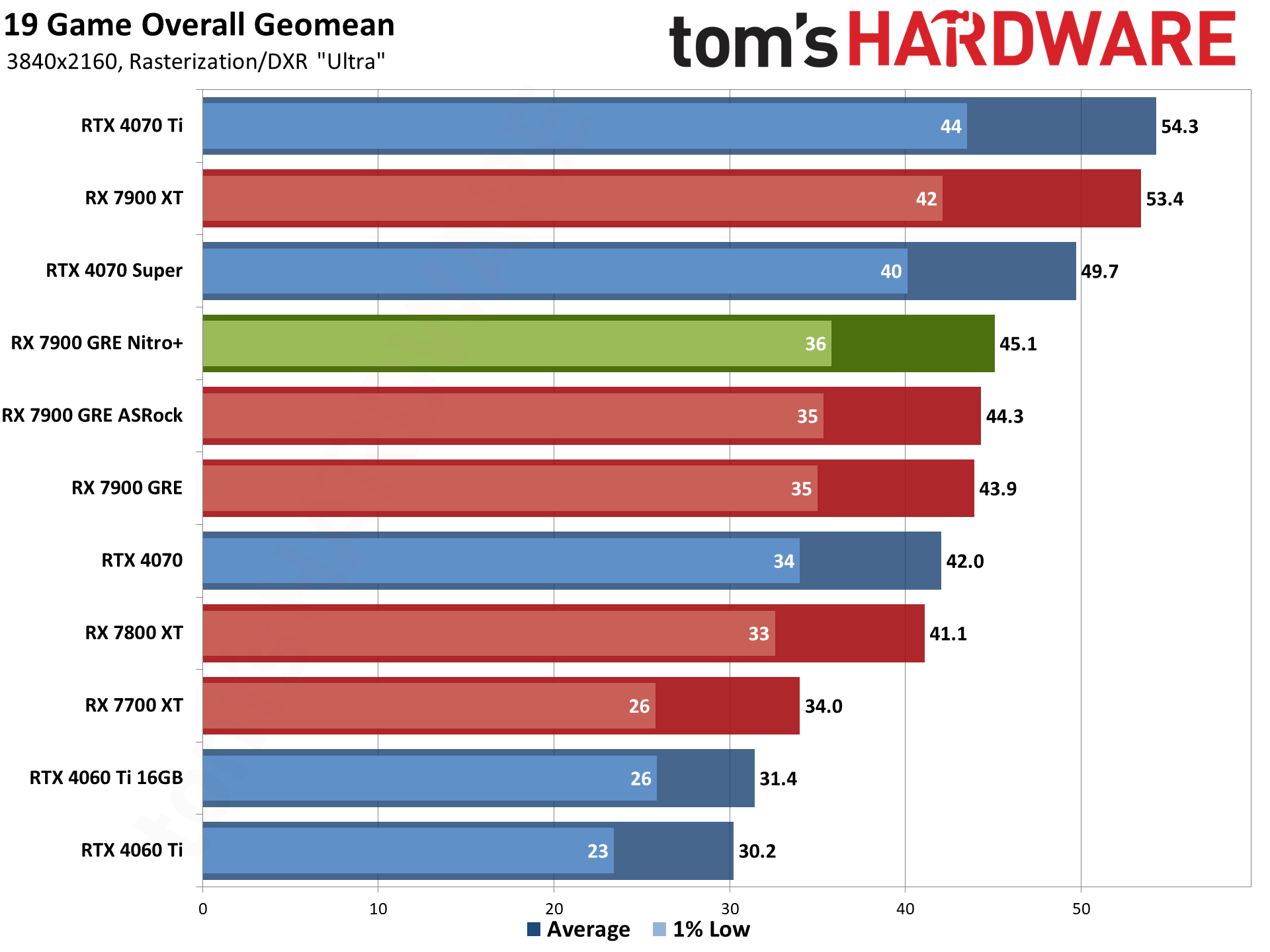
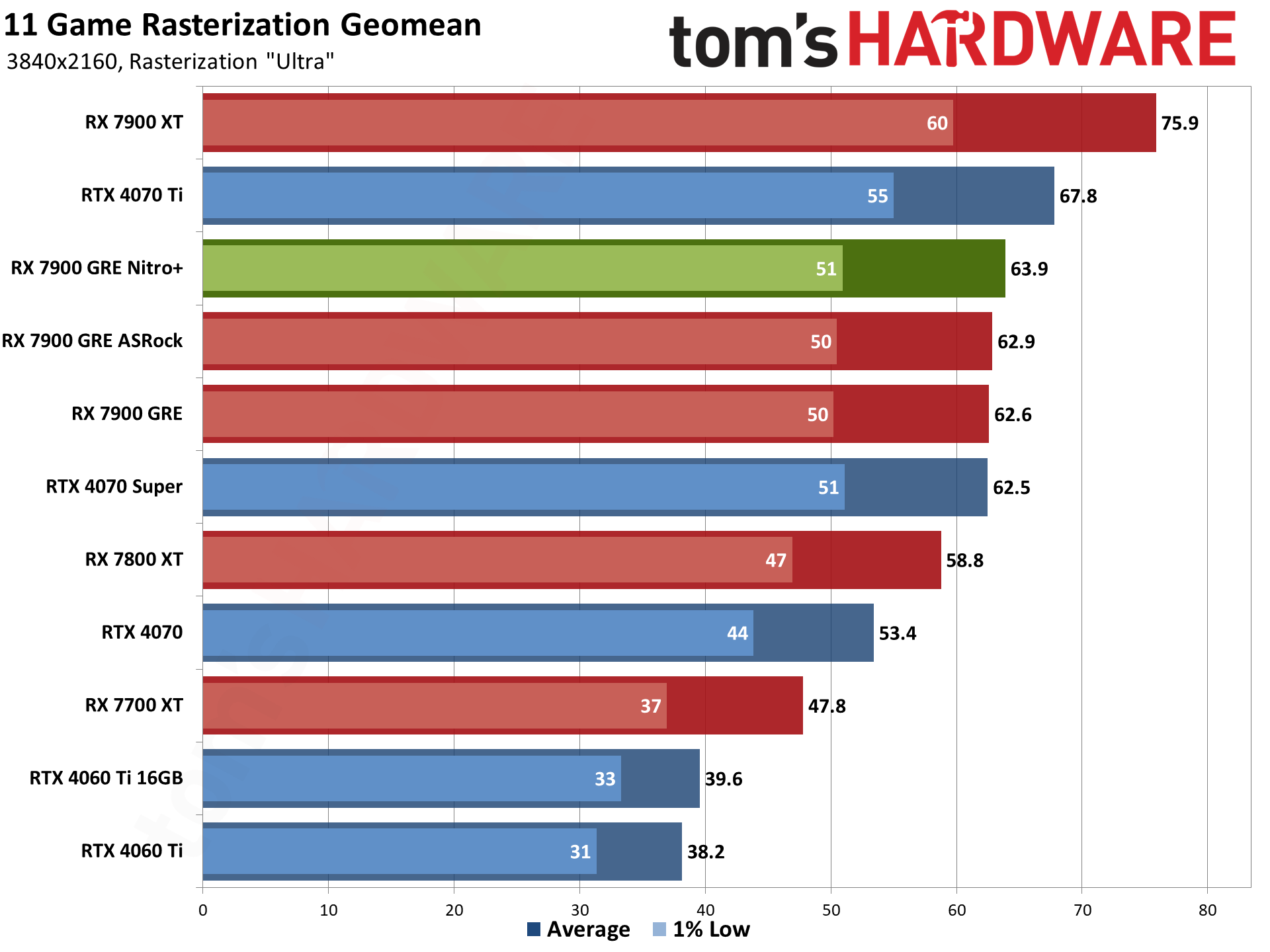
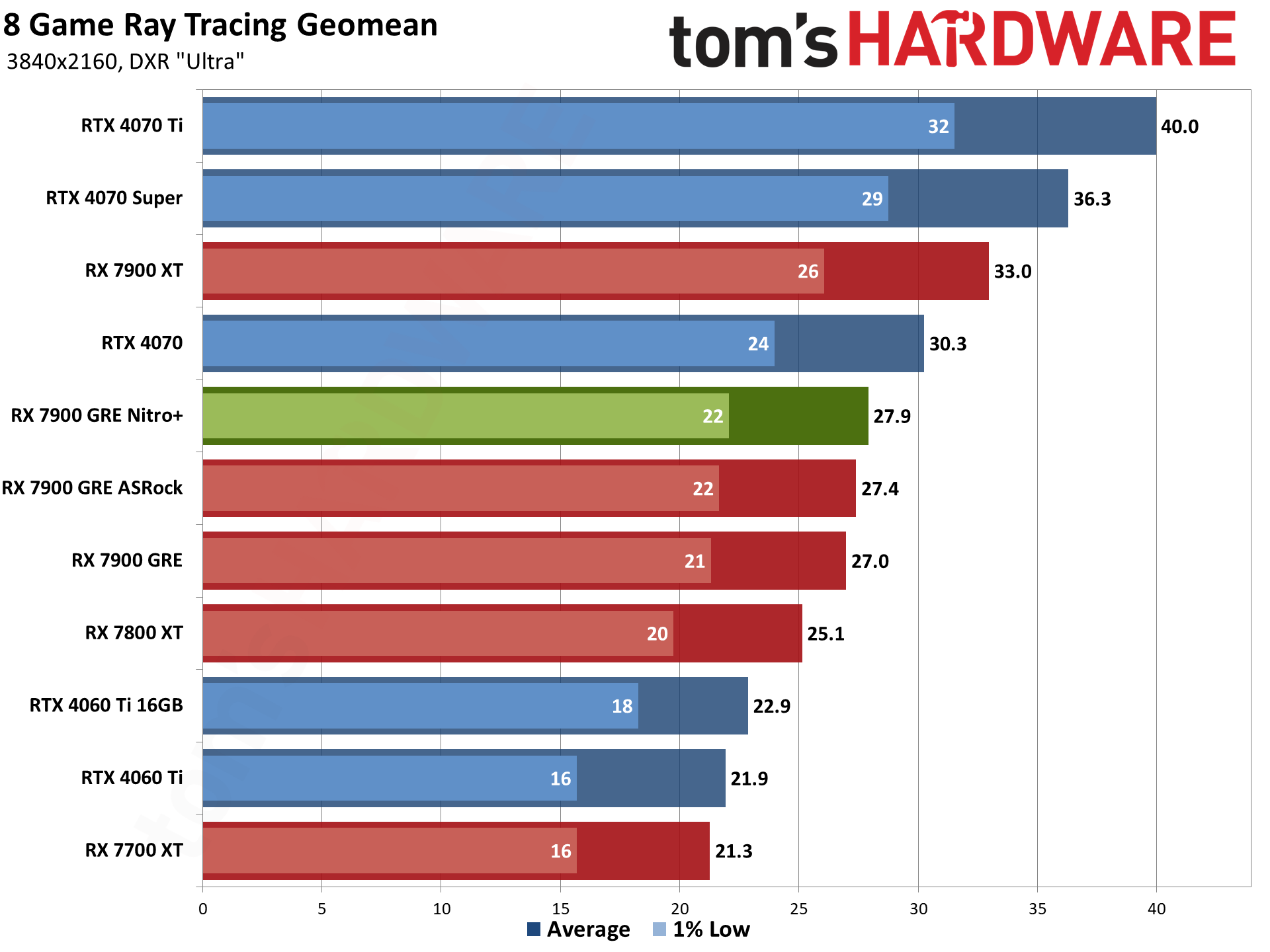
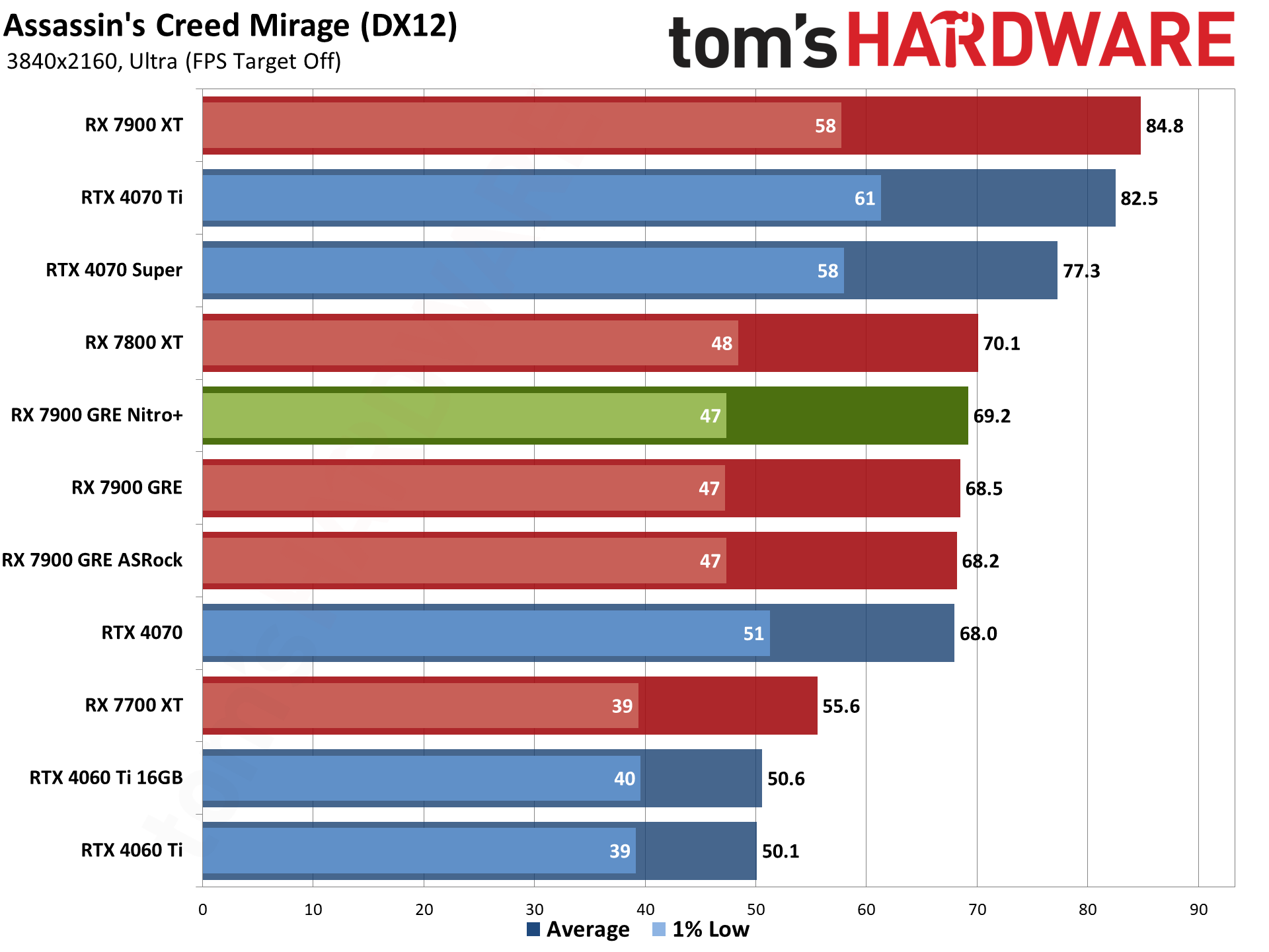

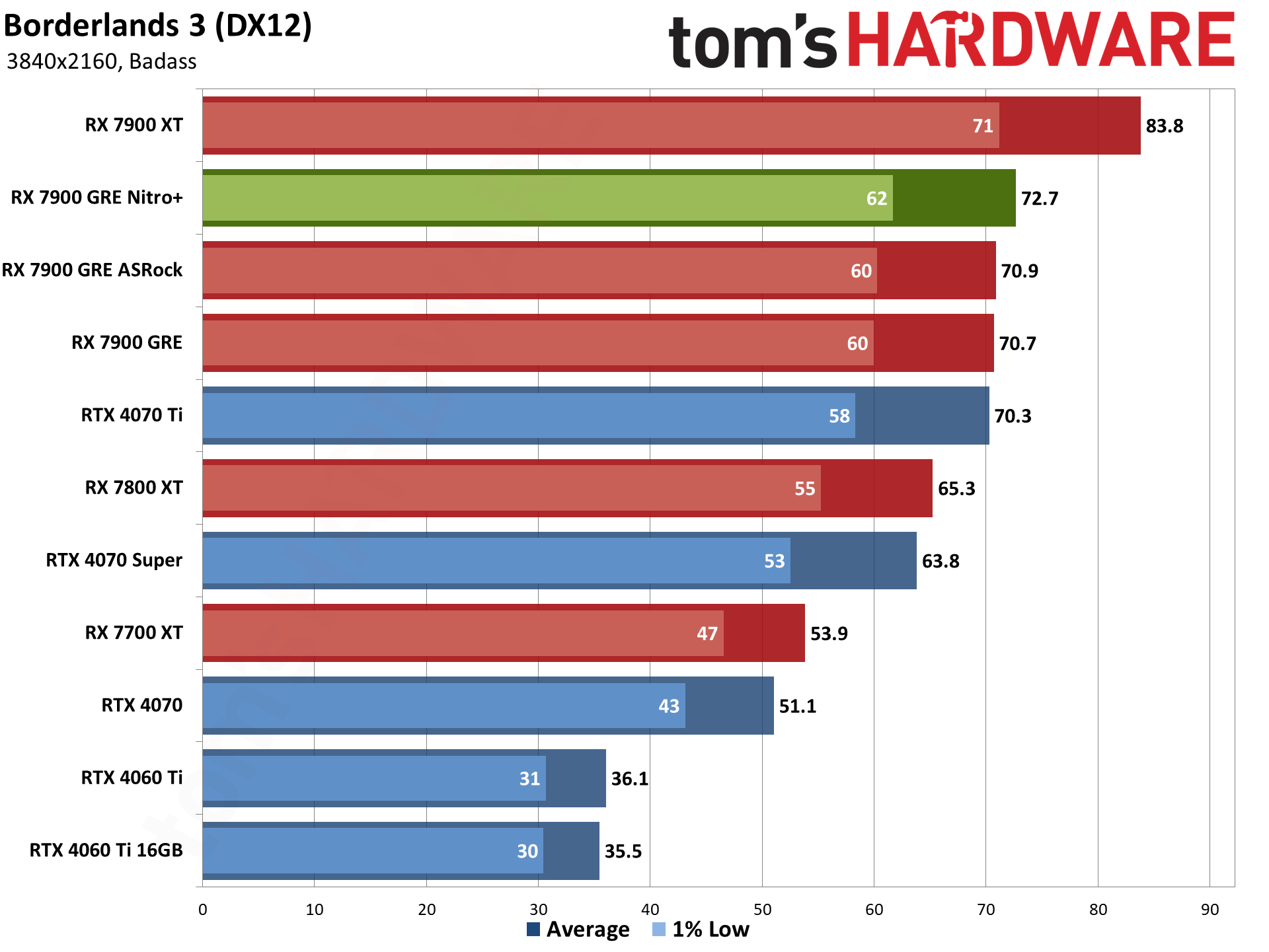
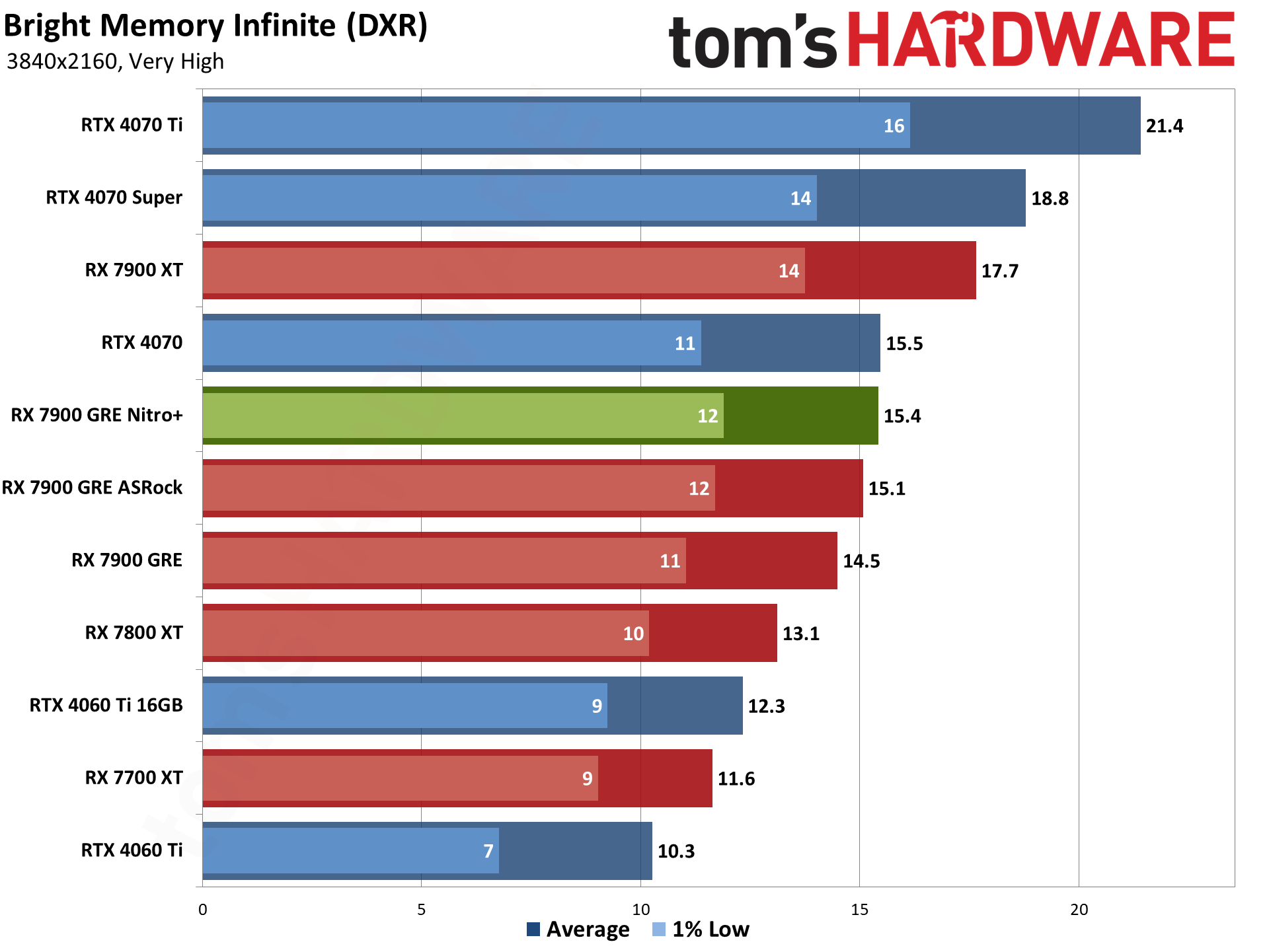
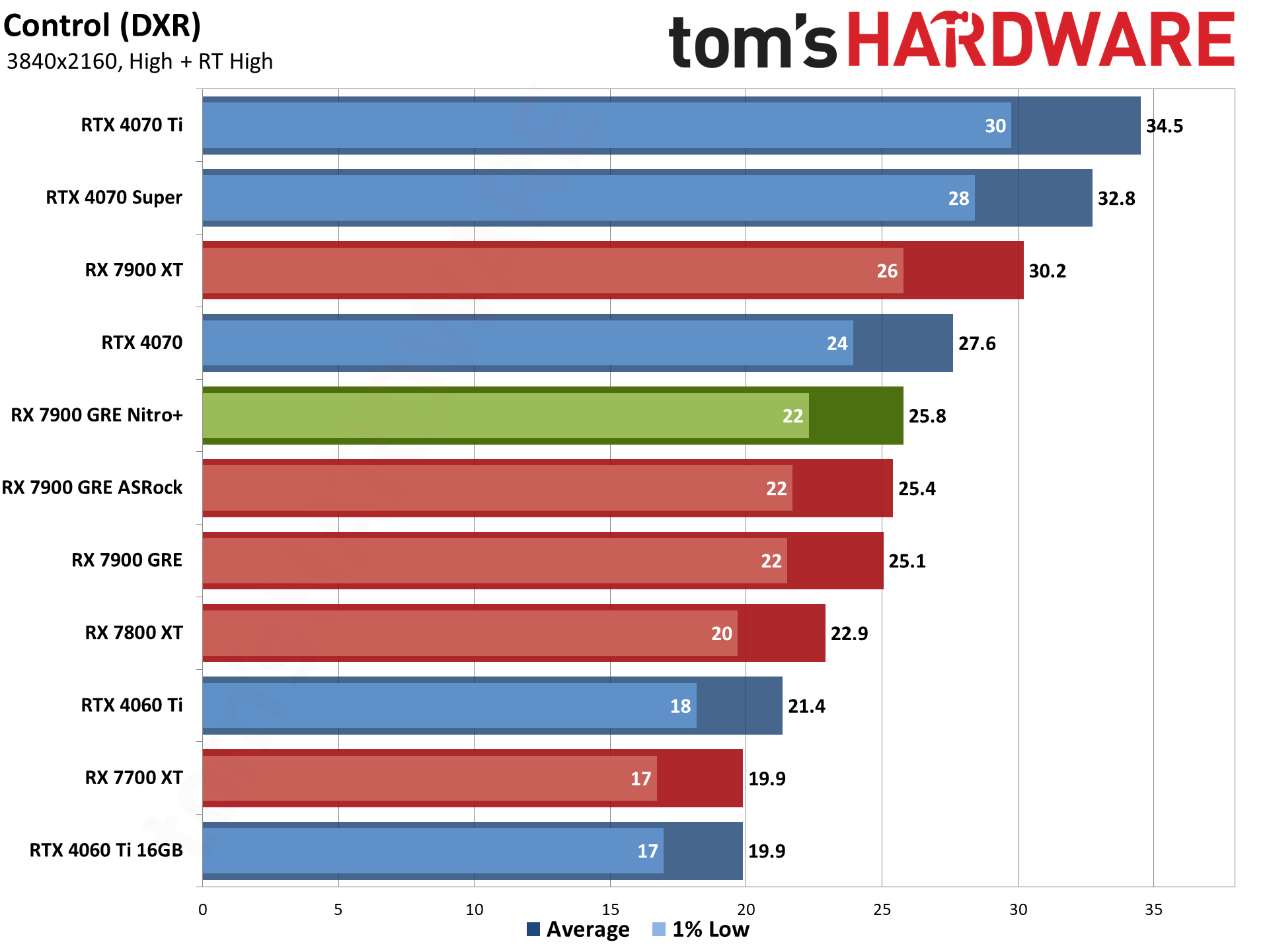


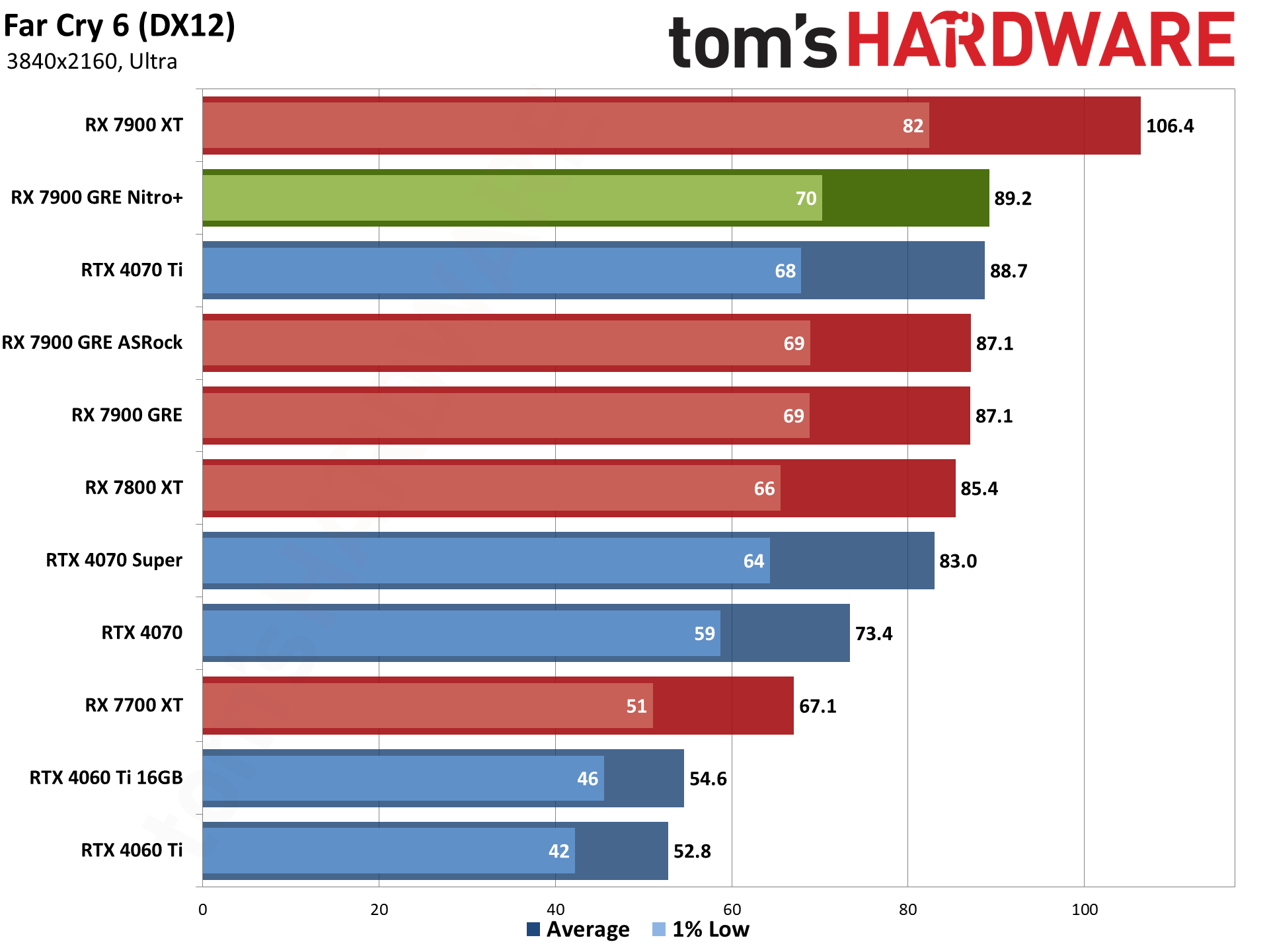
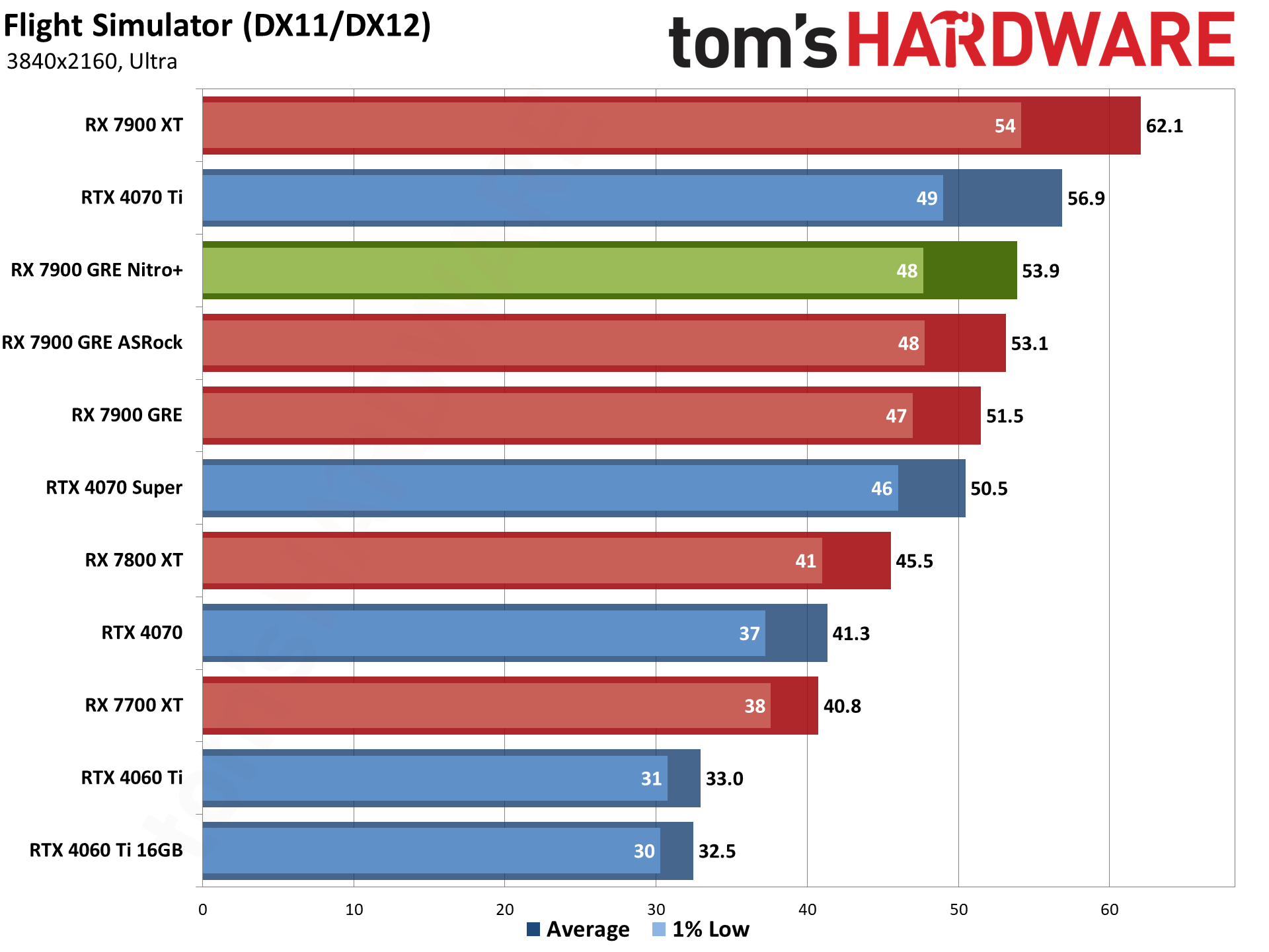
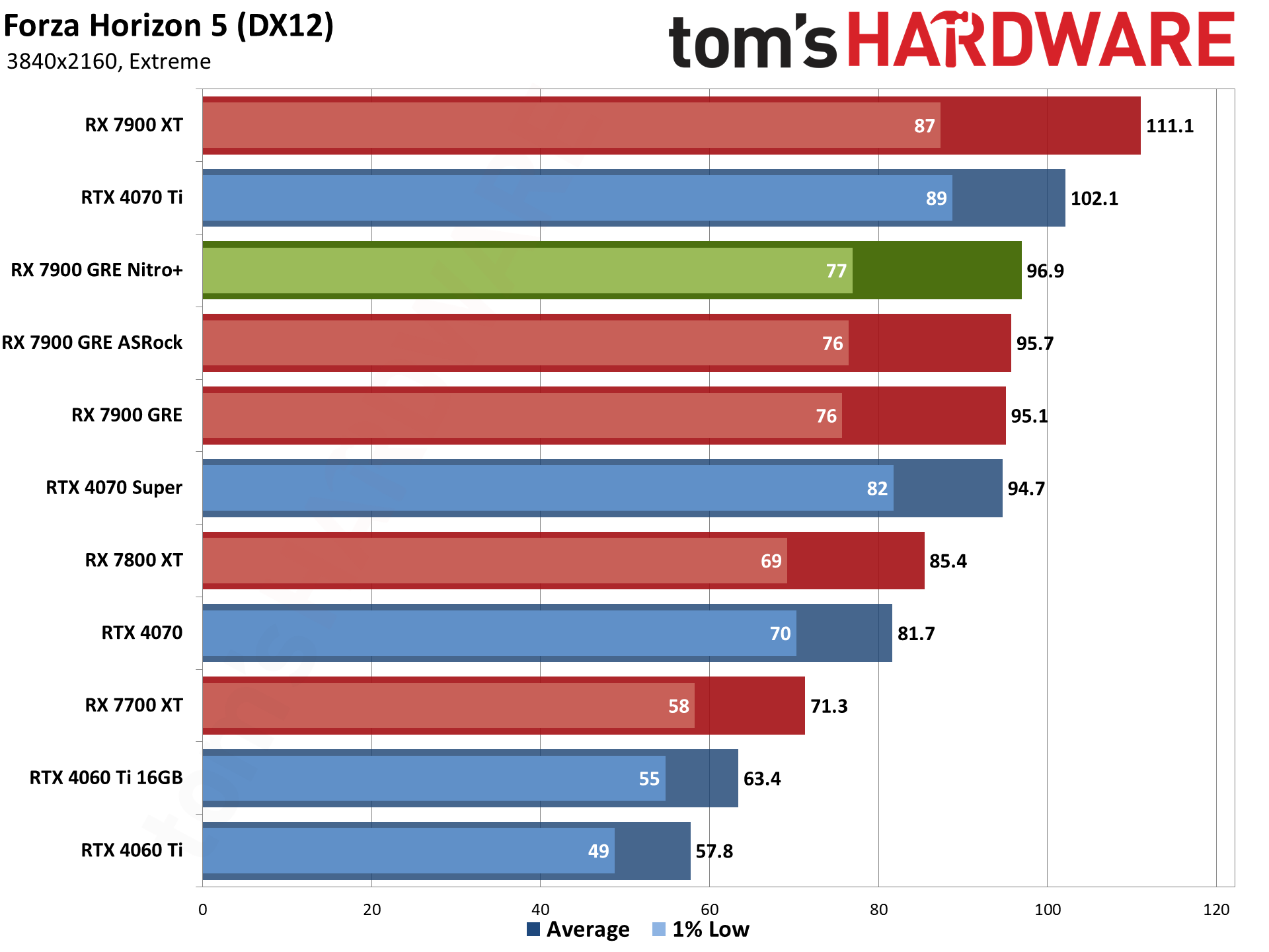
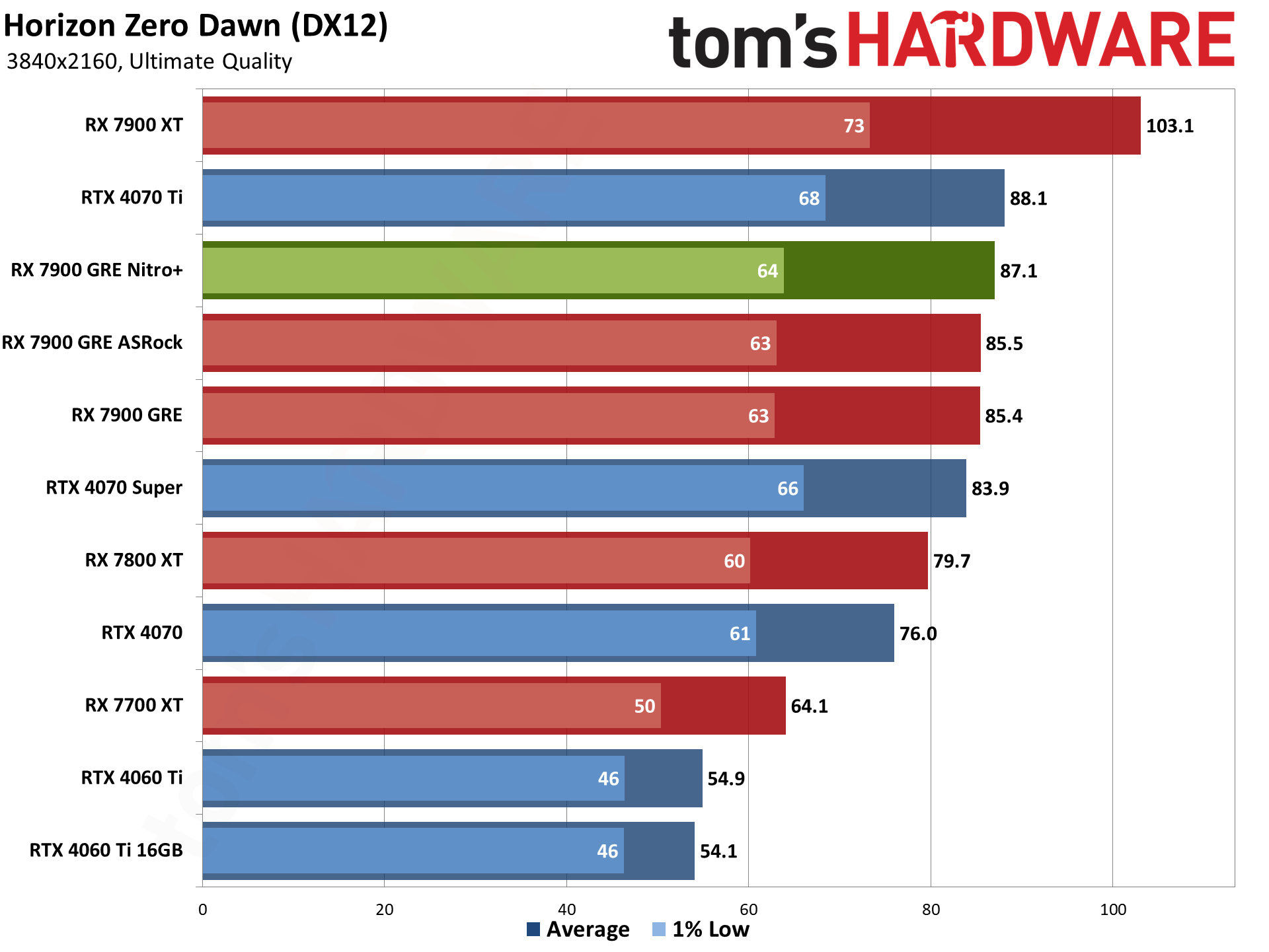

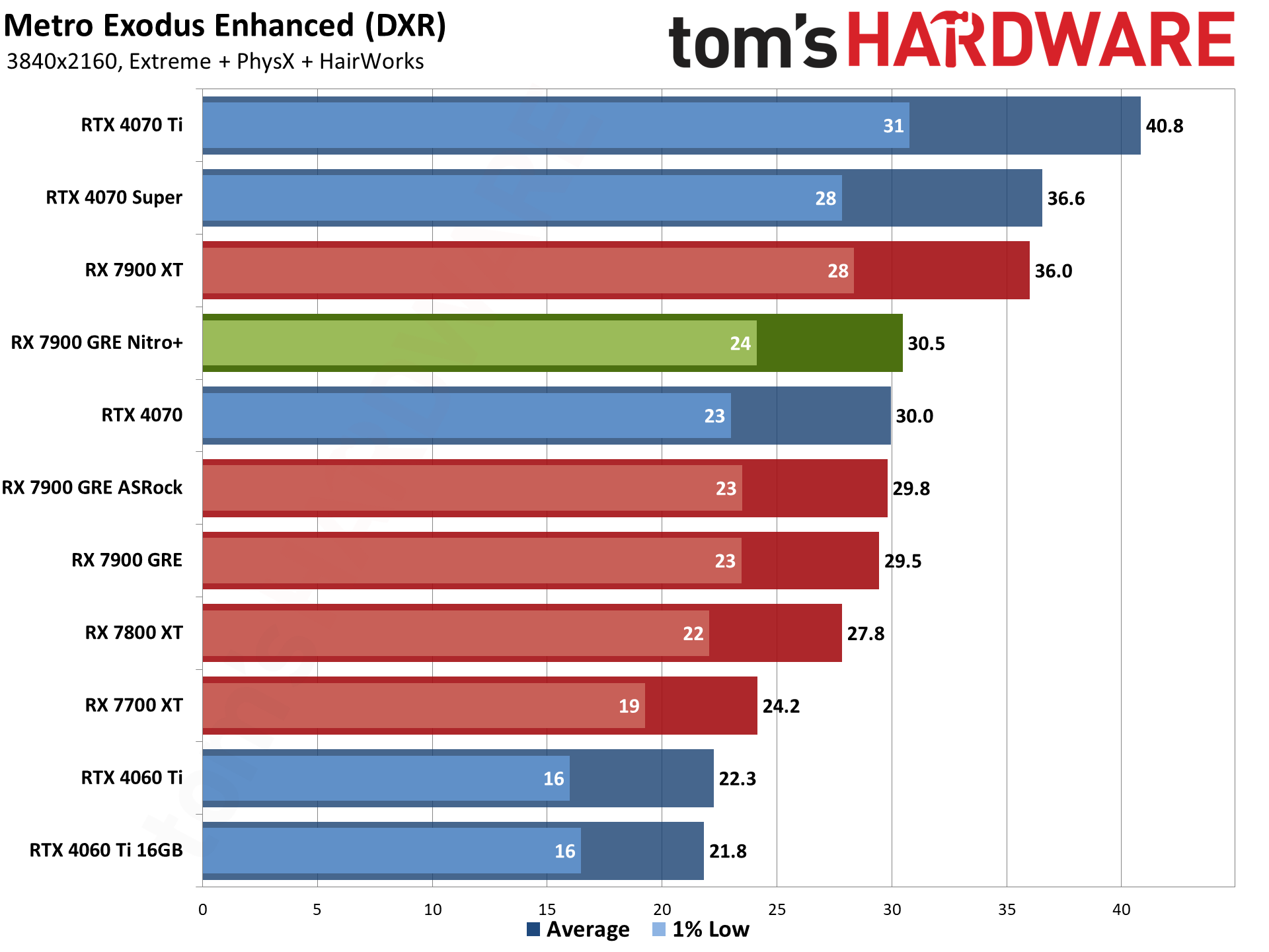
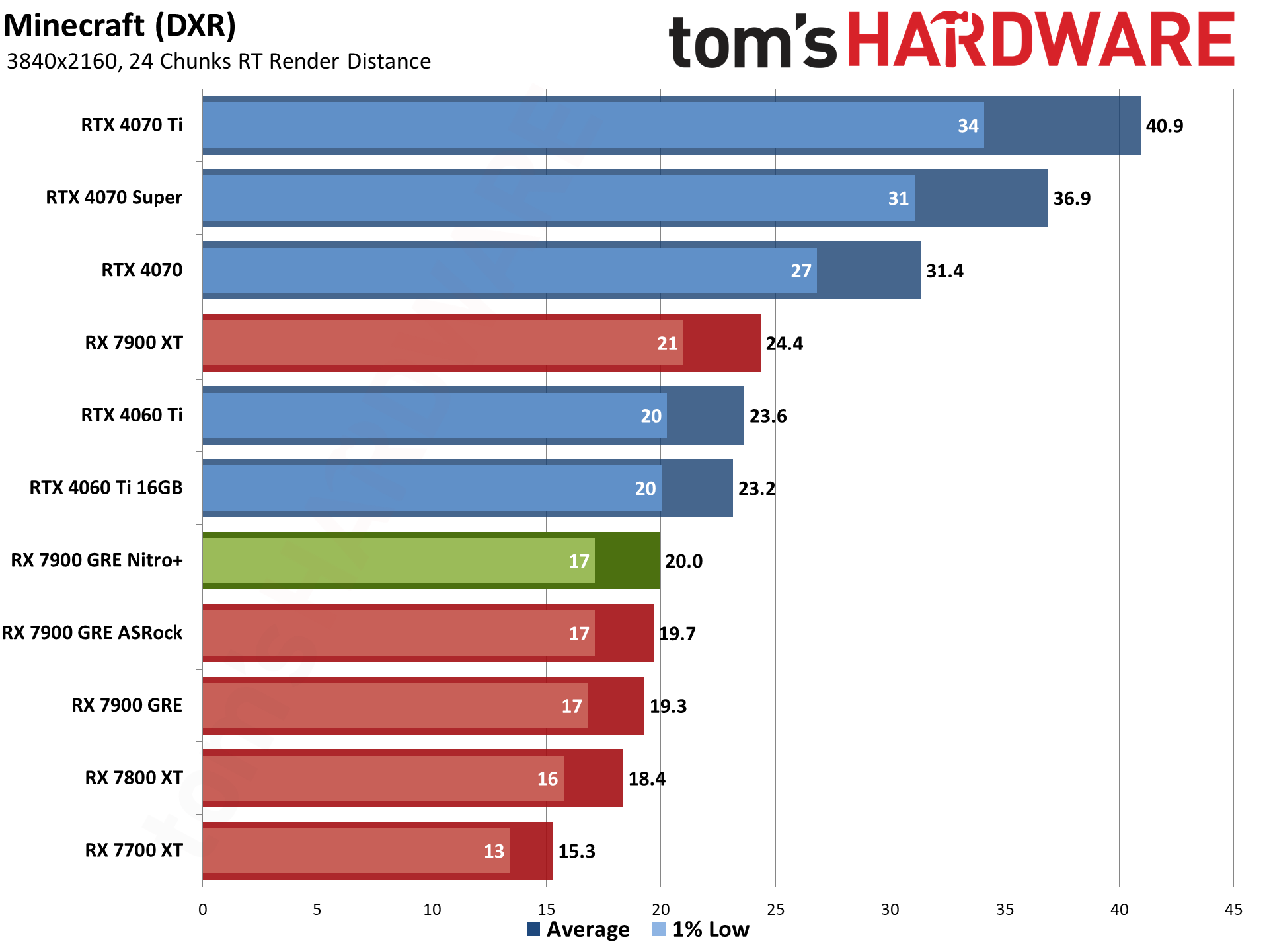

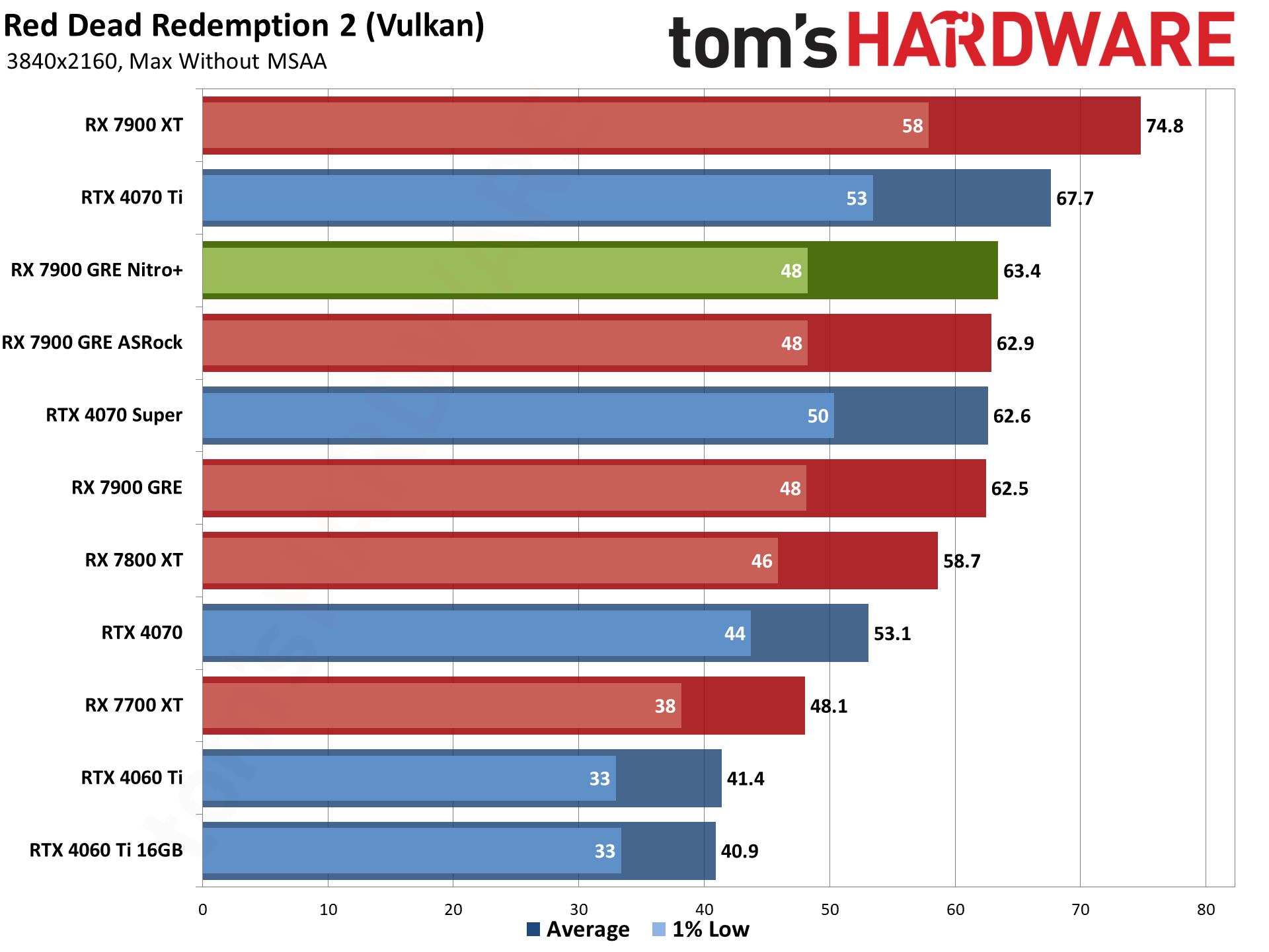


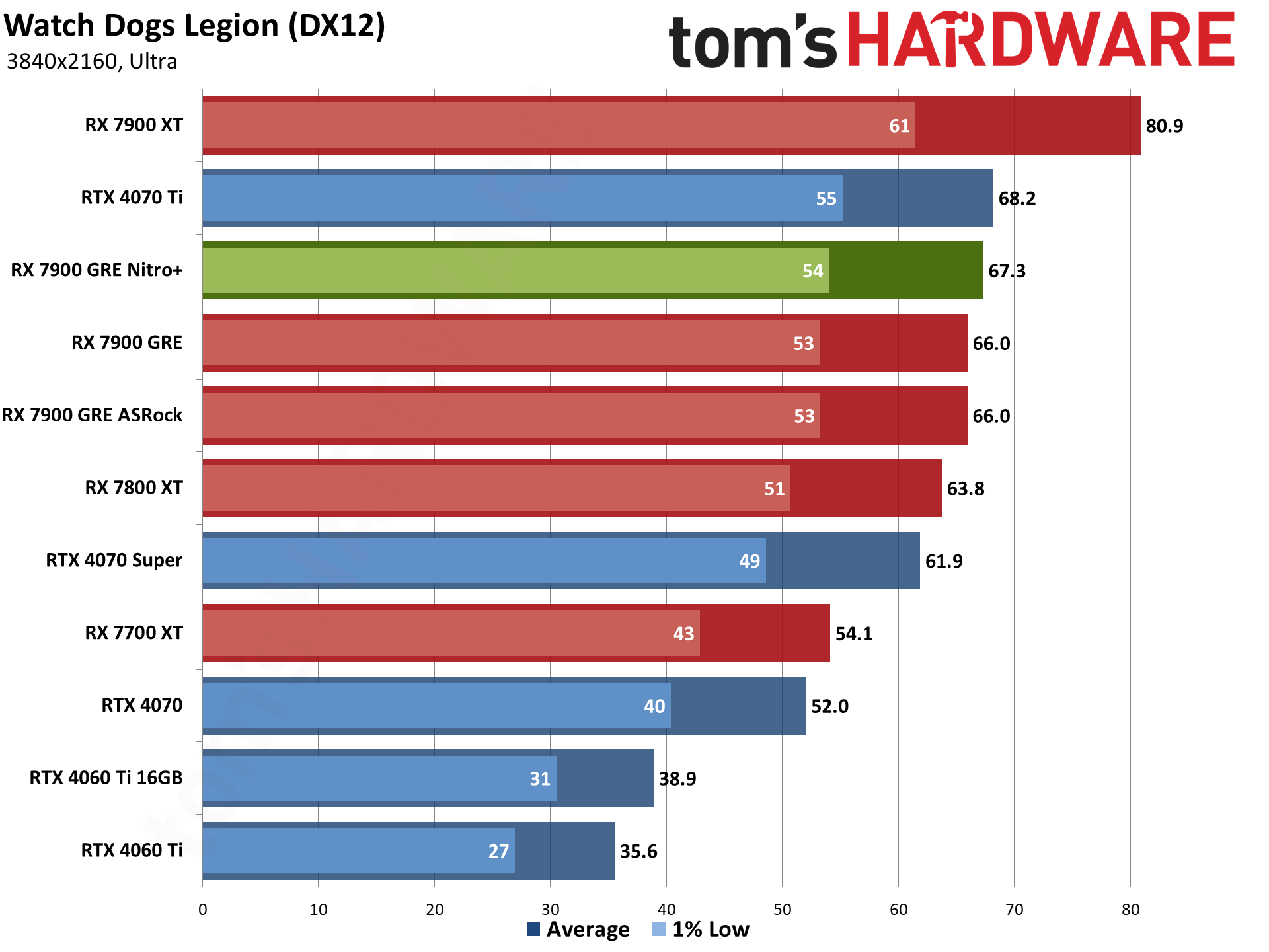
Last but not least, we have the 4K ultra results. The Nitro+ does see its largest margin of victory over the base model 7900 GRE... to the tune of a 2.6% overall. So again, pure performance isn't a great reason to opt for a more expensive card using the same GPU.
Many of the individual games fail to reach playable framerates on this level of hardware, at least without upscaling. Even with Quality mode upscaling, ray tracing games will often fall short of 60 fps. For the Nitro+, half of the DXR-enabled games fail to break 30 fps with our tested settings, and none of them break 60 fps. Diablo IV, with Quality mode upscaling, comes closest at 57 fps. In fact, only seven of the rasterization games break 60 fps on the Nitro+ card, which is the same count as the 7900 GRE Pulse.
Nvidia's competing RTX 4070 Super in this case does one better in terms of games breaking 60 fps, with Diablo IV using Quality upscaling hitting 73 fps. But the 4070 Super also only has two games where it fails to average at least 30 fps, Cyberpunk 2077 and Bright Memory Infinite (without upscaling in both cases). The RTX 4070 falls below 30 fps in three games (Control joins CP77 and BMI), but also only breaks 60 fps in four games (Assassin's Creed, Far Cry 6, Forza Horizon 5, and Horizon Zero Dawn).
In short, modern 4K gaming still generally requires picking up one of the fastest GPUs available, and perhaps even then you'll still need some level of upscaling. We're fine with that, particularly with higher quality upscaling solutions like DLSS. If you're playing older, less demanding games, 4K might run well, but maxed out settings in recent releases tends to be too much for midrange GPUs.
- MORE: Best Graphics Cards
- MORE: GPU Benchmarks and Hierarchy
- MORE: All Graphics Content
Get Tom's Hardware's best news and in-depth reviews, straight to your inbox.
Current page: Sapphire RX 7900 GRE Nitro+ Gaming Performance
Prev Page Sapphire RX 7900 GRE Nitro+ Next Page Sapphire RX 7900 GRE Nitro+ Power, Clocks, Temps, and Noise
Jarred Walton is a senior editor at Tom's Hardware focusing on everything GPU. He has been working as a tech journalist since 2004, writing for AnandTech, Maximum PC, and PC Gamer. From the first S3 Virge '3D decelerators' to today's GPUs, Jarred keeps up with all the latest graphics trends and is the one to ask about game performance.
-
NeoMorpheus I’m not sure if “no rgb fans” is a con.Reply
AMD marketing team has really done a mess with the naming convention.
Then again. Maybe its pure genius to dilute the 9x moniker.
